






Neuroscience Technology
Neuroscience Technology



Neuroscience Technology

Neuroscience Technology
Quantify Visual Comfort, Design the Effortless Vision You Desire

Quantify Visual Comfort, Design the Effortless Vision You Desire
Quantify Visual Comfort, Design the Effortless Vision You Desire
Quantify Visual Comfort, Design the Effortless Vision You Desire
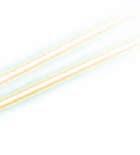

How Aussie practitioners can nail the consult to lift myopia control prescribing rates
Made In Japan Since 1939 03 WORKFORCE BOOST FOR WESTERN AUSTRALIA The first cohort from the state's new optometry school has entered the workforce 16 ONE OF THE INDUSTRY'S TRUE PIONEERS Prof Graham Barrett and the years-long quest to bring his latest IOL innovation to market 27
DOORS
SEIZING THOSE SLIDING
MOMENTS
AUSTRALIA’S LEADING OPHTHALMIC MAGAZINE SINCE 1975 APR 2024
Since 1939
Since 1939

Are you ready to be your own boss? You’d
look good in Specsavers
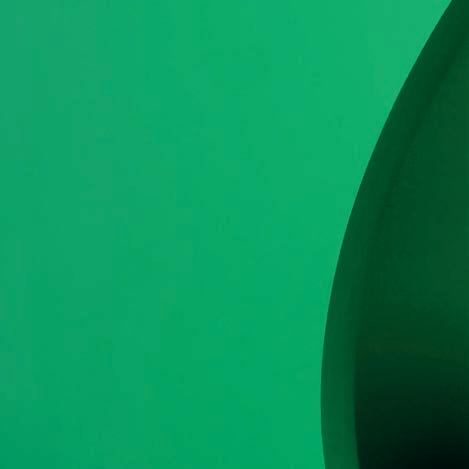
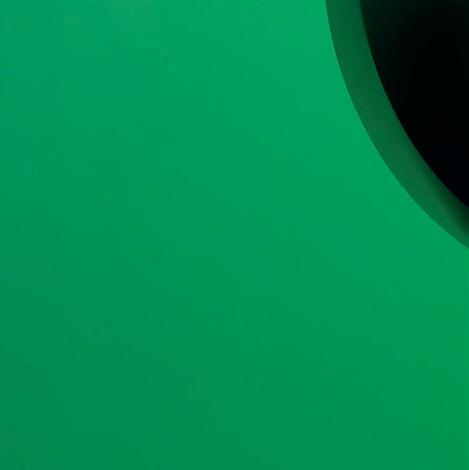


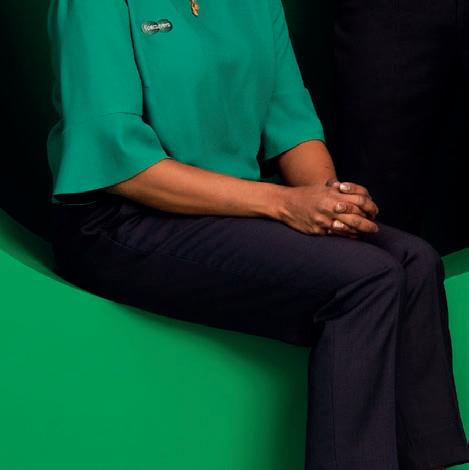
At Specsavers, each of our businesses is a locally-owned small business. With the partner that owns the store working in the store. If you’re looking for an opportunity to be your own boss and run your own business, you’ll shine at Specsavers. spectrum-anz.com/partnership-opportunities/
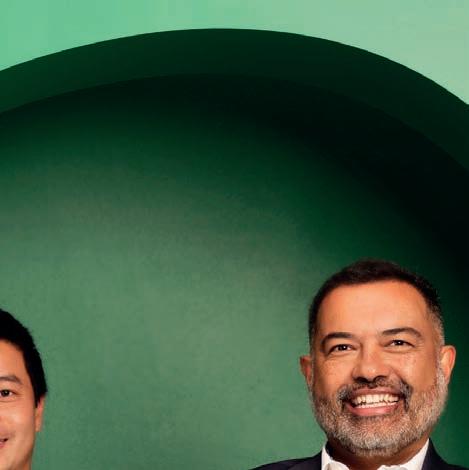




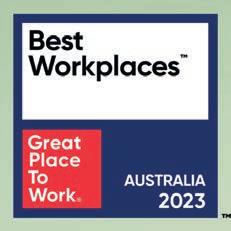



UWA OPTOMETRY SCHOOL BOASTS 100% EMPLOYMENT RATE IN FIRST GRADUATE COHORT
Forty new optometrists have entered the workforce as part of the inaugural graduate cohort from the University of Western (UWA) Australia optometry school, with every student securing employment and 90% staying to work in WA.
After commencing in 2021, UWA’s post-graduate Doctor of Optometry (OD) program is the country’s newest optometry training course, featuring an innovative curriculum design, outback and overseas clinical placements, and a unique collaboration with the Lions Eye Institute (LEI) as a founding partner of the program.
The three-year program saw its first set of graduates completing their education in December 2023. It’s hoped they – and future graduating cohorts – will alleviate
workforce pressures in WA that previously relied on graduates from the eastern seaboard. Meanwhile, Western Australians wishing to study optometry had to relocate interstate at a considerable cost.
Professor Garry Fitzpatrick, foundation head of optometry at UWA, told Insight that without an optometry course in WA previously, this led to a transient workforce.
“The UWA program is helping to address this issue and provide a more stable workforce for the future. In the inaugural graduating cohort of 2024, there were 40 graduates … with a 100% employment rate. The UWA program works with all optometry employers, ensuring that graduates have experience with all models of optometry and are well-equipped to succeed in their careers,” he said.

UWA’s post-graduate optometry program was established in 2021. Image: UWA.
“While the specific locations of employment for graduates are not tracked, the UWA program has seen 36 out of 40 graduates stay in Western Australia to practise optometry, with 25% practising in rural locations around Australia. This is a testament to the quality of the program and the opportunities available in the state.”
He added: “As of early 2024, the
program is thriving, with significant demand for enrolment. The program primarily attracts students from Western Australia usually from a biomedical science or medical science undergraduate degree background, but international enrolments are also growing, and we expect to average around 50 students per year.”
Fitzpatrick said the program had quickly established itself as an emerging leader in optometry education. One of the key factors setting the UWA program apart is the LEI collaboration, making it a joint venture between optometry and ophthalmology.
He said the UWA program sought to develop “socially responsible graduates” equipped to address the
continued page 8
MEDICARE TURNS 40 BUT IS IT TIME FOR A CHECK UP?
As the sector marked the 40th anniversary of Medicare, new statistics reveal the number of optometry services subsidised by the scheme increased almost 4%, with the profession’s high bulkbilling rate unchanged.
The latest figures, released on 19 February, show optometrists delivered 5,670,981 Medicare services in the Jul-Dec 2023 period, which was 215,226 more than the previous corresponding six-month period. This 3.9% rise bucks a national trend that saw overall Medicare services decrease from 228 million to 226.8 million (0.6%) over that time.
Greater demand for optometry is part of an ongoing trend. For example, in the 2019-2020 financial
year there were 9,197,934 Medicare-subsidised optometry services, but that rose to 10,938,784 – 1.74 million (or 19%) more services – in the latest 2022-23 figures, some of which may have been influenced by COVID-19 lockdowns.
Considering data like this, major optometry employers like Specsavers are concerned about a strained future workforce. A 2023 report it commissioned through Deloitte Access Economics showed the industry could expect a shortage of more than 1,000 optometrists over the next two decades, with deficits to be felt most in regional Australian communities.
A further analysis of the latest Medicare statistics shows in the Jul-Dec 2023 period total benefits
paid for optometry services reached $272.5 million, 7.8% above the $293.7 million the year prior.
And the bulkbilling rate remained high at 94%, with optometry second only to practice nurses (99%) on this metric. The optometry rate is consistent with statistics back to 2014-15 when there was a noticeable drop from the 97% rate after the removal of the ‘cap’ on fees optometrists could charge for Medicare-subsidised services (which Optometry Australia was successful in securing in 2015).
Other figures show the average patient contribution for those seeking Medicare-linked optometry services was $35.05 in the July to continued page 8

Find out what prompted Australian medical technology company Eyerising International to hit back against a University of Houston study into the safety of red light therapy for myopia management.
1975 APR 2024
AUSTRALIA’S LEADING OPHTHALMIC MAGAZINE SINCE
page 30
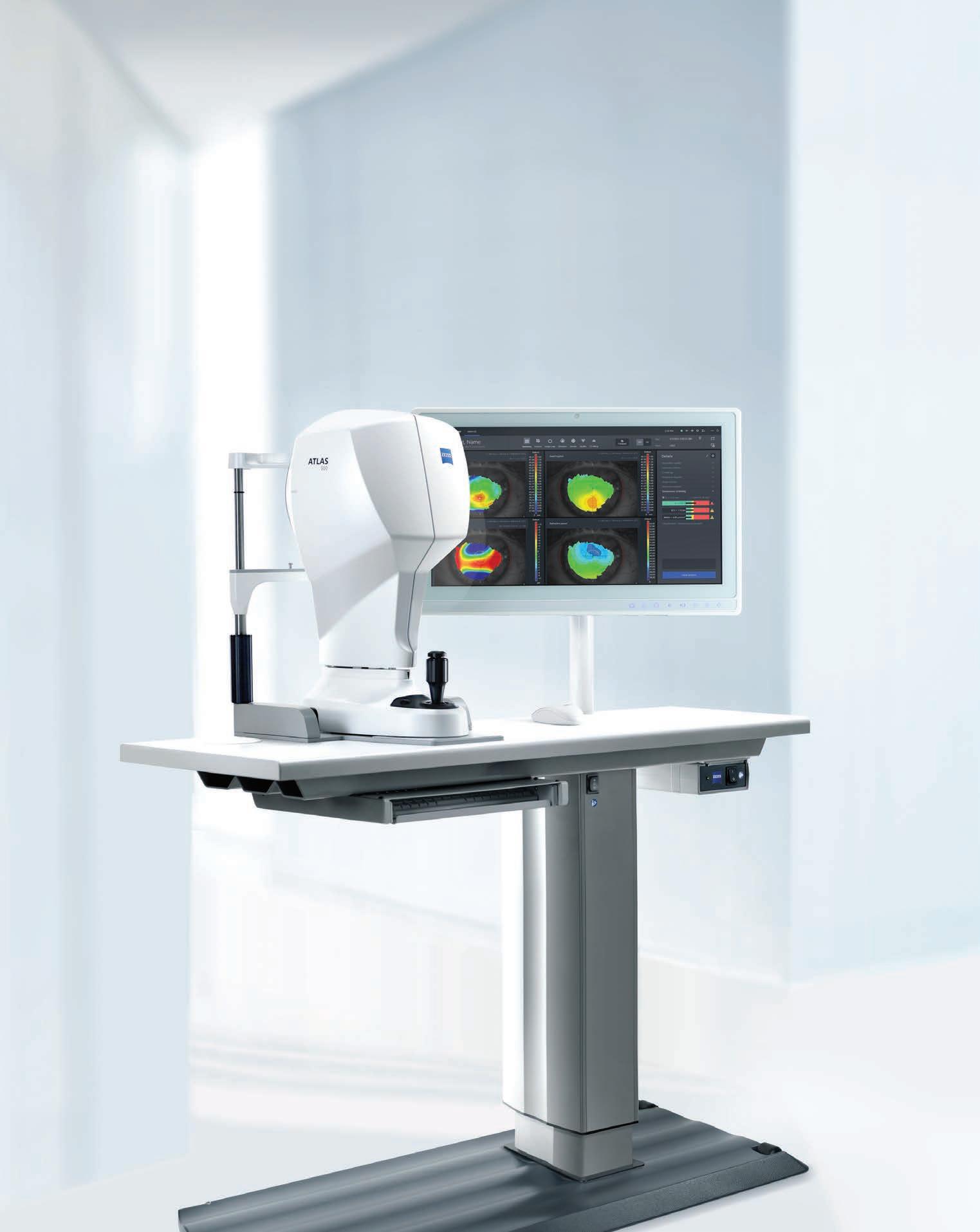
ZEISS ATLAS 500
Introducing the next-generation corneal topography system from ZEISS
• Precise corneal topography, pupillometry and dry eye assessment – all in a single device
• Optimised design with swivel-out measurement head and intuitive user interface
• Simple import of existing data from ATLAS ® 9000
zeiss.com/ATLAS500
ZEISS
AU: 1300 365 470
med.au@zeiss.com
NEW NEW
Carl Zeiss Pty Ltd, NSW 2113 AUSTRALIA. ©2022 Carl Zeiss Meditec AG. All rights reserved. See more. Do more. Multi-modality ocular surface analysis.

IN THIS ISSUE
FEATURES

STANDOUT SERVICE

HOYA’s new platforms helping independents offer an exceptional patient experience.
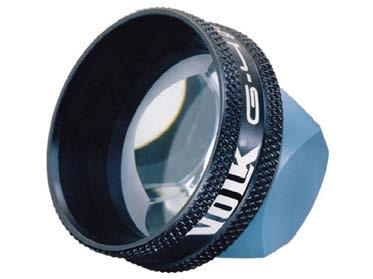
47
33
MYOPIA MATTERS
How optometrists can embed myopia control into their practice workflows.

A FINE ART
In this gonioscopy primer series, University of WA authors bust two lingering myths.
70
ADVERTISING BREACH
A UK optician’s marketing misdemeanor is a cautionary tale for Australian eye practices.

AN ENCOUNTER WITH ONE OF THE WORLD'S TOP EYE DOCTORS
Sometimes in this job there are opportunities you can’t pass up, especially when ophthalmology royalty becomes available for an exclusive interview about their latest innovation.
This edition we sat down with WA-based ophthalmologist Professor Graham Barrett – a man who should need no introduction but, in any case, is considered a pioneer in cataract surgery, starting with implanting the world’s first foldable IOL in 1983. Since then, he’s been influential in haptic design and developed some of the most widely used prediction formulae. Now, he’s completed the circle by developing an optical design that Rayner has incorporated into its RayOne EMV IOL.
Although there’s no free lunch in optics, on page 16 Barrett tell us this is as close as it gets. He has carefully calculated the ideal amount of positive spherical aberration to ensure patients have clear vision at multiple focal points, while negating the potential for visual disturbances. It’s also optimised for a major interest of Barrett’s – monovision.
With his busy schedule and the WA time di erence, our interview was conducted well after dark. But sometimes that is when you get people at their most candid. One could feel the sense of pride in his creation after many years trying to convince industry of his idea. It was clearly worth the wait, with Barrett praising Rayner for the way it has respected the essence of his concept.
We talked for close to an hour and he unexpectedly asked if I noticed his strong eye contact, despite being on a Teams call. Even though he's the consummate professional, I feared I was in for a reprimand. He then proceeded to demonstrate another fascinating project he’s been working on called iVi. The specially designed system works to improve video communication by restoring authentic eye-to-eye contact (visit myivi.com to see what I mean). Perhaps Barrett could leave his mark on the growing area of telemedicine too?
Inevitably the conversation turned to his future. Amid the latter part of his career, there’s little doubt Barrett would be proud of all he’s achieved but, as he alludes to, there’s another matter that requires more deep thought. The industry and patients across the world have much to thank Barrett for, and it’s exciting to think he's not finished yet. MYLES
INSIGHT April 2024 5
21
Editor
HUME
APRIL 2024 07 UPFRONT 09 NEWS THIS MONTH 67 ODA MEMBER PROFILE 68 OPTICAL DISPENSING 69 ORTHOPTICS AUSTRALIA 71 SOAPBOX 72 CLASSIFIEDS/CALENDAR 74 PEOPLE ON THE MOVE EVERY ISSUE
EDITORIAL

avaNTI DESIGN AUSTRALIAN EYEWEAR SINCE 1981 1800 338 812 Proudly Distributed by

Just as Insight went to print, THE OPTICAL COMPANY, part of allied health group Healthia, acquired all three Adelaide Eyecare (AEC) practices in Mawsons Lakes, Blackwood and Westbourne Park. AEC was founded in 1982, with husband and wife optometry duo Mr René Malingré and Ms Liz Capper assuming leadership in 2003. Now with 60 practices, it marks The Optical Company's first acquisition of 2024.
UPFRONT STAT
WEIRD
A Spanish TikToker has made a strange claim, stating that urine eye drops have improved her poor eyesight due to myopia and astigmatism. She said her vision was “remarkably improved” and referred to the concept of ‘urine therapy’ popularised by British naturopath John W. Armstrong in the early 20th century, news9live.com reported.
WONDERFUL
A penguin with cataracts at Birdworld in Surrey, UK, has made headlines for the relationship it has formed with another penguin who acts as its “guide bird”. The helpful animal, called 'Penguin', has bonded with ‘Squid’, the vision impaired three-year-old, often escorting her to food and round the enclosure.
WACKY
Adelaide Crows AFL veteran Rory Sloane has had surgery for a detached retina for the second time, after an incident at training. He su ered the same fate in 2021, and at the time noted the priority he places on his vision: “A detached retina is pretty serious,” he told AFL.com. “That is something I learnt pretty quickly; without getting the proper procedure and doing the recovery right, there could have been some real long-term e ects. That was the driving force for me – forget footy, your vision is for life.”
IN OTHER NEWS, the International Opticians Association (IOA) has partnered with the Australian-based Academy of Advanced Ophthalmic Optics (AAOO). It’s hoped the alliance will make superior optics education more accessible on a global scale. “The AAOO’s mission is to provide global leadership in the delivery of high-level education and research, utilising evidence based eyecare to optimise patient outcomes in practice. We are delighted to announce our collaboration with the IOA,” AAOO
founders Mr Grant and Ms Thao Hannaford said. FINALLY, the first international sustainability certification program for the eyewear industry was launched at MIDO. Known as CSE (Certified Sustainable Eyewear), the scheme will be overseen by the Italian Association of Optical Goods Manufacturers (ANFAO) and optical product certification institute Certottica. Available globally, it will certify glasses and their components including frame fronts, temples, lenses, small metal and plastic parts.
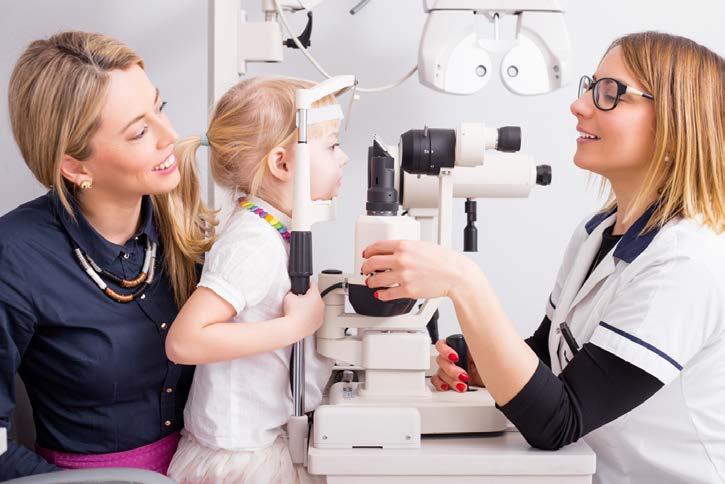
MYOPIA'S MOMENT
The minimum degree of myopia in a child to warrant an intervention is the lowest in Australasia (−0.64 ± 0.37 D), with practitioners in the region also rating their activity in myopia control 7.9 (± 1.2) out of 10. Image: Kaspars Grinvalds/Shutterstock.com. Page 27
WHAT'S ON
THIS MONTH AVC 2024
6 7 APRIL
Australian Vision Convention will be held at the Gold Coast Convention and Exhibition Centre for optometrist delegates from across the region. events@optometryqldnt.org.au
Complete calendar page 57.
NEXT MONTH OSHOW24
17 18 MAY
Australia’s boutique optical trade event returns to Sydney’s Hordern Pavilion, featuring education, awards, eyewear releases and new technology. events@odma.com.au
insightnews.com.au
INSIGHT April 2024 7 Published by: 379 Docklands Drive, Docklands VIC 3008 T: 03 9690 8766 www.primecreative.com.au Chief Operating O cer Christine Clancy christine.clancy@primecreative.com.au Group Managing Editor Sarah Baker sarah.baker@primecreative.com.au Editor Myles Hume myles.hume@primecreative.com.au Journalist April Hawksworth april.hawksworth@primecreative.com.au Commissioning Editor, Healthcare Education Je Megahan Business Development Manager Luke Ronca luke.ronca@primecreative.com.au Client Success Manager Salma Kennedy salma.kennedy@primecreative.com.au Design Production Manager Michelle Weston michelle.weston@primecreative.com.au Head of Design Blake Storey Art Director Bea Barthelson Subscriptions T: 03 9690 8766 subscriptions@primecreative.com.au The Publisher reserves the right to alter or omit any article or advertisement submitted and requires indemnity from the advertisers and contributors against damages or liabilities that arise from material published. © Copyright – No part of this publication can be reproduced, stored in a retrieval system or transmitted in any means electronic, mechanical, photocopying, recording or otherwise without the permission of the publisher.
STUDENTS EQUIPPED FOR DIVERSE PATIENT NEEDS
continued from page 3
diverse needs of patients.
To achieve this, UWA senior lecturer Mr Neilsen De Souza said students undertook clinical placements and clinical rotations in various settings, working with di erent patient populations.
“One of the strong features of our program is the opportunity for clinical rotations across Western Australia and Australia. This includes rotations that focus on providing optometry services to Aboriginal and Torres Strait Island people,” he said.
“There are also placements in international locations such as India, Hong Kong, the United States, Uganda, Singapore, Malaysia, and Vietnam. These clinical rotations provide the OD students with valuable hands-on experience and exposure to a diverse range of clinical settings and patient populations.”
Shortly after commencing the program, UWA opened a new purpose built UWA optometry facility in June 2022. In addition, a public clinic called the Eye Health Centre of Western Australia has been launched and attached to the optometry facility.
Fitzpatrick said establishing the Eye Health Centre of Western Australia teaching clinic would allow the program to develop collaborative care clinics for chronic eye diseases, glaucoma, and other complex ocular conditions and “produce top-quality optometry graduates for years to come”.
UWA is also developing new services within the public sector, including a public contact lens specialty clinic for pensioners and the underprivileged, child eye health programs, aged care programs, and a refugee clinic.
A CONTEMPORARY CURRICULUM
Another unique aspect is a UWA-initiated and funded “hub and spoke model” creating a “very rich rural and remote and cultural experiences” for optometry students, Fitzpatrick said.
On Country, eye health centres acting as ‘hubs’ are led by local Aboriginal Community Controlled Health Organisations (ACCHOs), with UWA employing a permanent onsite academic clinician at each hub in association with the region’s University Department of Rural Health (UDRH). UWA now has eye health hubs in Darwin, Geraldton, Broome, Bunbury and Karratha.
Associate Professor Khyber Alam, course director, said cultural safety was a major focus of the curriculum, and students were actively involved in delivering care to First Nations people in those locations.
“This hands-on experience helps students develop cultural safety and sensitivity, which are essential skills for practising optometrists in today’s multicultural society,” Alam said.
The program has also established a rural presence to provide continuity of care and fill gaps in service delivery. This includes conducting research and health promotion activities in these communities.
“The OD program prides itself on its contemporary curriculum, which is designed to prepare students for the challenges of modern optometry practice,” Alam said.
“Our teaching philosophy is rooted in the understanding of constructive alignment, which ensures that our curriculum, learning activities, and assessment methods are

“THE PROGRAM PRIMARILY ATTRACTS STUDENTS FROM WA USUALLY FROM A BIOMEDICAL SCIENCE OR MEDICAL SCIENCE UNDERGRADUATE DEGREE BACKGROUND, BUT INTERNATIONAL ENROLMENTS ARE ALSO GROWING.”
GARRY FITZPATRICK, UNIVERSITY OF WESTERN AUSTRALIA
all clearly aligned with the professional competencies to support student learning outcomes e ectively.”
Alam said a key feature of the program was the use of interactive teaching approaches that are engaging and e ective in developing critical thinking and problem-solving skills.
“As a professional postgraduate program, our teaching materials are evidence-based, ensuring that students are exposed to the latest advancements and research in the field of optometry,” he said.
“We believe in the importance of integrating multiple perspectives in learning, as highlighted by Kahn and Agnew (2017), and strive to create a learning environment where di erences are celebrated and valued. This approach is reflected in our curriculum design, which includes a balance between subject-centred, learner-centred, and problem-centred approaches.”
Optometric research has also embedded itself in the program, with Professor Allison McKendrick appointed in November 2022 as the UWA/Lions Eye Institute chair of optometry research.
“With UWA being one of the top research institutes in the world, it’s a given that research will be a key focus of the OD program, with specialised researchers in glaucoma, inherited retinal disorders, vision loss, anterior eye diseases, refractive errors, health economics, health and medical education, public health and general clinical translational research,” Fitzpatrick said.
“Professor McKendrick has had amazing career and more than 20 years’ research experience related to vision and visual disorder.”
OPTOMETRY CONSULT $30 MORE THAN MEDICARE FEE
continued from page 3
December 2023 period, a 3.5% hike on the year prior.
Meanwhile – marking four decades since Medicare’s inception in 1984 – Optometry Australia CEO Ms Skye Cappuccio said the organisation was proud of its advocacy over the years that ensured optometrist consultations were claimable under Medicare. This has meant Australians can have their eyes checked regularly by their local optometrist at little or no cost.
“However, Medicare’s 40th anniversary is an appropriate time to consider how our universal public health system can be
strengthened so that it continues to be fit-for-purpose to meet the challenges of an ageing population, an increasing prevalence of chronic health conditions, and ongoing advances in health technologies,” she said.
“The good news is that we know what the problems are, and we also largely know what is needed to fix them. The test for everyone with a stake in the health system is to have the courage to recognise that addressing the issues that are holding us back will deliver better health outcomes for patients and longer-term financial sustainability for the broader health sector.”

Medicare was established in 1984.
Image: Robyn Mackenzie/ Shutterstock.com
Ahead of the Federal Budget expected in May 2024, in its 2024-25 pre-Budget submission, OA called for a comprehensive, independent review of Medicare scheduled fees for optometric items to ensure they aligned with the true cost of providing quality eyecare. OA’s own analysis indicates the actual cost of providing a comprehensive consultation is more than $30 more than the Medicare scheduled fee. It also urged the government to increase the optometric domiciliary loading to $85.00 per visit (paid proportionally for multiple patients) to ensure the ongoing provision of timely and a ordable access to eyecare for elderly Australians in aged care.
8 INSIGHT April 2024
NEWS
AUSSIE BIOTECH WORKING TO BRING UNSW'S MACULAR DISEASE EYE DROP TO MARKET
A UNSW-developed molecule that could be administered via an eye drop for neovascular age-related macular degeneration (nAMD) is being commercialised by clinical-stage Australian biotechnology company Filamon Limited which hopes to have the therapy in clinical use within three years.
On 12 February, the company announced a $2.4 million Federal Government grant as part of the Department of Industry Cooperative Research Centres Projects Grant scheme to fast-track the potentially self-administered drug.
A year ago, Filamon joined forces with UNSW where the prospective treatment – based on the molecule BT2 – has been developed during the past eight years to overcome several hurdles with the current standard of care, intravitreal anti-VEGF injections.
Filamon CEO and chairman Dr Graham Kelly told Insight the team of UNSW scientists had been looking at whether it was possible to target more of the dozens of di erent genes involved in nAMD, rather than VEGF alone.

The aim has been a more potent drug than aflibercept (Eylea) that works in more patients and stops, rather than slows, the disease process. BT2 is reported to have already shown superiority to current treatments in animal models of nAMD.

“Working with WEHI (Walter and Eliza Hall Institute of Medical Research) in Melbourne, the UNSW team came up with BT2 which switches o about 12 di erent genes involved in the wet AMD disease process, including the all-important one – VCAM1. We think it is having this multiple e ect via gene transcription factors,” he said.
Kelly said Filamon became involved with the project 12 months ago when the IP was o ered due to the company’s interest in creating drugs based on gene transcription. This is considered a novel approach o ering the potential of both greater potency and safety compared to direct inhibition of activity of single gene products such as VEGF.
“The most exciting aspect of BT2 is its potential as a small molecule to be developed as a topical (eye dropper) dosage form,” Kelly said.
Being a small molecule, BT2 may be ideal as an eye drop formulation.
“The aim is to be in the clinic with an eye dropper dosage form within three years.”
If successful, this is thought to be a major advantage by overcoming the treatment burden of regular intravitreal injections where about 40% of patients withdraw from treatment after the first year. It’s also hoped BT2 could o er greater cost-e ectiveness, with manufacturing costs “a fraction of the current large molecule drugs”.
“Drugs to treat wet AMD currently cost the Australian Government ~$620 million per annum. However, the true cost to the nation of wet AMD is multiples of that when you take into account the cost of caring for people with vision impaired from this disease because current treatment fails them,” Kelly said.
“The University of NSW has come up with an experimental drug that outperforms current treatments, at least in the laboratory, in a number of key areas. Our task now is to translate that advantage into stopping more people from becoming blind by o ering a product that is easier to use and works better."


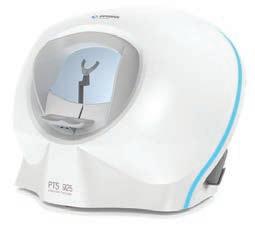




See us at the O-Show. BoothEquipment 03
Image: Svitlana/stock. adobe.com.
IN BRIEF
MYOPIA LENS
Australian lens manufacturer CR Labs has introduced its new MyoStock lens to provide a cost-e ective solution for myopia management. According to the company, the lens leverages hexagon-implicated defocus segments (HIDS) technology and features a clear viewing zone surrounded by hundreds of evenly distributed hexagonal segments that promote peripheral myopic defocus. This approach aims to slow down eye elongation, a key factor in myopia progression. MyoStock also adopts high-index materials, making the lens lighter and more visually appealing, a blue light filter and ultra-super, hydrophobic (USH) coating, making it resistant to fingerprints, oils, and scratches, and providing hydrophobic properties for easy maintenance.
KEEPSIGHT UPDATE
The KeepSight eye check reminder program has marked a major milestone in the prevention of diabetes-related eye complications as it registered its 400,000th participant. The program, delivered by Diabetes Australia in partnership with the ophthalmic sector, makes it easier for people with diabetes to remember when they are due to get their eyes checked and help detect eye problems that can lead to vision loss. Diabetes Australia Group CEO Ms Justine Cain said the milestone was significant in the fight to maintain the sight of people living with diabetes. “This program is changing lives by supporting people with diabetes to proactively look after their eye health and prevent complications. You don’t have to look far to see that this program is changing the lives of people with diabetes,” she said.
ELECTRIC EYEWEAR
ZEISS Vision Care has acquired an intellectual property (IP) portfolio from Mitsui Chemicals (MCI) that includes a suite of patents for electronically focusing eyewear. The move has opened new opportunities for “electro-active lenses and spectacle frames”. MCI’s IP portfolio includes several patents for electric functionality in tailored lenses and frame electronics. ZEISS said this investment aligned with its aim to enhance the user experience and push the boundaries of technological innovation within the eyewear sector. While financial details of the transaction remain undisclosed, ZEISS said the patents would make invaluable contributions to its ongoing research and development initiatives as well as to its licensing business.
HISTORIC GRANT PROPELS BIOENGINEERED CORNEA TO COMMERCIALISATION
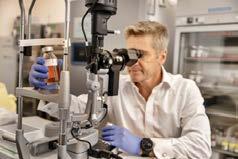
The Federal Government has awarded a staggering $35 million to BIENCO, a group of Australian researchers developing bioengineered corneal replacement tissue. The grant is believed to be the largest for eye research in the country’s history, with hopes that one donor could provide treatment for 30 people in future.
Sydney ophthalmologist Professor Gerard Sutton is leading the world-first consortium of clinical, scientific and governance experts from the University of Sydney, University of Wollongong, University of Melbourne, Queensland University of Technology (QUT), the Centre for Eye Research Australia (CERA), and the NSW Organ & Tissue Donation Service (OTDS).
The bioengineered corneal replacement tissue under development incorporates cells and tissue donated by deceased donors, and is hoped to help address demands and shortages for donated corneal tissue.
Sutton, from the University of Sydney, said the MRFF grant would propel BIENCO
towards commercialisation of its operations.
"We believe this is the largest grant for eye research in Australia’s history,” said Sutton, corneal specialist at the University of Sydney’s Save Sight Institute and previous medical director of the NSW Tissue Bank, OTDS.
“BIENCO was launched in 2021 by this group of Australian researchers to create corneas that will prevent people becoming needlessly blind throughout the world.
Thanks to our consortium partners, we’ve been able to rapidly develop word-first solutions for corneal blindness."
The QUT BIENCO node, led by Professor Damien Harkin, will provide critical expertise in methods for the isolation, cultivation and validation of donor corneal cells.
“At present, there is only one donor cornea available globally to treat every 70 people requiring a corneal transplant,” he said.
“Through laboratory cultivation we estimate that a single donor cornea could provide treatment for 30 people.”
More than 2,000 Australians require a corneal tissue transplant annually.
SPECSAVERS HERALDS LARGEST GRADUATE COHORT IN 2024
Specsavers has set another record graduate intake in 2024, with 246 joining the business. It's also the largest single intake the business has accepted into its Graduate Program since its inception, a 6.5% increase on the previous year.
Breaking down the numbers, 206 graduates have assumed roles across Australia in both metro and regional stores, and 40 have joined the New Zealand business.
“The Specsavers Graduate Program is an unrivalled industry development program that provides our graduates with the very best possible start to their careers,” said Specsavers professional recruitment director Mr Raj Sundarjee.
“The size of our intake, both this year and in previous years, shows that Specsavers continues to be the employer of choice for young optometrists. And it’s no surprise, considering we have been listed as an accredited Great Place to Work for the past three years running, and were named among the Top 10 Best Places to Work in Australia last year.”

This year, Specsavers also welcomed 23 optometrists from the first graduating cohort from University of Western Australia (UWA)'s three-year postgraduate Doctor of Optometry program, established in 2021.
“We are thrilled that more than half the graduating class from UWA have chosen Specsavers as the place they want to start their careers, and we know they will continue to ensure that we are able to provide the best eye health outcomes to the people of Western Australia for years to come,” Sundarjee said.
10 INSIGHT April 2024
Prof Gerard Sutton is leading the world-first consortium. Image: Stefanie Zingsheim/ University of Sydney.
The graduates were welcomed at the annual Specsavers Graduate Induction at Crown Conference Centre in Melbourne. Image: Specsavers.
NEWS


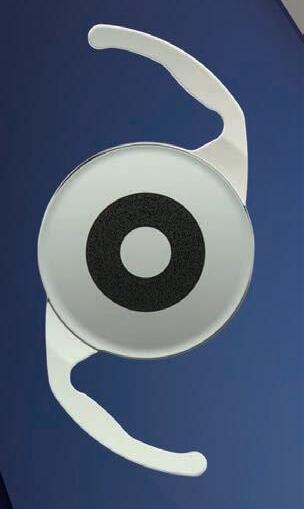
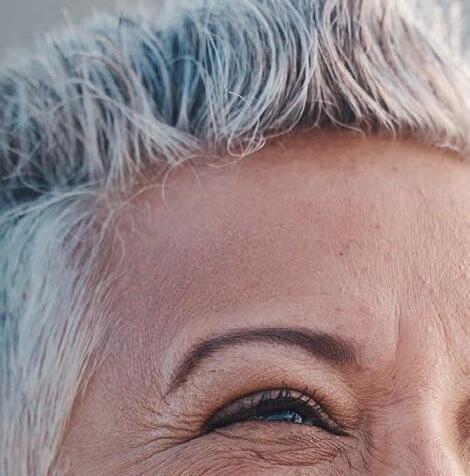
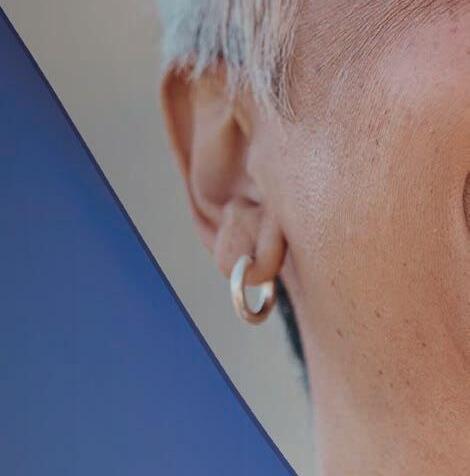



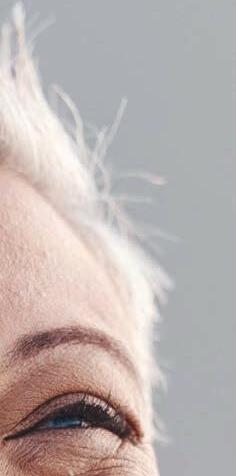

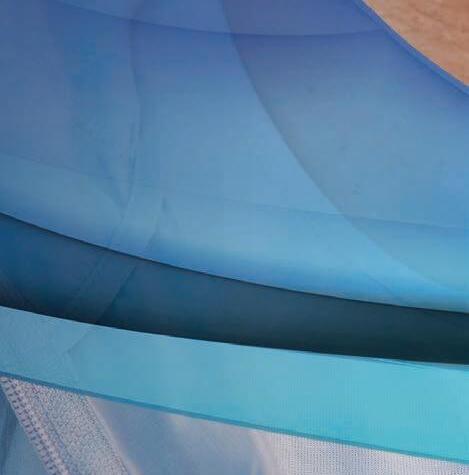

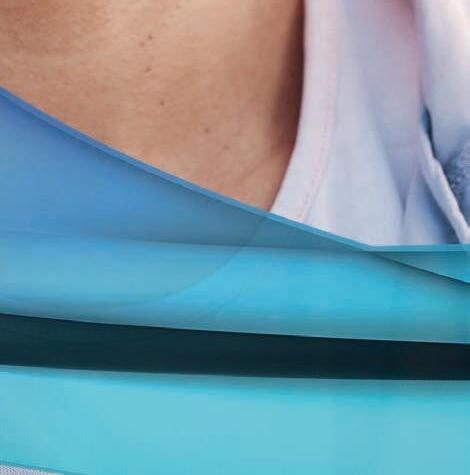



Capture the power of Experience the IC-8™ IOL, the small aperture extended depth of focus IOL, designed to help patients achieve their best personal vision. FOCUSED LIGHT. © 2024 Bausch & Lomb Incorporated. ®/TM denote trademarks of Bausch & Lomb Incorporated and its a liates. Bausch & Lomb (Australia) Pty Ltd. ABN 88 000 222 408. Level 2, 12 Help Street, Chatswood NSW 2067 Australia. (Ph 1800 251 150) New Zealand Distributor: Toomac Ophthalmic. 32D Poland Road, Glenfield 0627 Auckland New Zealand (Ph 0508 443 5347) IC8.0020.AU.23 For more information please contact your Bausch + Lomb Territory Manager, Customer Service at Customer.Service@bausch.com or scan the code to receive a call back.
ESSILORLUXOTTICA CONTINUES MOMENTUM WITH STRONG 2023 FINANCIALS
Asia-Pacific was EssilorLuxottica’s best performing region in terms of sales growth in 2023, in a year when the world’s largest optical group exceeded 7% revenue growth for a third consecutive time and posted a net profit of €2.9 billion (AU$4.8 b).
The company also posted its Q4 financial results, where Asia-Pacific revenue was up 10.3% on the comparable 2022 quarter. Notably, EssilorLuxottica saw “continued positive pace” across its 402 OPSM stores, while Sunglass Hut saw negative growth in Australia, but was strong in the rest of the region.
The group’s board met on 14 February 2024 to approve the consolidated financial statements for the year ended 31 December 2023, in results that chairman and CEO Mr Francesco Milleri and deputy CEO Mr Paul du Saillant said they were “proud to share”.
“These strong results … have delivered another year above 7% revenue growth, including an acceleration in Q4, with every one of our regions doing its part,” they said.
“Our profitability remained strong, with a record adjusted group net profit close to €3 billion (AU$4.8 b) and free cash flow at €2.4 billion (AU$4 b). It was also a year of major investments: growing new

product categories, with Stellest in myopia and Ray-Ban Meta in wearables, adding beloved brands like Moncler and Jimmy Choo to our portfolio, leveraging artificial and business intelligence, expanding our operations footprint and reinforcing the retail presence globally. This will support the evolution of the company and the transformation of the industry over the next decade.”
After three years of strong results, the board unanimously agreed to distribute a dividend of €3.95 (AU$6.51) per share.
In 2023, Asia-Pacific recorded more
than €3 billion (AU$4.9 b) in revenue, which was 14.3% more than the year prior. The Professional Solutions business – which supplies lenses, frames equipment to optical businesses – was the strongest contributor with almost €2.1 billion (AU$3.5 b) in revenue in the region, with Direct to Consumer – such as OPSM and Sunglass Hut – delivering nearly €950 million (AU$1.6 b).
In other updates from the past 12 months, EssilorLuxottica lauded the debut of its Nuance Audio concept at the Consumer Electronics Show in Las Vegas. The technology integrates an open-ear hearing solution into eyewear and is being touted as a disruptor “that bridges two industries combining good vision and better hearing”.
“We also progressed on our sustainability roadmap, Eyes on the Planet, reaching carbon neutrality in Europe and continuing our journey to connect our communities around the world with a common culture and shared values, growing our employee shareholders globally to almost 80,000,” EssilorLuxottica stated.
“With all these positive results and momentum, we are confident that we will keep the pace and meet our long-term targets.”
VALE MARGARET BANKS AUSTRALIA’S FIRST FEMALE BEHAVIOURAL OPTOMETRIST
Australia’s first female behavioural optometrist Ms Margaret Banks has passed away aged 97.
Banks – who died on 11 February 2024 –was also one of the first female optometrists in Victoria, a Fellow of The Australian College of Optometrists (FACO) and a life member of the Australasian College of Behavioural Optometrists (ACBO).
Notably, she was a recipient of an Order of Australia medal (OAM) in 2005 for service to children’s vision through contributions in the specialised field of behavioural optometry.
According to Melbourne optometrist Mr Paul Croucher, Banks practised in Canterbury for 40 years and was an early devotee to behavioural optometry as practised in the US.
“This was two decades before the
establishment of ACBO,” he said.
“From the late 1970s to the early 1990s she opened her home for a monthly study group where optometrists could meet and discuss issues related to children’s vision care and concepts of behavioural optometry. She was as gracious as she was hospitable at these meetings.”
As a young optometrist, Croucher said he found these evenings inspirational, realising he could contribute beyond refractions and referral of pathology in his working day.
“She produced the Banks red-green rings which have been a cornerstone piece of equipment in vision therapy for over 50 years,” he said.
“She leaves a large family, who loved her dearly and a better and grateful optometric community.”
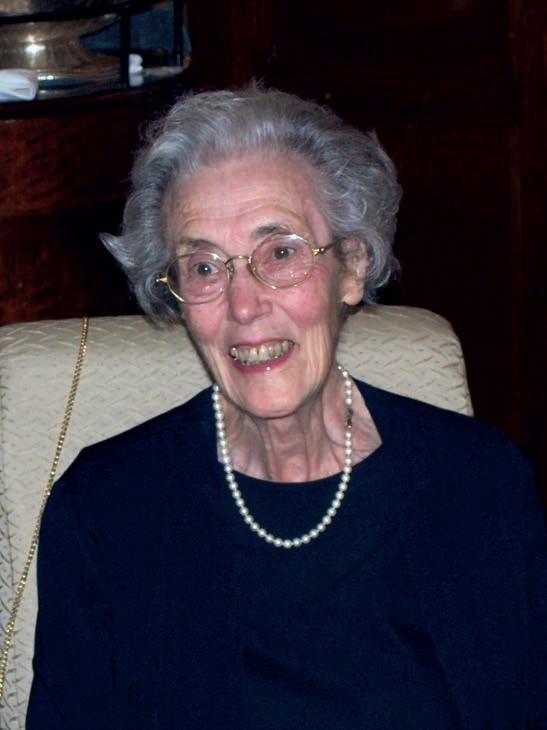
12 INSIGHT April 2024
The company saw “continued positive pace” across its OPSM stores in 2023. Image: EssilorLuxottica.
Margaret Banks passed away 11 February 2024.
NEWS
Image: ACBO.
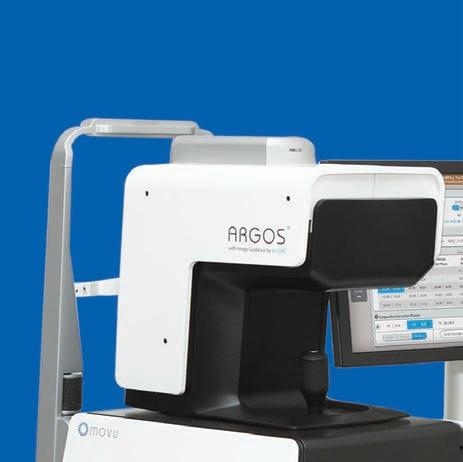



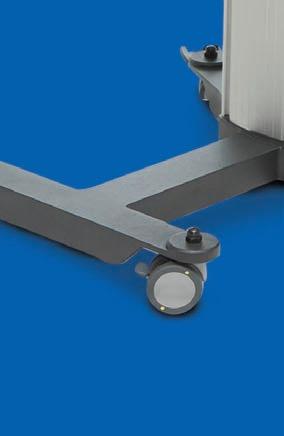
Connected surgical planning starts with the ARGOS ® Biometer. Experience faster, †1-4 easier ‡2 and better §1-2,5-6 optical biometry, even for dense cataracts. Combine with one touch planning and VERION ™ image guidance for integrated workflow from the clinic to the o perating suite. 7,8
Ask Alcon for a demonstration today. Argos Biometer. Measures up better than the rest.1–6
†Based on acquisition rates compared to IOLMaster* 700 (n=622; p<0.0001),1,4 IOLMaster* 500 (n=107-188; p-value not reported),2,3 LENSTAR* LS900 (n=107; p-value not reported).2

‡Based on a higher success rate of acquiring the axial length (AL) measurement in eyes with dense cataract (96% of cases for ARGOS® compared with 77% for the IOLMaster* 500 and 79% with LENSTAR* LS900; p-value not reported).2 §ARGOS® Biometer has shown better acquisition rates in dense cataract compared to IOLMaster* 700 (n=622; p<0.0001),1 IOLMaster* 500 (n=107; p-value not reported)2 and LENSTAR* LS900 (n=107; p-value not reported).2 ARGOS® Biometer has shown better predictive accuracy in medium-long eyes (n=23; p<0.001)5 and precise measurement (n=318; p-value not reported)6 than IOLMaster* 500. *Trademarks are the property of their respective owners. References: 1. Tamaoki A et al. Ophthal Res 2019;19:1–13. 2. Shammas HJ et al. J Cataract Refract Surg 2016;42:50–61. 3. Hussaindeen JR et al. PLoS ONE 2018;13(12):e0209356. 4. ZEISS* IOLMaster* 700 510k Submission 2015. 5. Whang W et al. Sci Rep 2018;8(1):13732. 6. Shammas HJ. Accuracy of IOL power formulas with true axial length versus simulated axial length measurement in 318 eyes using an OCT biometer. 2019 ASCRS ASOA Annual Meeting. May 2019. 7. VERION™ Reference Unit User Manual 2019. 8. ARGOS® Biometer User Manual 2019.
©2023
000
Auckland New ZealandNZBN 9429047030480 Phone: 0800 809 189.
EFFICIENT INTEGRATED DIAGNOSTICS
Alcon Inc. Alcon Laboratories (Australia) Pty. Ltd. ABN 88
740 830. Phone: 1800 224 153.
ALC2055 12/23 ANZ-ARB-2300008.
KERING EYEWEAR REPORTS REVENUE RECORD
Kering Eyewear’s revenue hit a new record of €1.5 billion (AU$2.5 b) in 2023, which was up 10% on a comparable basis from 2022.

The global eyewear company – which produces Gucci, Saint Laurent, Cartier and other luxury brands – said the revenue jump is attributable to consolidating its Maui Jim acquisition and developing the brand portfolio.
Sydney-based Sunshades Eyewear has been the distributor of Kering Eyewear brands in Australia since 2016.
In the fourth quarter, Kering Eyewear said sales were up 6% on a comparable basis, with its recurring operating income rising sharply to €276 million (AU$459 m).
According to the company, this reflected Maui Jim’s contribution and the eyewear division’s newly acquired scale.
Additionally, the Kering Eyewear and Corporate segment posted a recurring operating loss of €7 million (AU$11.6 m) in 2023. This is a 92% improvement from 2022, where the segment posted a recurring operating loss of €88 million (AU$146.2 m).
Overall, Kering’s eyewear business was the only department that reported positive revenue growth over the 12 month period.
“In a trying year for the group, we strengthened our organisation and took significant steps to further enhance the visibility and exclusivity of our houses. We are focused on revitalizing Gucci, leveraging the unique blend of craftsmanship, Italian heritage, and modernity that characterises this iconic house,” Kering chairman and CEO Mr François-Henri Pinault said.
“In a market environment that remains uncertain in early 2024, our continuing investments in our houses will put pressure on our results in the short term. Thanks to the experience gained across the group through a decade of outstanding expansion, we are confident in achieving our long-term ambitions.”
BAUSCH + LOMB
COMPLETES BLINK EYE DROPS ACQUISITION
The Blink range of eye and contact lens drops is now available from global eye health company Bausch + Lomb, after completing the acquisition of the product line from Johnson & Johnson Vision.
The Blink range consists of various eye drops and contact lens rewetting drops designed to provide immediate and long-lasting symptom relief.
“There’s a growing need for relieving the symptoms of dry eyes and dry contact lenses, and OTC (over-thecounter) products are often the first option consumers choose,” Mr John Ferris, executive vice president of consumer at Bausch + Lomb, said.
“The addition of Blink expands our robust portfolio of OTC eyecare brands, enabling us to provide more choices for consumers and eyecare professionals.”
According to a 2022 Gallup Study, 57% of American adults report su ering from eye dryness, and of them, nearly half (48%) use OTC lubricant drops to obtain relief.
The incidence is increasing, with a strong correlation between the amount of time spent on digital devices and reported dry eyes.

Additionally, contact lens discomfort and contact lens dryness impacts a third of the 45 million contact lens wearers in the US.
The product line includes:
• Blink Tears Lubricating Eye Drops
• Blink Tears Preservative Free Lubricating Eye Drops
• Blink GelTears Lubricating Eye Drops
• Blink Triple Care Lubricating Eye Drops
• Blink Contacts Lubricating Eye Drops
• Blink-N-Clean Lens Drops.
FDA MILESTONE FOR NEW MYOPIA SPECTACLE LENS

The Food and Drug Administration (FDA) in the US has granted Breakthrough Device designation to SightGlass Vision’s di usion optics technology (DOT) spectacle lenses, which are intended to slow myopia progression in children.
The lenses are a joint venture between CooperVision and EssilorLuxottica and, if approved by the FDA, will be among a handful of treatments with a myopia control indication in the US market after, in 2019, CooperVision’s MiSight 1 day lens became the first and only FDA-approved product to slow the progression of myopia in children.
The design of DOT spectacle lenses is the first to use a contrast management
mechanism of action, incorporating thousands of elements that gently scatter light across the retina, according to SightGlass.
“The FDA Breakthrough Device designation for DOT spectacle lenses is a milestone for our organisation – and for the broader fight against the paediatric myopia epidemic,” Mr Andrew Sedgwick, CEO of SightGlass Vision, said.
DOT spectacle lenses have made their commercial debut in several markets, including China, the Netherlands, and Israel, as well as through preliminary market trials in other countries.

14 INSIGHT April 2024
The Maui Jim acquisition has contributed to the result. Image: Casimiro PT/Shutterstock.com.
COMPANY
The eye drop range was purchased from Johnson & Johnson Vision. Image: Bausch + Lomb.
The lens design gently scatters light across the retina. Image: McDougall Communications.
HOYA Digital Fitting
Elevate your patients’ experience

HOYA Digital Fitting is a patented portable, smart centration software that takes accurate and precise fitting measurements. HOYA Digital Fitting delivers a comfortable and technologically advanced experience for the patient and is easy to use by practice staff.
Key benefits of the software include:
• No jig or other attachments required to capture Position of Wear (POW) measurements
• Leverages the latest technology with Apple’s LiDAR Scanner making it fast and accurate
• Seamlessly transfers the patients’ measurements into HOYA Consultation Centre 360 (HCC360), providing a tailored lens recommendation for your patients’ lifestyle
• Sets your practice apart by using advanced technology
Fast track the digitalisation of your practice today.
To learn more about HOYA Digital Fitting, please contact your HOYA Sales Consultant or call 1800 500 971.






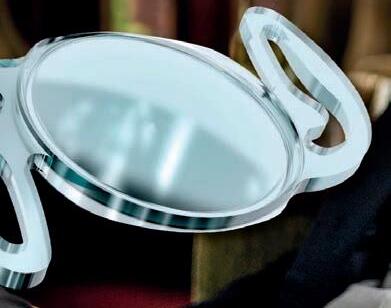
PROF GRAHAM BARRETT’S LATEST CHAPTER

Professor Graham Barrett’s indelible mark on ophthalmology continues thanks to a recent collaboration with Rayner to produce an extending range of vision intraocular lens. It features an optical design that took many years to develop and is now seeing widespread adoption among his peers.
When you look at a modern-day intraocular lens (IOL), Professor Graham Barrett’s fingerprints can be found on almost any element. Early in his career, he threw himself into material science leading to the insertion of the first foldable IOL in 1983. Then he became enchanted with haptics, leading the C loop shape seen in many designs today. And, of course, there are his IOL prediction formulae used by surgeons globally.
In more recent times, Barrett has been working on a sophisticated optical design to resolve one of the biggest issues in cataract surgery – clear vision at di erent focal points without visual disturbances. He came up with a way to harness positive spherical aberration and after many years “knocking on doors”, the concept has been brought to life as the RayOne EMV IOL.
Barrett – a Perth-based ophthalmologist and world renowned for his work – has collaborated with UK-based IOL manufacturer Rayner to develop the lens described as an extending range of vision IOL delivering up to 1.5 D1,4,6 with an emmetropic target. The lens has also been created with monovision in mind – a key interest of Barrett’s – o ering surgeons a potentially even greater range of vision. Importantly, its non-di ractive design means the lens can o er monofocal levels of contrast sensitivity 1 and dysphotopsia 2,5 , and high levels of patient satisfaction. 3
After influencing IOL materials, haptics and formulae, for Barrett the RayOne EMV perhaps closes an IOL innovation loop on his career, leaving his mark on optics with an alternative presbyopia-correcting solution with few downsides.
“People say there’s no free lunch in optics, but this is as close as you get,” he tells Insight
“You can achieve excellent intermediate and some reading [vision] if you target distance in both eyes, and many surgeons start with this and are happy with the outcomes. But it comes to its own when you embrace the synergistic e ect of extended depth of focus with modest monovision. It’s exciting to see surgeons who have been perhaps cautious about modest monovision begin to embrace this, because it’s a powerful concept in its own right.”
Although the RayOne EMV – and its toric version – has been available for a few years now, it was more than a decade ago that Barrett began devising a plan so patients could benefit beyond what monofocal or multifocal IOLs
o ered. And although some designs had adopted the EDOF term, they still came with trade-o s.
“Since I implanted my first multifocal in 1989, there have been variations in design, but nothing has really changed – the limitations still exist, and I wondered whether you could enhance someone’s depth of focus by adding something where the penalty is hard to distinguish,” he says.
“I looked at various optical principles and came to the conclusion that manipulating spherical aberration was my option of choice. Positive spherical aberration especially has some unique features in optics, but there’s a key philosophy that you can only push it so much. My priority was to maintain optical quality.”
The result is a highly sophisticated optic that manipulates a mixture of fourth and sixth higher order aberrations so that the positive spherical aberration is apodised towards the periphery. In e ect, when the pupil gets larger, it doesn’t cause the negative impacts one might expect. Rayner says this “reduced longitudinal spherical aberration” is designed to maintain visual acuity and contrast sensitivity under mesopic conditions.
What also makes the RayOne EMV unique is the way it exploits the relationship between positive spherical aberration and residual myopia. Barrett has long been a proponent of modest monovision and is excited to combine these concepts in the RayOne EMV.
“The same principle applies, in that there’s a limit as to how much myopia you can introduce – about -1.25 D – and if you take these two concepts of an extra -1.00 D to -1.50 D of spherical aberration and -1.00 D of modest monovision in one eye, suddenly you are getting a reasonable likelihood of spectacle independence – that was my thought behind this,” he says.
“When I came up with this concept, it really was the first example of extended depth of focus, but since then others have embraced the term despite a variety of di erent optical techniques. They are by no means homogenous, and you can’t expect them to perform in the same fashion. When I coined the term and began that journey, it was about positive spherical aberration. People look at the RayOne EMV as a recent newcomer, but it actually precedes many other lenses – it’s been a long journey.”
16 INSIGHT April 2024 OPHTHALMOLOGY
Prof Graham Barrett has worked with Rayner to bring the RayOne EMV (left) IOL to market.
Images: Prof Graham Barrett & Rayner.

n (Patients): Tecnic 1 = 30, Eyhance = 30, Symfony = 30, Rayone EMV = 30, Vivity = 30
BRINGING THE CONCEPT TO MARKET
As alluded to, Barrett has expended plenty of e ort to bring his concept to market with an IOL company and probably had his doubts along the way, but he counts himself fortunate to end up collaborating with Rayner. He has high praise for the company’s CEO Mr Tim Clover and the way in which the company has respected the essence of his design and encouraged surgeons to consider monovision.
He regards Rayner as a highly innovative company that punches well above its weight in a competitive market segment and appreciates how close Clover is to the action.
However, progress isn’t linear. After initially trialling his positive spherical aberration concept in contact lenses and discovering the performance was indistinguishable from plano contact lenses, Barrett soon began working with a di erent company in 2012 and performing clinical studies.
“But innovations are complicated, and finding a partner to take a new concept is a major undertaking. The stakes are high and eventually when I met Rayner and their team, it turned out to be a perfect partnership,” he says.
“Rayner has a very reliable lens platform in RayOne. Making a hydrophilic acrylic with reliable haptics that are stable and perform well rotationally isn’t simple, especially for toric IOLs, but Rayner has excelled, and the material is excellent.
“The idea of taking an extended depth of focus design, embracing the additional monovision concept, testing it and evaluating it – it takes an innovative company to do that.”
A talking point with the RayOne EMV design is the use of hydrophilic acrylic. While the material has attracted unwanted attention over the years – some that may be unjustified – Rayner boasts a low complication rate with the material.
RayOne EMV IOLs are made from Rayacryl (Rayner’s own hydrophilic acrylic material) that can be delivered through a 2.2 mm micro incision. The company has reported zero primary opacifications in more than 11 million implantations. To ensure its stability, a 360° square edge design helps reduce epithelial cell migration, including at the haptic-optic junction.7 According to the company, this has resulted in extremely low YAG capsulotomy rates, comparable with hydrophobic acrylic lenses with square-edge optics.7
“From an optical point of view, once they’re implanted nothing looks as good and functions as well as a hydrophilic IOL,” Barrett says. “There can be issues in certain contexts, such as DESK (Descemet stripping endothelial keratoplasty), or maybe vitrectomy with gas because calcifications have been reported.
“It’s something I’ve asked Rayner about in-depth, and the numbers are
extremely small, but it exists. I thought in a market like Australia that is hydrophobic-oriented, this would be a challenge, but I’ve been surprised at how many surgeons – especially those of my vintage who have seen these issues – have embraced the material. It doesn’t seem to have been a barrier and the uptake is probably greater than I would have anticipated.”
LENS MATERIALS AND MORE
These days, Barrett is enjoying a sense of fulfilment since the RayOne EMV came to market. Although he has spent much time on the lectern, he’s now finding pleasure sitting at the back of the room and watching his peers present their own experiences with the IOL.
“Certainly, I’ve heard the data from implanters, particularly in Europe, and the numbers are excellent. From the point of view of glare and halos, people claim zero and, of course I’m doubtful when it’s zero, but it’s certainly very
n (Patients)
Tecnic 1 = 30
Eyhance = 30 Symfony = 30
RayOneEMV = 30 Vivity = 30
“It’s interesting because I’ve explained how I’ve been careful not to create too much extended depth of focus, but when you look at the through-focus curves and depth of focus curves (Figure 1), it compares very well to some of the more aggressive lenses whether that be di ractive or other EDOF principles. The RayOne EMV depth of focus curves have been analysed in clinical studies and compared to other IOLs in this category. It o ers a significant extended depth of focus, yet the quality parameters are good. It’s very easy to refract, you can get a sharp focus and patients aren’t complaining of having soft distance vision or low contrast that you might get in other designs.”
Each of his innovations have had an impact, and asking Barrett to choose one is like picking a favourite child.
But looking ahead, he will continue working with Rayner to promote and develop the RayOne EMV IOL. While he plans to dial down in some areas, he isn’t done with ophthalmology yet.
“I’m at the stage of my career now that I’ll be slowing down from a surgical point of view, but with formulae there’s no limits. It takes a lot of time and deep thought, and I’m looking forward to putting more into that aspect of ophthalmology,” he says.
“It’s all fascinating and a privilege to be an ophthalmologist. I was talking to a patient just recently about retirement and it struck me how rewarding this field is. What we do has such impact and – beyond the innovation, ideas, and concepts – that day-to-day experience is something I’ll always be grateful for.”


The RayOne EMV IOL harnesses positive spherical aberration, but calculating the right amount is the key to the design. Image: Rayner.

REFERENCES:
1. Ferreira TB. Presented at ESCRS 2022.
2. RayOne EMV: First Clinical Results, Rayner. Oct 2020.
3. Rayner RayPRO, data on file.
4. Rayner, data on file.
5. Rayner Peer2Peer webinar. May 2022.
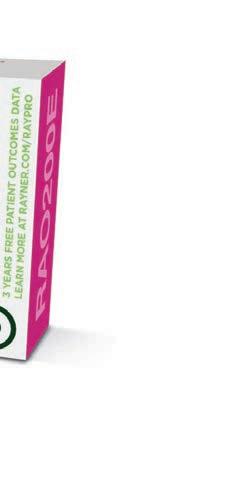
6. Royo, M. RayOne EMV and TECNIS Eyhance: A Comparative Clinical Defocus Curve. Data on file. 2021.
7. Mathew RG, Coombes AGA. Ophthalmic Surg Lasers Imaging. 2010 Nov-Dec; 41(6):651-5.
INSIGHT April 2024 17
D r F i l o m e n a R i b e i ro & D r T i a g o Fe r re i ra | E S C RS 2 0 2 2 & 2 0 2 3
Figure 1: At the Hospital da Luz Lisboa in Lisbon, Prof Filomena Ribeiro and Prof Tiago Ferreira led a 150-patient double-arm, non-randomised prospective case series where RayOne EMV demonstrated excellent visual outcomes for distance and intermediate vision, and good visual acuity for near vision.1 Image: Rayner.

LIONS INREACH VISION: EYES ON THE CITY
Eye health programs seeking to overcome equity issues prioritise the most marginalised remote communities, but what about disadvantaged people in urban areas? The first ‘in-reach’ service of its kind has launched in Australia, with a mission to eliminate disparities in metropolitan blind spots.
The Australian and New Zealand Eye Foundation (ANZEF) champions transformative research, education initiatives and advocacy projects that eliminate disparities in eyecare. Each year, the philanthropic division of RANZCO awards a handful of grants to standout projects that redefine the eye health landscape.
Dr Hessom Razavi and Dr Marcel Nejatian, of Lions InReach Vision (LIV) and recipients in the 2023 grant round, exemplified these principles with their one-of-a-kind eyecare service. Through LIV, they are reforming the health landscape in Metro Perth by providing comprehensive eyecare services to minority communities in this region. As a result, the duo were awarded the maximum grant value of $50,000 for their project.
Many of the barriers that minority communities experience when accessing Metropolitan healthcare services have been overlooked in the past. This can contribute to health disparities, including high rates of avoidable vision loss. To address these barriers and disparities, Razavi, a Western Australian ophthalmologist, established LIV which he operates alongside Nejatian, a junior doctor at the Lions Eye Institute (LEI).
“There can be a ‘blind spot’ in metropolitan areas of minority groups that face challenges with accessing mainstream eyecare services,” Razavi says.
Beginning formal operations in August 2022 in Midland, east-metro Perth, the clinic is servicing Aboriginal and Torres Strait Islander, refugee, and asylum seeker groups.
“These groups include people who need the most support for a variety of reasons. It’s not a single group and it’s not a single reason. It can be language, culture, financial issues. Often, it’s simply transport, medical problems and complex health needs. Oftentimes, it’s a variety of all those things,” Razavi says.
Razavi has amassed almost 10 years of experience working as a healthcare consultant for Indigenous patients. However, he decided to formalise these e orts into a dedicated service through LIV.
“To our knowledge it’s the first service of its kind in Australia. There are refugee services in South Australia and Victoria, but they are optometry only. Ours is the first to marry optometry with ophthalmology so that people have a ‘one-stop shop’ with easier access to specialist eye services,” Razavi says.
“We started o with targeting three groups: Indigenous patients, newly arrived refugees, and asylum seekers. And we’ve also had a trickle of patients coming in who have no fixed address – in other words, are homeless. We want to expand the service to comprehensively include those patients as well.”
As the recipients of the ANZEF grant round in 2023, the duo plan to extend the capabilities of the clinic further and diversify its service.
FULL SUITE SERVICE
The clinic ensures a holistic model of healthcare whereby patients receive the full scope of eyecare. This makes it accessible and a ordable for patients.
“It can take a year or more to see an ophthalmologist in a public hospital, which is where these patients generally get referred to. We’ve removed that barrier by making it collaborative care under one roof and by making it pro bono,” Razavi says.
With a comprehensive collaborative care model, Razavi also works to ensure all eyecare services are available to patients upon a single visit. It can be complex to manage, but worthwhile to avoid missed appointments and dropout.
“We’ve got an ophthalmologist, an optometrist to help with glasses, plus
18 INSIGHT April 2024
PROFILE
Dr Hessom Razavi (left) and Ricky, a refugee from Myanmar during a consultation. Image: Frances Andrijich.
a junior doctor, nurses and ophthalmic technicians making up the team.
Whether patients need a pair of specs, surgery, laser treatment or other medical treatment from me, or the combination of the two, the aim is to perform or arrange all of this in a single visit,” Razavi says.
“We know that attending appointments is often di cult for people in these situations. If they come as a family, then we o er to see the whole family in the room at the same time, which isn’t usually done in medical or specialist appointments.”
Successful delivery of services within these communities hinges on trust and cultural competency, with mandatory cultural awareness training for sta . Razavi emphasises the importance of fostering good relationships with community groups.
“It comes down to trust. We’ve got a long-term history with Aboriginal medical services in Perth and some in the regions. We’ve got good relationships with service providers for refugees and asylum seekers,” Razavi says.
“Refugees and asylum seekers come with an interpreter booked – and they’ll often have a caseworker in attendance.”
To ensure cultural safety, and using the funds from the ANZEF grant, LIV will soon appoint a dedicated patient liaison o cer, who is a refugee themselves. This engagement with patients enhances the accessibility of the service and works to reduce failure-to-attend rates.
“The liaison o cer will work with our patients, represent them, advocate for them and their needs, and help improve access to our service,” Nejatian says.
“For example, if a patient does not attend clinic, the patient liaison o cer will call them and explore the reasons why. They would then make another appointment for them after addressing those barriers to attendance.”
For a highly tailored eyecare service, Nejatian says that liaison with advisory groups for each community will optimise the service further.
“We’re also developing separate advisory groups for the Indigenous and refugee populations, composed of community members and health workers.”
“We will meet with these groups and discuss what barriers these populations experience when accessing eyecare services, and how these barriers can be overcome.”
THE UNDERPINNINGS
With the ANZEF grant, the clinic will be able to employ the patient liaison o cer for two days a week for two years. This builds on the initial funding for one day a week for two years contributed by pharmaceutical company Bayer.
“The ANZEF have been very generous with their grant. The support they’ve given us will help improve access to eyecare services for these populations. We’re using it to double the hours of our patient liaison o cer, provide patient transport assistance, and fund our advisory group meetings and patient interviews,” Nejatian says.
“The ANZEF is doing a lot of amazing work in this area to improve access to services for vulnerable populations.”
In addition to ANZEF and Bayer, the duo also acknowledge support from
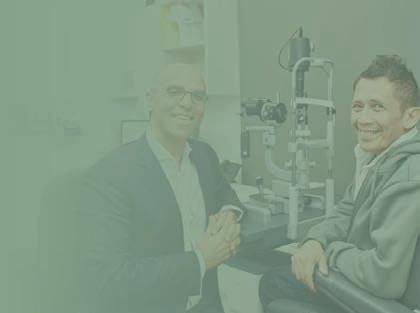

“THERE ARE OTHER GROUPS THAT FACE SIMILAR BARRIERS, INCLUDING PEOPLE WITH DISABILITIES, PEOPLE FROM NURSING HOMES, AND PEOPLE WITH NO FIXED ABODE. WE HOPE TO EVENTUALLY EXPAND TO PROVIDE SERVICES FOR THESE GROUPS.”
DR MARCEL NEJATIAN LIONS INREACH VISION


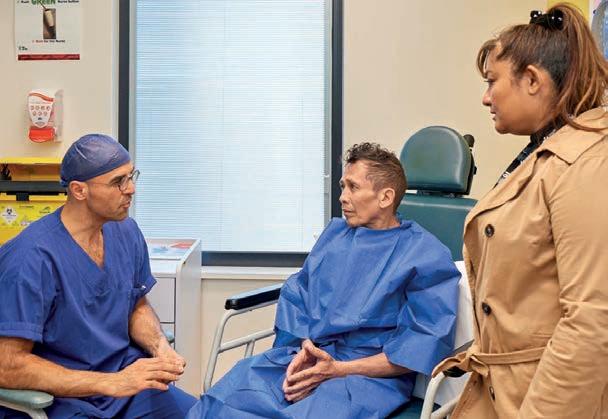
St John of God Hospital in Midland, Australian Red Cross, the University of Western Australia (UWA) Optometry School, Derbarl Yerrigan Health Service and the Humanitarian Entrant Health Service.
Razavi hopes to double the frequency of clinics, which are currently running fortnightly. He also wants to expand to a second site.
“From January 2024 we’re going to o er consultations at the UWA Optometry School site in Nedlands. Patients could have the choice of being seen in Nedlands or Midland depending on where they live and what they need. Our goal is to enable all those forms of expansion,” Razavi says.
Nejatian adds: “We know there are other groups that face similar barriers, including people with disabilities, people from nursing homes, and people with no fixed abode. We hope to eventually expand to provide services for these groups as well.”
Currently, scaling the clinic to service all of Perth is not financially sustainable, Razavi says. He suggests that partnership from state and federal governments to expand the clinic into public ophthalmology departments to service neglected areas of Perth would work.
This would help serve at-need patients in other areas of Perth, as well as the Wheatbelt and Goldfields regions.
NORTH STAR
Razavi and Nejatian have conducted a preliminary analysis of the service to demonstrate its success to date, and to emphasise the need for expansion.
The analysis, as of October 2023 and presented at both the National Aboriginal and Torres Strait Islander Eye Health Conference as well as the RANZCO Congress, revealed a total of 409 clinic consults for 226 patients, 337 of which were ophthalmology-related, 42 optometry-related, and the remainder a combination of both. Of the 226 patients seen, 135 are Indigenous and 83 from a refugee background.
There have been 81 surgeries. The majority of these have been cataract surgery, including two patients blind in both eyes and six patients blind in one eye who are no longer blind after removal of their cataracts.
Approximately 170 intravitreal injections have been performed, mostly for diabetic retinopathy in the Indigenous population.
“Clearly, there is a need for these services. As the clinics are getting quite full, we’re hoping to expand further so that we can provide even more in future,” Nejatian says.
Razavi adds: “Our ‘North Star’, or the guiding principle, for LIV is ‘proportionate universalism’.
“This is the idea that, ultimately, we want to provide universal eyecare for all – with expertise and resources directed proportionally based on need. In other words, all patients will be looked after, and those that need extra support will receive it."
INSIGHT April 2024 19
The clinic extends from prescribing spectacles through to ophthalmic surgery. Image: Frances Andrijich.
Image: Marcel Nejatian.
Restock your Alcon trial lenses in a clicks few
Download MyAlcon FitSCAN to get started.

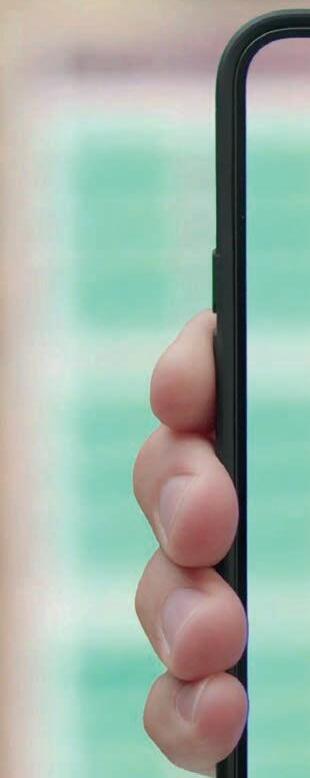
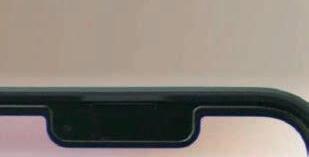
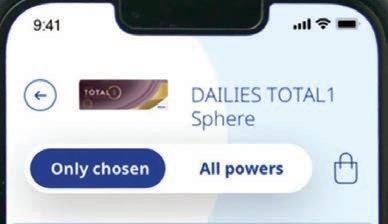



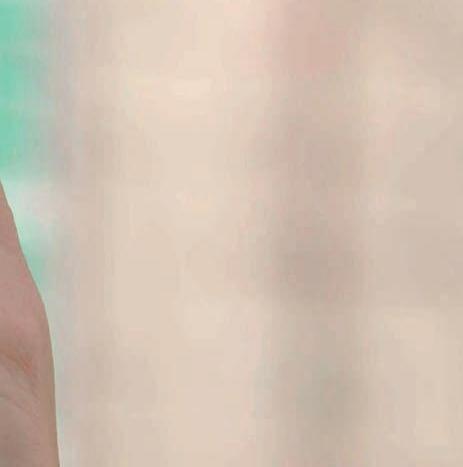

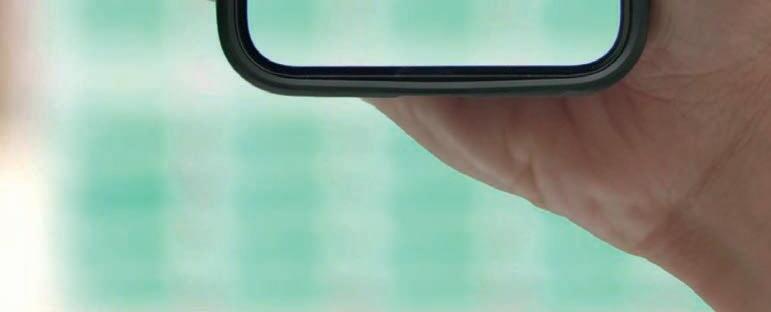

©2023 Alcon Laboratories Pty Ltd. AUS: 1800 224 153; Auckland NZ: 0800 101 106. ANZ-VC-2300022
Delivering
A UNIQUE AND DIFFERENTIATED EXPERIENCE

As independent practices increasingly focus on evolving their businesses, they require more sophisticated ways to engage with patients and deliver a stand out experience. HOYA has developed several new patient focused platforms so practices can nail the dispense – and on a more consistent basis.



Last year, KPMG’s snapshot of the attributes Australian consumers value most in their interactions with businesses o ered two insights that play to the strengths of independent optometry. ‘Personalisation’ and ‘integrity’ are at the core of customer advocacy and loyalty, the '2023 Customer Experience Excellence' report revealed.
Extrapolating these findings for optometry, practices are expected to understand their patients’ wants and needs, while instilling trust that they’re doing the right thing by them. In turn, the chances of a word-of-mouth referral increase when patient expectations are met or exceeded, and they are more likely to return when they find the practice easy to interact with.
So, what does this look like on a day-to-day basis for an independent optometry business?
Mr Ulli Hentschel, national training a development manager at HOYA Lens Australia, says while it starts with the optometry consultation, it’s often the retail experience that leaves the final impression. Was the patient o ered lens options that suited their lifestyle? Were the lens benefits clearly articulated? Did the services come across as e cient and professional? And did the patient leave fully informed of their purchase without any post-decision regret?
Alluding to KPMG’s report, Hentschel believes personalisation and integrity are at the crux of a di erentiated independent practice. Underpinning these are professional systems and resources that allow front-of-house sta to shine and o er a memorable experience.
As such, HOYA is releasing a suite of state-of-the-art systems to help its independent customers o er a standout service. Aspects of the new digital customer experience platforms were previewed at O=MEGA23 in September 2023, with some key attributes including a simplified lens ordering portal, an interactive app supporting optical dispensers through the lens consultation, and major updates to its eyewear centration technology.
Hentschel says it forms part of HOYA’s ‘For the Visionaries’ philosophy that seeks to hero the eyecare professional – or Visionary – while HOYA brings sophisticated lens technology, education, and platforms to the table.
“We’re wanting to support practices to grow their business and do more for their patients, but also remain relevant in the modern era. Retail is transforming in a big way, and we think we can be there behind the scenes to help,” he says.
“With cost-of-living pressures on Australian households impacting consumer purchasing decisions it is becoming increasingly more important to create an outstanding patient experience. Patients now have an expectation of a more streamlined journey, so adopting a more digitally focused and customer-centric approach can lead to improved understanding and confidence in what the patient is buying.
"This forms the basis of HOYA’s new digital customer experience platform. It’s a new way to engage with patients and deliver customer experience excellence for the independent practice.”
AN ALLENCOMPASSING PLATFORM
The new approach all begins with HOYA Hub. This is described as a self-service platform allowing practices to access key information such as HOYA product details, marketing support, training and events, and campaigns and promotions.
HOYA Lens Australia commercial systems manager Ms Sara Leonard, who oversees implementing these new systems into the Australian market, says HOYA Hub is intended to be a “one-stop-shop” and first port of call for practices seeking information – and links to systems from HOYA.
“Instead of spending precious time looking for answers and support, we want to empower practices and make their jobs easier – they can access this environment 24/7,” she says.
“HOYA Hub facilitates a one log-in step to provide access to our HOYA Learning Centre featuring modules for people of varying levels of knowledge within the practice. Some are specifically around HOYA products while others are more broadly focused on the optical industry. We also recognise practices are busy and often short on sta and time, so this works as a great onboarding tool for a new starter, especially if they’ve got limited experience with the industry or HOYA products.
“It then also provides links to the new systems we are launching including the HOYA Order Centre, and information of how to access the HOYA Consultation Centre 360 and HOYA Digital Fitting (more on these below).”
RETHINKING LENS ORDERING
With the same HOYA Hub log in credentials, customers then have access to the collection of other new digital systems from HOYA. If they aren’t available already, they will be shortly, and include:
• HOYA Order Centre
• HOYA Consultation Centre 360
• HOYA Digital Fitting
Starting with Hoya Order Centre, this is a web-based app to simplify the lens


INSIGHT April 2024 21
BUSINESS
Hoya Digital Fitting (left), pictured in Seekers Optical in Melbourne, is available on an iPad Pro and eliminates the need for a jig thanks to LiDAR scanning technology. A major update is also imminent for HOYA’s visuREAL Master wall-mounted centration system (right). Images: HOYA.
Image: HOYA.

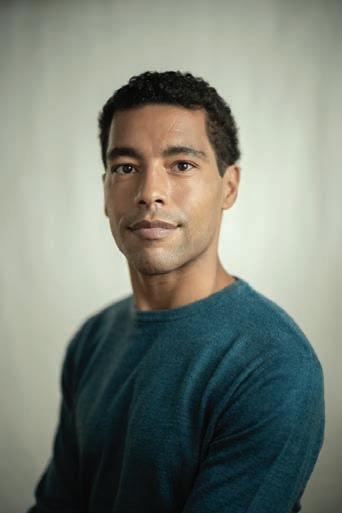
ordering process for practice sta . With so many more parameters and ways to personalise a lens today, this will eliminate the need for practices to input various codes and instructions for each job.
It achieves this with what HOYA describes as an intuitive interface and modern design, with other key features being logical, guided order workflows with convenient drop-down menus, quick access to preferred lens designs via the ‘favourites’ menu, and the ability to track orders, lodge enquiries, review history and reorder with little fuss.
“Cloud-based functionality requires only a login, eliminating setup and maintenance hassles,” Hentschel adds. “It also o ers comprehensive lens and frame catalogues with automatic updates, simple order cancellation even outside o ce hours, compatibility with a wide range of tracers and, importantly, seamless integration with Optomate to eliminate double entry.
“The Hoya Order Centre promises to streamline administrative tasks for practices, enhancing e ciency amid increasing demands.”
The software also has a direct interface with Hoya Consultation Centre 360 and Hoya Digital Fitting allowing straight-forward transfer of wearing parameter and lens design values.
CONSISTENT AND EFFECTIVE CONSULTATIONS
While HOYA’s new ordering system is providing back-end e ciencies, the company’s new HOYA Consultation Centre 360 app is supporting practices to elevate their patient-facing services.
At its core, the app is a digital tool that works as a consultation guide for the optical dispenser to take the patients through frame and lens selection. HOYA says it helps practices augment their expertise, presenting patients with a sleek interface and consistent messaging.
One of the biggest challenges practices face is explaining the nuances of various vision solutions, but Hentschel says the Hoya Consultation Centre 360 can empower practice sta to promote premium products with greater ease and assurance.
“This fosters greater confidence among patients as they navigate frame and lens options, aided by product demonstrations and customised recommendations tailored to their vision needs and lifestyle,” he says.
A key component of the app is interactive features and relatable visuals where, according to HOYA, Hoya Consultation Centre 360 digitally simplifies complex vision concepts, ensuring patients grasp di erent vision care options with greater clarity.
“This works to foster a sense of understanding and confidence in their selection process,” Hentschel adds.
The digital consultation tool is also customisable for each practice. For example, practices can personalise the app to align with their brand identity, selecting relevant information from a digital portfolio of HOYA products and incorporating their own store name and logo.
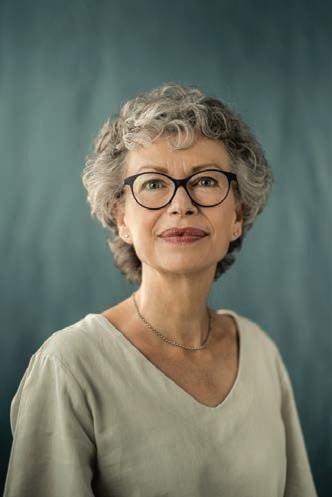
“And even the language and description practices use to describe lenses can be edited and tailored on the app to foster expertise and maintain consistency across all sta interactions,” Hentschel says. “It’s there to champion the practice, so when a patient is working through the consultation with a sta member, it looks much like a tool they have developed themselves.”
Finally, Hoya Consultation Centre 360 takes patients through several questions about their lifestyle and vision needs, which they answer themselves in the app.

“It then generates tailored recommendations and showcases the benefits of various vision solutions. This encompasses lens designs, materials, coatings, light-adaptive solutions, and more,” Hentschel says.
“Hoya Consultation Centre 360 represents a significant advancement in consultation tools, empowering our customers to provide a more informed and personalised experience for every patient.”
MINIMISING DISPENSING ERRORS
The final piece of HOYA’s new digital systems puzzle is Hoya Digital Fitting. It’s being touted as a cutting-edge digital fitting app adopting precise measurement and video centration technology to capture accurate position of wear (POW) measurements while o ering comprehensive simulation and visualisation of lens designs.
It represents the latest eyewear centration technology from HOYA and is an alternative to the company’s visuREAL Master wall-mounted system that itself will soon have a major update.
The visuReal MasterAI, described as an industry-leading centration system, has undergone a transformation with AI integration. HOYA says the AI-powered algorithm has been meticulously trained to significantly reduce manual adjustments, resulting in a simpler, more e cient and more accurate as well as a less user-dependent process. The AI-powered functionality embedded in the system enables faster and more precise centration and frame fitting.
“By virtually eliminating the need for manual adjustment and human error, it significantly enhances the patient fit, improving long-term comfort and vision support,” the company states.
Meanwhile, Hoya Digital Fitting, available on an iPad Pro, marks a major advancement in this category by eliminating the need for a jig thanks to sophisticated LiDAR scanning technology that uses only one photo for fitting measurements and one for reading distance and position.
HOYA Digital Fitting captures key measurements including, monocular pupillary distance, fitting heights, corneal vertex distance, pantoscopic tilt, frame face form angle, and reading distance and position.
Hentschel says the advantages of HOYA’s latest eyewear centration technology are significant in that it facilitates lens and frame selection, minimises errors and variability in practice, reduces the need for retesting, decreases the occurrence of remakes, and saves both time and costs.
“This all works to boost customer confidence,” he says. “For optimal results, HOYA Digital Fitting is recommended for use alongside HOYA’s Consultation Centre 360 app. The wearing parameters captured by HOYA Digital Fitting seamlessly integrate into the patient’s Vision Profile consultation, ensuring the most personalised lens recommendation.”
22 INSIGHT April 2024 BUSINESS
ABOVE: HOYA’s ‘For the visionaries’ ethos aims to empower and support its independent eyecare professional customers who the company consider visionaries in their field. HOYA works to equip them with the tools to develop their practice, ranging from high-quality lenses and integrated systems, to training and reliable services. Image: HOYA.








©2023 Rayner Group, all rights reserved. Rayner and RayOne are proprietary marks of Rayner. All other trademarks are property of their respective owners. Rayner, 10 Dominion Way, Worthing, West Sussex, BN14 8AQ. Registered in England: 615539. EC 2023-30 AU 08/23 MADE IN UK 1. Ferreira TB. Comparison of visual outcomes of a monofocal, two enhanced monofocals and two extended depth of focus intraocular lenses. Presented at ESCRS 2022. 2. RayOne EMV: First Clinical Results, Rayner. Oct 2020. 3. Rayner RayPRO, data on file. 4. Rayner, data on file. 5. Rayner Peer2Peer webinar. May 2022. 6. Royo, M. RayOne EMV and TECNIS Eyhance: A Comparative Clinical Defocus Curve. Data on file. 2021. 7. Bhogal-Bhamra GK, Sheppard AL, Kolli S, Wolffsohn JS. J Refract Surg. 2019;35(1):48-53. For more information call your Rayner representative or 1300RAYNER Extending range without compromise EMV & EMV TORIC “Both the patient satisfaction results and depth of focus curves generated are excellent.” Prof Graham Barrett Join the conversation Search for #Peer2Peer Leading surgeons from around the world share their real-world experience with RayOne EMVwatch engaging webinars, listen to insightful interviews and podcasts, and read interesting case study articles. Visit www.rayner.com/peer2peer to access videos and articles, download resources and join future events and discussions. PeerPeer RayOne EMV – Developing a Lens Perfect for *Almost* Anyone 21

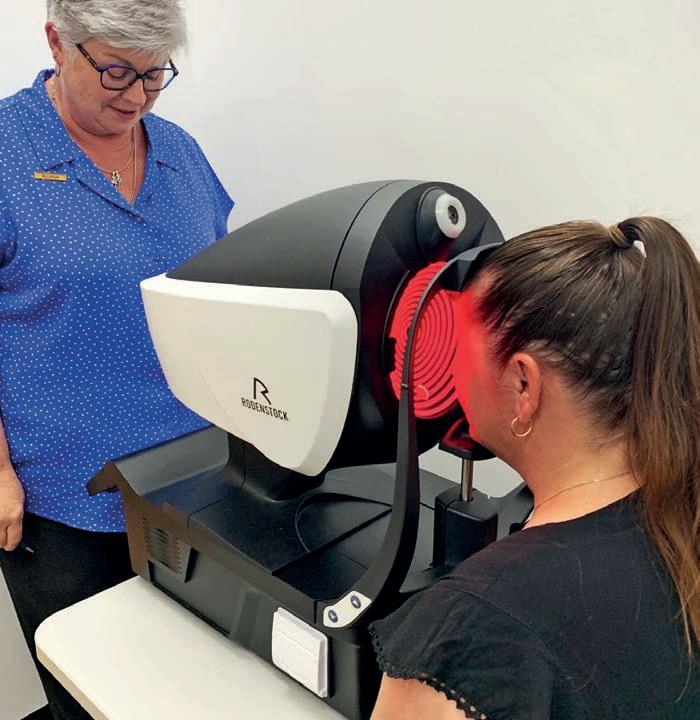


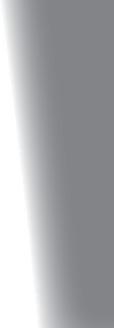

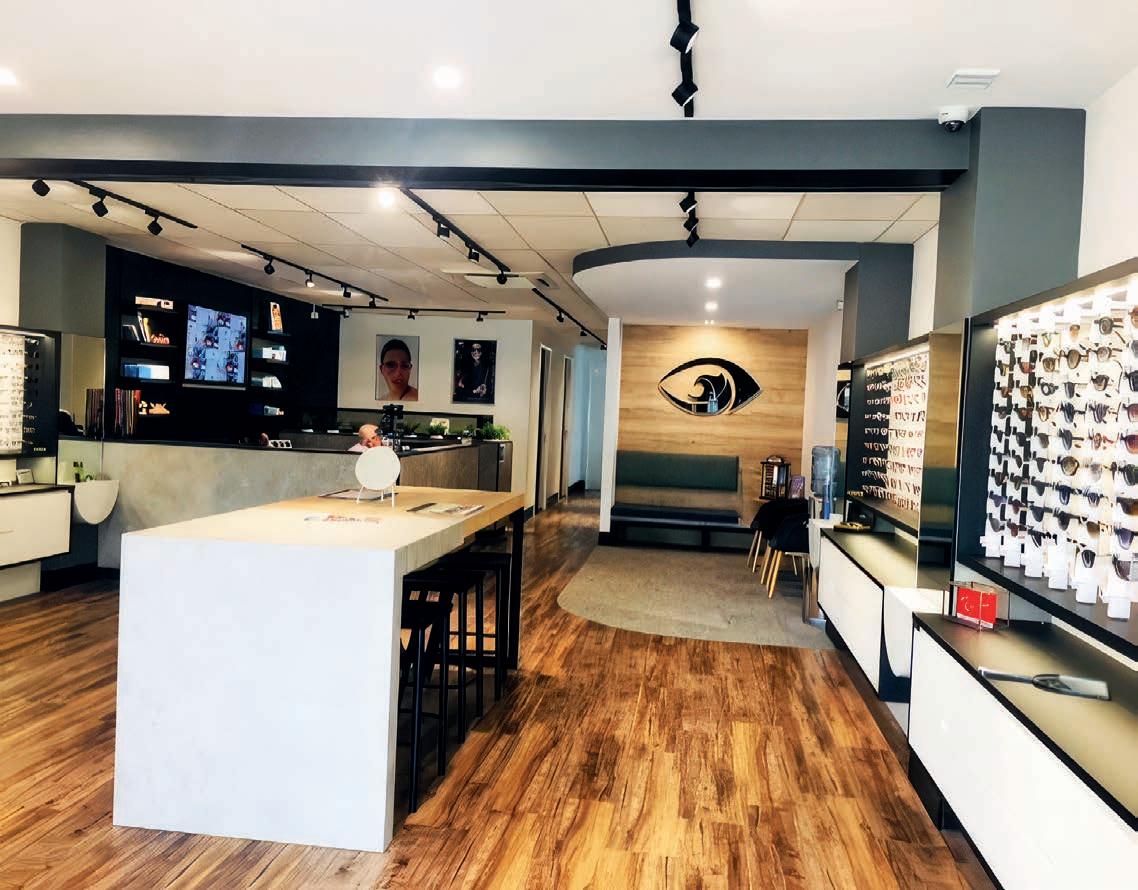
A OF FAITH LEAP


Every practice would love to see an uptick in productivity, precision and profitability – but what if it was as simple as a single business decision? This was the case for a Victorian seaside independent that recently switched to a new lens supplier.
Nepean Optical on Victoria’s Mornington Peninsula has always sought to o er high quality lenses and technologies, continually upgrading to keep pace with innovation. The business has always done well, but has been blown away by the immediate returns since going all-in on a new lens manufacturer.
Seven months ago, the practice started introducing technology from German ophthalmic lens company Rodenstock. Beyond carrying the manufacturer’s trademark lenses, Nepean Optical has installed the company’s ImpressionIST eyewear centration tower and its hero device – the DNEye Scanner 2 – that creates a biometric model of the eye used to calculate the final lens. Bringing all of this together, the business uses Rodenstock’s CNXT program that transfers patient measurement data automatically and in real time between devices.
“We have always ensured we provide our customers with high quality lenses and technologies, continuing to upgrade and invest in the more advanced processes and designs available in the market. But the Rodenstock technology, the processes and the patient journey is beyond what we have been able to o er before,” says Nepean Optical principal optometrist and owner Mr Michael Mether.
“As business owners, ROI is not just considering the financial benefits but also justifying patient satisfaction and benefits. Being able to o er a competitive edge is a priority for us, and providing superior quality for our patient base is integral to our practice values. The Rodenstock technology has streamlined the process which has enhanced our productivity, precision and improved profitability.”
For practices o ering the very best of Rodenstock’s lenses, the DNEye Scanner is the lynchpin. Within a matter of seconds, it takes more than 7,000 measurements of 80 parameters to ultimately produce a unique biometric lens for the patient. These premium, tier one lenses are known as B.I.G. EXACT, and are helping practices like Nepean Optical to elevate and di erentiate their service.
But the DNEye device has also helped the lens manufacturer create a second
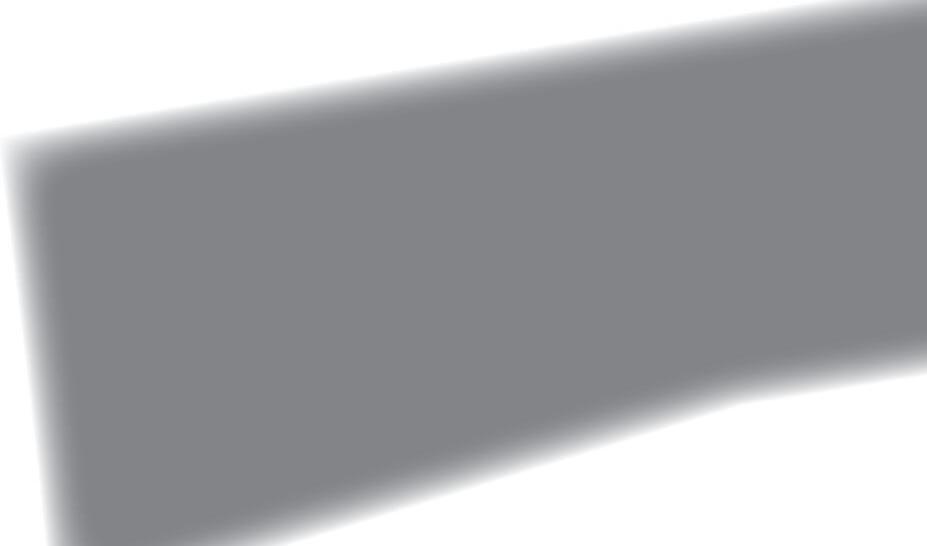
tier lens, B.I.G. NORM, that uses AI trained on more than 500,000 DNEye scans. By harnessing correlations in data from the subjective refraction – sphere, cylinder, axis, and addition – Rodenstock has been able to o er another highly personalised lens design at a lower cost.
“Rodenstock has introduced many firsts to the world of optics and with the unique DNEye Scanner being the world’s most innovative eye test it was an easy decision,” Mether says.
“The DNEye allows us to o er our patients the only true biometric lenses in the world and this is extremely exciting for us as professionals knowing we are working with the best to provide our patients with the best in both clinical care and individualised products.”
By installing the full gamut of Rodenstock technology, Mether says the practice can now o er a truly unique patient experience.
At Nepean Optical, the patient journey begins in the pre-test room where time is allowed to educate patients on the process of the DNEye scanner and the individualised information it collects. Then, the optometrists carry this through to the examination room to discuss and review the data on the CNXT system. The optical dispensing team then complete the journey with the ImpressionIST tower where the patient is precisely measured for all position of wear calculations.
“All of our Rodenstock technology has enhanced brand and practice reputation, helped us to create a point-of-di erence in the market and given our patients access to the most technologically advance products. Patient satisfaction and retention has increased. All of those are critical in the optometry landscape today,” Mether says.
In terms of where the lenses have delivered the most impact, Nepean Optical has had positive feedback from a vast array of patients. With a larger percentage of its patients being presbyopic, this is where the practice has seen the best results in progressive lenses, but those with higher prescriptions and astigmatism have also proved extremely successful.
24 INSIGHT April 2024
LENSES





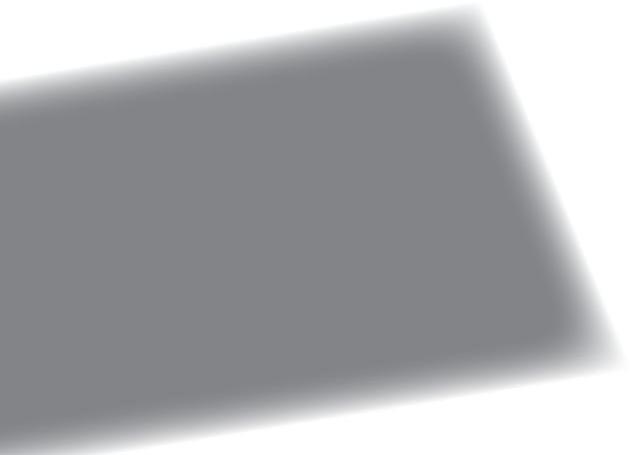




“Common patient responses include noticeably much sharper vision along with less peripheral distortion and better motion perception,” Mether says. “And customers are returning to seek further information about the technology they have received in their lenses so they can tell family and friends.”
NEPEAN OPTICAL’S RODENSTOCK ROLLOUT
Not only is switching to an entire new lens brand a significant financial investment, but a major commitment to new workflows, processes and terminology for practice sta .



Ms Nicola Peaper, national professional services manager at Rodenstock Australia, is a key figure during the installation and integration process for independent customers. The goal is to be thorough enough so sta have the confidence to dispense the lenses, while providing minimal disruption to the business.
Mether says between Peaper and her depth of knowledge, Rodenstock’s account manager, IT support and the laboratory sta , the practice has felt well supported during a phased integration.
“The transition to Rodenstock has surprisingly been easy. We endeavoured to keep the transition as simple as possible initially with our lens o erings, introducing more products and designs over time to allow our thorough understanding and confidence in what we were o ering our customers,” Mether says.
“Training with the Rodenstock team on their products and equipment
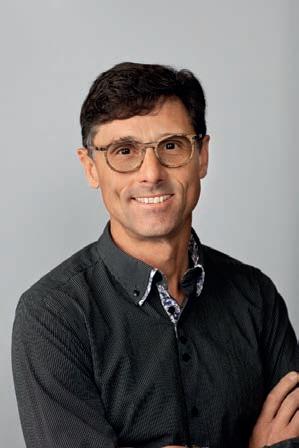

“ALL OF OUR RODENSTOCK TECHNOLOGY HAS ENHANCED BRAND AND PRACTICE REPUTATION, HELPED US TO CREATE A POINTOF DIFFERENCE IN THE MARKET AND GIVEN OUR PATIENTS ACCESS TO THE MOST TECHNOLOGICALLY ADVANCE PRODUCTS.”
MICHAEL METHER NEPEAN OPTICAL
has allowed our sta to embrace and thrive with this transition. Knowing a Rodenstock team member is only a phone call away if needed has provided great ease and confidence with the transition.”
Beyond improved spectacle lens outcomes, Nepean Optical has also found the DNEye Scanner fills other needs in its practice. The device has multiple functions including aberrometry, topography, pachymetry, and tonometry, meaning it can provide other clinical insights.
For example, Mether finds pachymetry results, anterior chamber and angle scans useful for glaucoma triage. Axial length calculation has a benefit for myopia progression analysis, and corneal mapping is helpful for asking further questions as to why visual acuity may not match expectations. This message can then be explained visually to the patient.
“The lens opacity function is also very demonstrative to patients as to why they cannot see properly,” Mether explains.
“Auto refraction gives so many clues as to the final refractive error measurements and really speeds up the process and confidence of refractive error findings. The vision simulator function is able to illustrate what the patient sees without spectacles, and why they have the symptoms they have, and the benefit of vision correction.”
Established in 1990, Nepean Optical has prided itself on comprehensive eyecare and services – including behavioural optometry and vision therapy – with a focus on advanced diagnostics and personalised treatment plans for patients. Its patient demographic is wide ranging from infants and young children to older generations.
By o ering Rodenstock technology, the sta have been able to heighten their delivery of tailored, personalised eyecare, providing only the best experience they can during the examination and beyond. This mindset, according to Mether, is essential to the prosperity of independents in Australia.
“It’s absolutely vital,” he says. “By highlighting our unique patient journey, products and values, we can create a point-of-di erence in our business. Having access to innovative, precise and world leading technology sets us apart as independents, allowing us to deliver exceptional clinical care.”
INSIGHT April 2024 25
ABOVE FROM LEFT: The DNEye Scanner is now a central instrument at Nepean Optical. Image: Nepean Optical; The independent practice is located in Rosebud on Victoria’s Mornington Peninsula. Image: Nepean Optical; Rodenstock’s DNEye Scanner drew plenty of interest at Melbourne’s O=MEGA23 conference in September 2023. Image: ODMA.
Image: Nepean Optical.
Topcon Refraction Suite
Ophthalmic Diagnostic Solutions
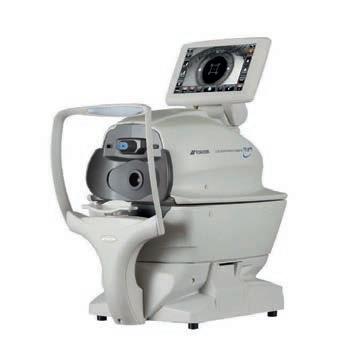
Topcon TRK-2P

Completely automated alignment, focus and measurement acquisition.
Flexible colour touch screen for versatile positioning. Integration with Practice Management Software.
All four measurements, in both eyes, fully automatic.
Auto-Refraction
Auto-Keratometry
Non-contact Tonometry
Non-contact Pachymetry

SOLOS
Topcon’s fully automatic lensmeter.
Fully automated functionality
Large colour touch screen, great for lens mapping and light transmittance
Integration with Topcon CV-5000 or practice management software


Topcon CV-5000
Computerised Vision Tester - optional integration with PC-50s LCD Visual Acuity Chart.
Automated Refractor Head controlled by KB-50 colour touch screen and dial controller
Advanced integration – pull through previous script and/or auto-refraction, and export final subjective data to practice management software

CL-300
Computerised lensmeter.
Colour touch screen control
Auto-progressive lens detection and UV transmittance
Integration with Topcon CV-5000 or practice management software
For more information contact your Device Technologies representative.

1300 DEVICE (338 423)
customers@device.com.au device.com.au
0508 DEVICE (338 423) customers@device.co.nz device.co.nz
RA:060224JO
MYOPIA
AND SEIZING THOSE SLIDING DOORS MOMENTS

While Australasian optometrists are near the front of the pack when it comes to myopia management, some argue more needs to be done to make a meaningful societal difference. With an urgent situation upon us, what targets can local practitioners set themselves to lift prescribing rates while mastering those crucial moments in the consulting room?
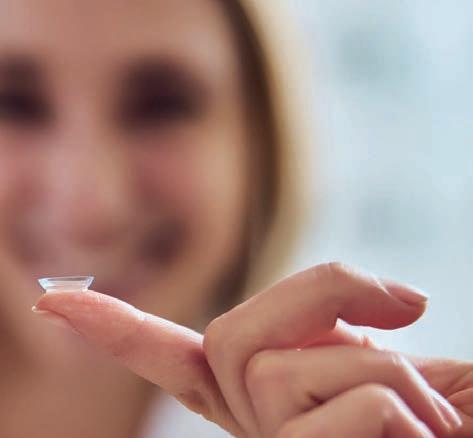

Just how engaged are Australian optometrists when it comes to myopia management? It’s an interesting question – and one that can be most reliably answered from a 2023 International Myopia Institute (IMI) survey 1 assessing the attitudes and clinical strategies of eyecare professionals (ECPs) across the globe.
On most metrics, Australian ECPs who completed the self-administered, internet-based questionnaire scored well. Some topline results include the lowest use of single vision lenses in young myopes in this part of the world, while prescribing rates for myopia control spectacle lenses and contact lenses are among the highest.
Further, the minimum degree of myopia in a child to warrant an intervention is the lowest in Australasia (−0.64 ± 0.37 D), with practitioners in the region also rating their activity in myopia control 7.9 (± 1.2) out of 10, the highest alongside Asia.
With that said, research from companies like CooperVision – which has skin in the game when it comes to myopia with its MiSight 1 day contact lens – suggests there are still many children that would benefit from myopia management who have yet to undertake it.
So, what simple, practical steps can optometrists make in their busy schedules to seize those crucial moments when parents are on the fence about myopia management? Also, how does one go about breaking the news to parents and patients, and what may be some useful KPIs and deadlines practices can set themselves to lift prescribing rates for patients currently without a treatment?
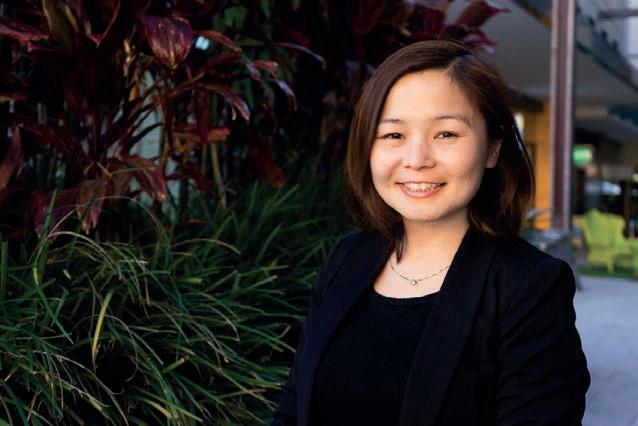

"PRACTITIONERS THAT EMBRACED MYOPIA CONTROL REPORTED EXPERIENCING A LIFT FROM ENHANCED PATIENT LOYALTY, INCREASING PRACTICE REVENUE AND IMPROVED JOB SATISFACTION.”
DR MARGARET LAM OPTOMETRIST

Referencing the aforementioned study, ‘Global Trends in Myopia Management Attitudes and Strategies’ 1 by Prof James Wol sohn et al, prominent Sydney practitioner and Optometry Australia national president Dr Margaret Lam says while Australian and New Zealand optometrists rated well globally, they still lag behind Asia and other countries in how often they prescribe better myopia management options.
“Unfortunately, despite the progress we have made, globally, the most commonly prescribed option for patients still remains single vision distance spectacles instead of many other better myopia management options such as orthokeratology, therapeutic medical therapy, myopia control spectacles and contact lenses,” she says.
“Interestingly, in contrast, the same study found that practitioners that embraced myopia control reported experiencing a lift from enhanced patient loyalty, increasing practice revenue and improved job satisfaction.”
Lam is a also member of the Childhood Myopia Working Group – a cross profession body of ANZ ophthalmologists and optometrists considered leading myopia experts. The group was established in 2018 to deliver a recommended Standard of Care describing the key elements to e ective myopia management without prescribing exactly how or when to employ specific techniques.
She believes Australian and New Zealand optometrists fully appreciate the urgency of the situation. But behaviour change takes time, including acceptance of the problem, and experience to refine communications to parents.
“Yes, more can always be done, but we have come a long way from routine under-prescribing, distance only spectacles, and a lack of awareness of ‘myopia is simply a number’,” she says.
“I think consistency and persistence is the key. The behaviour change pathway is often a series of steps, those steps being, I think we have defined the need for change, defined our goals, we’ve motivated stakeholders to become engaged, and we have elements of a plan in place for better management for our patients. Now we have to manage this change collectively as a profession to lift standards to become consistent for myopia management prescribing, to set the stage for a better future more consistently with all of our patients.
“This journey just takes time and we are moving slowly and surely in the right direction. There will always be di erences between individuals between
INSIGHT April 2024 27
MYOPIA
Image: Svitlana/stock.adobe.com.
Image: Margaret Lam.

KEY MYOPIA FIGURES
• By 2050 more than half of the world’s population could have myopia and 10-20% may have high myopia
• For Australia and New Zealand, the forecast rate of myopia by 2050 is projected to be 55%
• C urrently, 36% of the local population is estimated to be affected by myopia
• Australia is expected to have 4.1 million high myopes and New Zealand over 600,000 high myopes by 2050, unless myopia management is widely implemented
• 3 1% of Australian children have never had an eye test.
early adopters, the middle of the pack and those that are more conservative. The more each practitioner can do their best influences the sum of the whole to change – and their colleagues also.”
Mr Joe Tanner, a registered optometrist and the head of professional a airs for CooperVision in Australia and New Zealand, also believes many optometrists understand the urgency. But for those who perhaps don’t, sometimes it can be down to not fully appreciating of the benefits of starting treatment at the earliest opportunity when the greatest savings in progression are possible.
Similarly, every dioptre increase significantly and irreversibly elevates the risks of vision-threatening complications in later life.
“The most cited barrier we hear from optometrists is parental resistance. Myopia management is not something with which many parents are familiar. They often need to be educated before a decision is possible. The treatments are usually more expensive than single-vision spectacles which can also be a hurdle. Experienced practitioners of myopia management have developed e ective ways to educate and communicate with parents and children,” he says.
“I think the consequences of an increased prevalence of myopia are understood. What might be less well-appreciated is the projected increase in the proportion of high myopes from around 10% now to 20% by 2050. 2 In other words, we could not only see a lot more myopes, but the average degree of myopia and the associated risks to vision could be significantly greater, too.”
In the first year of treatment, Tanner believes the “slow by 50%” rule of thumb can be misleading because this is derived from average
progression rates over several years.
“In the first year, most e ective treatments have an average e ect of 60-70%. While every individual is di erent, published studies on various treatments show that dioptric progression is, on average, less than 0.28D in the first year 3-6 which is less than some may expect. Greater progression than this in the first 12 months should give pause for thought,” he says.
BREAKING THE NEWS
With that said, Lam believes the local industry has reached a critical mass in awareness. The next step is consistent prescribing when practitioners see a low degree of myopia rather than simply waiting for a high degree of myopia later down the track. As a result, this will help patients at all levels to manage their myopia well.
“Creating a system to manage recalls and giving patients good clinical evidence at every visit on clinically proven ways small changes in behaviour and lifestyle characteristics can help ensure patients are holistically looked after beyond just prescribing the bare minimum of stronger specs each time they visit,” she says.
A major part of this is the way a myopia diagnosis is communicated to parents and their children. Similarly, these interactions can be a ‘sliding doors’ moment for young myopes in their eye health and vision journey.
Lam says starting from a position of empathy and being factual about the child’s progress and what can be done to help is extremely e ective. So can explaining the role of lifestyle factors and establishing a system where these tips are written down for patients to increase their retention and compliance.
“Having clear, good long-term discussions about management for your patient’s myopia really goes a long way to helping them understand the repercussions and make well informed decisions,” she says.
“From there, once you have created an aware and engaged parent, parents are open to listening to advice on better prescribing options and proactive lifestyle habits to reduce the rate of progression.”
If the parent is hesitant, Tanner says being ‘pushy’ is probably not a good idea and nor is overloading them with statistics.
“Simply asking the parent what would help them to decide can be useful,” he says. “The childmyopia.com and mykidsvision.org websites are excellent resources for parents who want to know more. Others might respond to more reassurance such as the optometrist stating that this is what they would recommend for their own child or loved one.
“While a myopia diagnosis in a child is not good news and parents need to understand that this creates a risk to vision, we also have a very positive story to tell and that may be more motivational.
"Rather than over-emphasising the potential serious consequences of progressive myopia to obtain a decision, explaining that we have the knowledge to make a significant reduction to the risks can help parents to make the right decision for their child. By agreeing to start treatment, the parent and child are taking control of the situation and they should feel good about that choice.”

28 INSIGHT April 2024
The minimum degree of myopia present in a child to warrant adoption of myopia management varied between continents (n=3,017). This was the lowest in Australasia (−0.64 ± 0.37 D). Image: ARVO Journals.1
Clear, long-term discussions can help patients make well informed decisions.
MYOPIA
Image: fizkes/ Shutterstock.com.
SETTING TANGIBLE GOALS
So, if an optometrist wants to be more engaged with myopia management, what may be some useful benchmarks and goals to work towards?
As a starting point, Tanner says all parents of myopes not already undertaking treatment could be given an information leaflet on arrival for an appointment and urged to read it before entering the consulting room. This could expedite the conversation that will follow with the optometrist.
On a strategic level, on the basis that many young myopes are seen annually, he suggests practices could set a simple target of ensuring all existing young myopes who need treatment will have had every opportunity to commence within a year. New young myopes should be urged to begin treatment immediately or at least within three to six months, assuming an early recall appointment, he says.
“If we could achieve this then, in a year or so, we should largely be dealing with new myopes only,” he adds. “Ideally, we should be examining many more children as they begin school and looking for the pre-myopes. Most adult patients know or have children and they should all be encouraged to bring them for testing. So, perhaps another measure is the number of examinations performed on young children each year.”
Considering what the industry knows about myopia, Tanner says few children born in Australia or New Zealand today should become high myopes. According to Holden et al. 2, Australia and New Zealand are projected to have almost five million high myopes by 2050, around four times as many as now.
“But that assumes that we do not quickly and successfully implement evidence-based myopia management for all children needing it,” he says.
“Optometrists in Australia and New Zealand can make a huge change to the projected numbers of high myopes and, in doing so, help many more people to see well for a lifetime.”
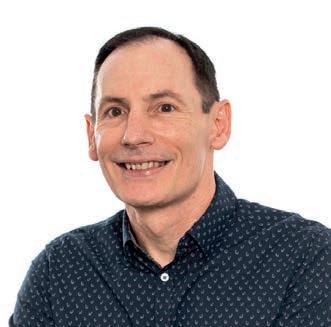
REFERENCES:

“RATHER THAN OVER EMPHASISING THE POTENTIAL SERIOUS CONSEQUENCES OF PROGRESSIVE MYOPIA TO OBTAIN A DECISION, EXPLAINING THAT WE HAVE THE KNOWLEDGE TO MAKE A SIGNIFICANT REDUCTION TO THE RISKS CAN HELP PARENTS TO MAKE THE RIGHT DECISION.”
JOE TANNER COOPERVISION
1. Wolffsohn JS, Whayeb Y, Logan NS, Weng R; International Myopia Institute Ambassador Group*. IMI-Global Trends in Myopia Management Attitudes and Strategies in Clinical Practice-2022 Update. Invest Ophthalmol Vis Sci. 2023 May 1;64(6):6.
2. Holden BA, Fricke TR, Wilson DA, et al. Global prevalence of myopia and high myopia and temporal trends from 2000 through 2050. Ophthalmology. 2016; 123: 1036–1042.
3. Chamberlain P et al. A 3-year Randomized Clinical Trial of MiSight Lenses for Myopia Control. Optom Vis Sci 2019;96:556–567
4. Lam CS, Tang WC, Lee PH, Zhang HY, Qi H, Hasegawa K, To CH. Myopia control effect of defocus incorporated multiple segments (DIMS) spectacle lens in Chinese children: results of a 3-year follow-up study. Br J Ophthalmol. 2022 Aug;106(8):1110-1114. doi: 10.1136/bjophthalmol2020-317664. Epub 2021 Mar 17. PMID: 33731364; PMCID: PMC9340033.
5. Bao J, Yang A, Huang Y, Li X, Pan Y, Ding C, Lim EW, Zheng J, Spiegel DP, Drobe B, Lu F, Chen H. One-year myopia control efficacy of spectacle lenses with aspherical lenslets. Br J Ophthalmol. 2022 Aug;106(8):1171-1176. doi: 10.1136/bjophthalmol-2020-318367. Epub 2021 Apr 2. PMID: 33811039; PMCID: PMC9340037.
6. Yam JC, Jiang Y, Tang SM, Law AKP, Chan JJ, Wong E, Ko ST, Young AL, Tham CC, Chen LJ, Pang CP. Low-Concentration Atropine for Myopia Progression (LAMP) Study: A Randomized, Double-Blinded, Placebo-Controlled Trial of 0.05%, 0.025%, and 0.01% Atropine Eye Drops in Myopia Control. Ophthalmology. 2019 Jan;126(1):113-124. doi: 10.1016/j.ophtha.2018.05.029. Epub 2018 Jul 6. PMID: 30514630.
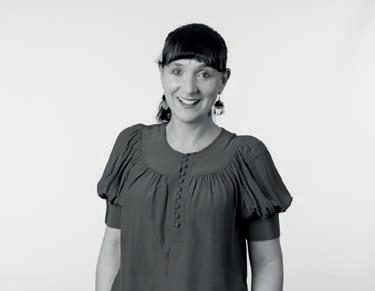
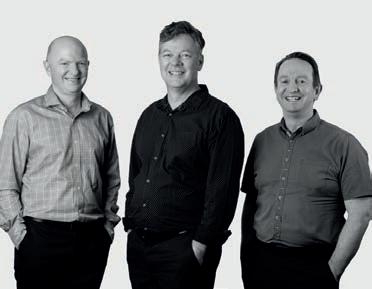

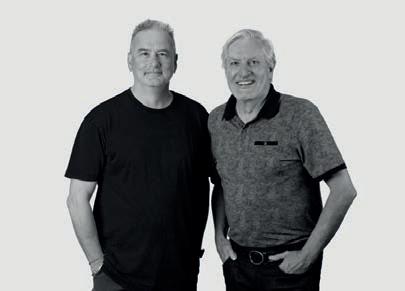
Eyecare Plus Mermaid Beach Eyecare Plus Moss Vale Eyecare Plus Orange Eyecare Plus Wagga Wagga OUR COMMUNITY SUPPORTING YOUR INDEPENDENT LOCAL SUCCESS 100% OWNED BY MEMBERS FOR MORE INFORMATION Yvette Safier | y.safier@eyecareplus.com.au or 0407 224 611 Philip Rose | philip.rose@eyecareplus.com.au or 0416 807 546
Image: CooperVision.
The Eyerising Myopia Management Device is approved in more than 30 countries, including Australia.



MANUFACTURER REFUTES
study claims
The findings of a University of Houston study into red light therapy for myopia management has prompted Australian MedTech company Eyerising International to issue several of its own counterpoints.
Australian medical device company Eyerising International says its device has been “misrepresented” in a recent study over the safety of repeated low-level red-light (RLRL) in myopia management. The company has provided four arguments against the paper and has taken particular issue with the implication that its instrument didn’t meet safety standards the company has been referring to.
Subsequently, Eyerising says it has spoken to the editor-in-chief of the Ophthalmic & Physiological Optics (OPO) journal – where the work was published – who has agreed to give the company the right of reply in the form of a letter to the editor to “address several of the inaccuracies and misrepresentations in [the] article”.
The study: ‘Red light instruments for myopia exceed safety limits’1 was published on 5 January 2024 and authored by Dr Lisa Ostrin, an Associate Professor at the University of Houston College of Optometry, and Alexander Schill, a senior research scientist with a background in biomedical and visual optics also at the University of Houston.
Focusing on two low-level red light (LLRL) devices – Sky-n1201a and Future Vision – the study aimed to characterise the output and determine the thermal
and photochemical maximum permissible exposure (MPE) of LLRL devices for myopia control.
The study concluded: “For both of the LLRL devices evaluated here, three minutes of continuous viewing approached or surpassed the MPE, putting the retina at risk of photochemical and thermal damage. Clinicians should be cautious with the use of LLRL therapy for myopia in children until safety standards can be confirmed.”
The article prompted Eyerising to issue a press release on 5 February 2024. The company took issue with several references to the Eyerising Myopia Management Device “in a negative and inaccurate manner; despite having not tested the device or contacted Eyerising International for information or comment”.
The company has addressed four key issues below:
Point 1
Eyerising said that despite having not tested the Eyerising device the authors of the OPO article wrote: “Of note, for the Eyerising and New Vision instruments used in clinical trials, claims of Class 1 do not appear to be supported by their published measurement data.”
“Eyerising International dispute this statement,” the company said. “Our device does not ‘claim’ a Class 1 designation, it ‘has’ a Group 1 instrument classification, indicating no potential light hazard exists, as defined by the ANSI Z80.36-2021 standard.
“ANSI Z80.36-2021 is the standard which the FDA require Eyerising International and every other manufacturer of ophthalmic laser instruments to meet.”
Point 2
In the conclusion, the authors of the OPO article wrote: “Instrument manufacturers must take into account ANSI standards for lasers used in ophthalmic applications to ensure that the retina is not at risk of photochemical damage.”
In response, Eyerising said the authors themselves did not use the latest ANSI standards required of ophthalmic instruments by the FDA.
“They state in the article that they used the ANSI Z136.1 standard as the benchmark for their tests. While acknowledging that the ANSI Z136.1 standards were developed to protect individuals from accidental exposure to lasers in occupational situations, there is a more recent ANSI standard specifically for ophthalmic instruments," Eyerising said.
"The ANSI Z80.36 standard specifies fundamental requirements for optical radiation safety for ophthalmic instruments. It applies to all ophthalmic instruments (including current, new, and emerging instruments) that direct optical radiation into, or at the eye. It also applies to those parts of therapeutic or surgical systems that direct optical radiation into, or at the eye for diagnostic, illumination, measurement, imaging, or alignment purposes.”2
The company said it was the ANSI Z80.36-2021 standard that the FDA required Eyerising to meet and which it has obtained.
“The Eyerising Myopia Management Device, unlike the two other devices which the authors did test, also meets the quality, safety, and e cacy standards required by medical regulators in over 30 countries across Europe and APAC, with several more pending,” the statement said.
“Therefore, for the authors of the article to imply that the Eyerising device does not meet the standards it claims is misleading.”
Point 3
In the conclusion the authors wrote: “Based on measurements in our laboratory, it is recommended that clinicians strongly reconsider the use of LLRL therapy for myopia in children until safety standards can be confirmed.”
Eyerising said numerous countries have established such safety standards and unlike the two copycat devices Ostrin tested, the Eyerising device meets the quality, safety, and e cacy standards required by medical regulators in multiple countries, as mentioned.
“Further, the authors’ conclusion is based on tests of two other devices in the authors laboratory but by implication includes the Eyerising device which they never actually tested but refer to inaccurately several time in their article,” the company said.
“The authors allege possible risks associated with LLRL therapy based on their extremely limited laboratory testing of two copycat devices but ignored and failed
30 INSIGHT April 2024
concluded
MYOPIA
Image: Eyerising International.
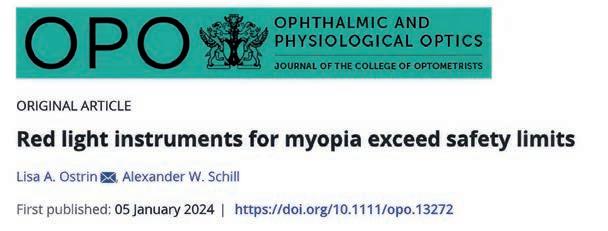
For the two devices evaluated in the study, the authors concluded three minutes of continuous viewing approached or surpassed the maximum permissible exposure, putting the retina at risk of photochemical and thermal damage. Image: onlinelibrary.wiley.com.
to mention that the Eyerising device has a proven safety record in both clinical trial and real-world settings.
“The Eyerising device has undergone 10 clinical trials and four real world studies, covering 1,785 patients, with a cumulative clinical trial use of 9.25 years – with zero significant adverse events recorded. The device has been used to treat more than 160,000 patients in the real world over the past eight years, and there are currently more than 80,000 daily users. To date, there have only been five cases of significant adverse side e ects reported; with no permanent damage recorded.”
Point 4
Eyerising also took exception with reference to a case study of a 12-year-old girl in China who experienced an adverse event, without mentioning the patient had not followed the guidelines for using the device.
“In fact, the patient had continued to use the device for several weeks after first experiencing prolonged afterimages, which is contrary to the ‘Instructions for Use’



(IFU) issued with the device. Nor did the authors report that a follow-up case study found that the patient had fully recovered,” Eyerising said.
“As of December 21, 2022, four months after discontinuing LLRL, the patient’s cornea appeared clear and the retinal structure was intact. The corrected visual acuity of both the patient’s eyes had recovered to 0.8. And OCT imaging showed that the integrity and continuity of the ellipsoid zone in the macular fovea of both eyes had been restored.3
To conclude, Eyerising said it took its responsibility for ensuring the safety and e cacy of its RLRL therapy device seriously.
“We remain committed to working closely with healthcare professionals and users to collect and investigate any adverse reactions and to address any potential concerns,” the company added.
FURTHER DETAILS FROM THE STUDY AUTHOR
In a press release announcing the results of her study on 29 January 2024, Ostrin said that while the two di erent LLRL devices assessed in the study were confirmed to be Class-1 laser products, as defined by International Electrotechnical Commission standards, they are unsafe to view continuously for the required treatment duration of three minutes.
“Class-1 lasers are low-powered devices that are considered safe from all potential hazards when viewed accidentally and briefly. Examples of Class-1 lasers are laser printers, CD players and digital video disc (DVD) devices. Class-1 lasers are not meant to be viewed directly for extended periods,” she said.
“Thermal ocular injury from a laser can occur with exposures at any wavelength when the temperature change of the retina is greater than 10°C, resulting in the denaturation of proteins. With thermal damage, the lesion size is typically less than the size of the beam diameter, and the resultant scotomas are permanent.
Ostrin’s work was funded by the National Eye Institute.
NOTE: References available in the online version of this article.


CONTACTYOURSAFILOREPRESENTATIVE TOVIEWTHENEWBRANDCOLLECTIONTODAY
au.customerservice@safilo.com|1800252016
































































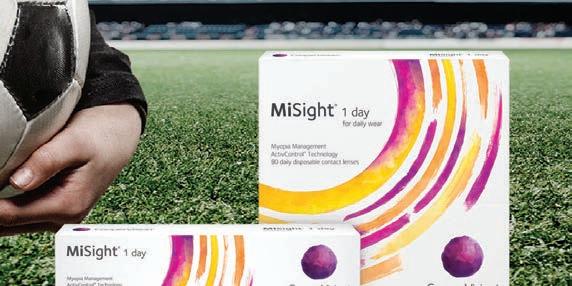



^ Plastic neutral¥ ^ Not a real patient or testimonial







MANAGING YOUR PRACTICE’S myopia integration
With an abundance of evidence, diagnostics and treatments, the bar has arguably never been lower for practices to incorporate myopia control. In fact, some contend there is a diminishing list of reasons for optometrists not to practise some form of management. Insight speaks to three practices about their strategies.
In almost any direction you look in the ophthalmic sector, one can find alarming headlines about the oncoming surge of myopia – expected to reach epidemic proportions on the current trajectory. Although the focus has largely been on the increasing prevalence in children, new data has reminded the sector that myopia progression occurs in adults too.
Recent findings from the Raine Study on a cohort of Western Australian young adults demonstrated that myopia onset occurred in one of seven people who did not have myopia at age 20. Perhaps the issue is bigger than many expected?
Mr Kevin Trac, of Westmead Eyes in Western Sydney – who has practised myopia control for more than a decade – says the fact that people of all ages are becoming more myopic is a significant problem that has been accelerated by environmental factors.
“Anecdotally, we see so many kids becoming more myopic. Now, I’m seeing the same trend in adults too. I also see a lot of doctors that are studying, and they’re still getting myopic at age 30,” Trac says.
With estimates that as many as 55% of people will be myopic by 2050 in Australia, thought leaders and key industry bodies argue it is more important than ever to ensure myopia management is integrated into optometry practise.
Insight talks to three optometrists with comprehensive myopia control protocols who share their insights to equip practices with the tools and acumen to e ectively tackle this major societal issue, and to optimise practice and patient outcomes.
Fortunately for optometrists – and according to these experts –good, comprehensive, and e ective myopia management does not require much to get started – and optometrists can expect a patient for life if executed well through ongoing follow ups, education, and communication.
KEEP IT SIMPLE
Trac says lifestyle factors are just as important as hereditary factors when identifying patients at risk of myopia progression.
“Everyone’s using a phone and the distance that people are now working is a lot closer; you’re stuck at 50 to 60 centimetres and more people are living in apartments now. So, consider the viewing distance in
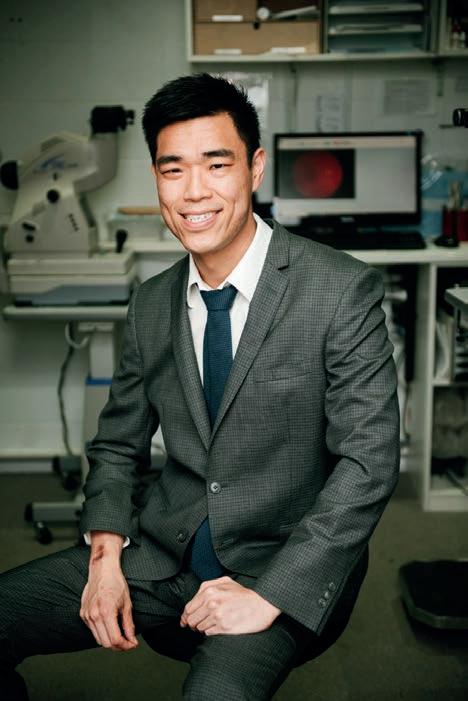

“ANECDOTALLY, WE SEE SO MANY KIDS BECOMING MORE MYOPIC. NOW, I’M SEEING THE SAME TREND IN ADULTS TOO. I ALSO SEE A LOT OF DOCTORS THAT ARE STUDYING, AND THEY’RE STILL GETTING MYOPIC AT AGE 30.”
KEVIN TRAC WESTMEAD EYES
INSIGHT April 2024 33
Image: Kevin Trac.
MYOPIA
Image: Studio Romantic/Shutterstock.com.
an apartment compared to a house for example.”
Similarly, Mr Jenkin Yau of Sanctuary Lakes Eyecare in Melbourne has been actively involved in myopia control for nine years. Therapeutically endorsed, he considers his practice to have a variety of management options available.
A catalyst for Yau's focus in myopia management was when he witnessed a patient – a mother of two young children in her 30s – lose her independence after su ering myopic maculopathy in both eyes. As a result, he is passionate about reducing the risk of pathology later on for patients, especially emerging from the pandemic, where he – like many other practitioners – haw seen an uptick in myopia progression.
“We have seen an increase in myopia as a result of COVID as people adjusted to new work and school conditions and became more reliant on digital devices,” he says.
Mr Mark Hinds, from Mark Hinds Optometrists in Brisbane, has practised orthokeratology (orthok) for 20 years. He incidentally found himself involved in myopia management because of the complex contact lens landscape.
When he began practising orthok, he discovered that his patients would experience less myopia progression over time. Clinical trials and evidence soon followed to support this and explained how it may have occurred.
“The safety profile of an orthok intervention for myopia progression is very well documented to be a safe mechanism in the right hands,” Hinds says.
For a successful myopia progression plan, Hinds says patient communication and education is key. With paediatric myopia management, teamwork is at the core of successful outcomes. He says
it’s necessary to adequately educate parents on the progression plan and ensure everyone’s on board.
He achieves this through comprehensive information packs directing parents and patients to the right resources.
Trac agrees, saying that communicating with patients – especially parents of paediatric patients – to ensure compliance, takes time.
“We make sure we give enough consultation time for our patients, so we don’t rush everything. We have a website which always has instructions. If there are any emergencies, patients are welcome to contact us,” Trac says.
When developing dialogue for e ective conversations with patients, Yau says confidence is key. Practitioners should take lifestyle factors into consideration such as outdoor time, natural light exposure, screen time, reading habits, physical activity, and near-work activities to communicate the types of treatment options available.
As communication is a team e ort when managing paediatric patients, Yau simplifies information as much as possible so it’s succinct, accessible, and engaging – which is especially important for children.
“It’s helpful to have videos and easy-to-understand written communication or cryptographic information, particularly for younger audiences. Also, by having information that is easily digestible and easy to communicate, the quicker you can get the information across,” Yau says. “And always provide an opportunity for the parents to ask questions. That way, the consultation will be more e ective.”
For Yau, good myopia management depends on e ective communication. A highly e ective and reputable practitioner can be identified based on the simplicity of the message they are trying to communicate. He suggests preparing messages and tools in advance.
1. Device Classification
Group 1 instrument
•ANSI Z80.36-2021 Tested
•Eyerising International is ISO 13485:2016 certified by notified body BSI
2. Clinical Evidence
Clinical trials and real-world studies
•10 clinical trials across China
•4 real-world studies across China

•4 ongoing clinical trials & real-world studies outside China
(with promising interim results from ongoing multi-ethnic studies as to the efficacy and safety of our device)
• Cumulative sample size of 1785 patients across RLRL published studies
• 111 months / 9.25 years of cumulative RLRL use in published studies
• Zero significant adverse events recorded in published studies
3. Long-Term Device Use
8+ years of device use as originator & patent holder of RLRL technology
4. Post Market Surveillance
Global monitoring in place
• 160,000+ patients have used the device
• 80,000+ patients currently using the device
• 5 significant adverse events recorded in PMS
• Zero permanent injuries sustained
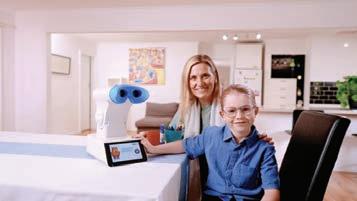
5. Regulatory Clearances
7x Class II regulatory clearances held following extensive risk-benefit analyses by the competent regulatory bodies
• China – CFDA • UK - MHRA • Australia –TGA • Europe – CE • New Zealand – Med Safe • Malaysia – MDA • Turkey - TMMDA
Myopia
Device
safe Device Classification Clinical Evidence Long-Term Device Use Post Market Surveillance Regulatory Clearances Device Classification Clinical Evidence Long-Term Device Use Post Market Surveillance Regulatory Clearances
years off label 4 years on label 2016 Amblyopia use 2018 Myopia use (off-label) 2020 Myopia use (on-label)
Eyerising
Management
has proven e cacy and
4
To find out more about the Eyerising Myopia Management Device get in touch with your local Eyerising International team today. info@eyerisinginternational.com | www.eyerisinginternational.com Information provided is as per data on file at the time of printing.
MYOPIA
“Whether it may be videos or mailable written information – have these defaults or emails ready to go,” Yau says.
"While it may be simpler to o er the option that takes the least amount of time to implement or explain, there is much value in compliance and uptake when taking the time to go through the why and the how in myopia management."
Although myopia control can be considered more time consuming due to greater communication requirements, Yau says optometrists should not be discouraged by the time constraints, as with practise, the message becomes more succinct and e ectively delivered.
“It’s something that as you get more competent in delivering the message, the communication aspect becomes quicker and quicker. And that’s why I think it’s important to have the written or digital tools readily available. Do what works for you, so that you can send that message succinctly, competently and convincingly,” he says.
WORKING TOGETHER
Independent practise is associated with greater flexibility as optometrists can select special interests, unconstrained by KPIs that are perhaps more commonplace in a corporate environment. Thus, it could be argued that it’s easier for independents to integrate myopia progression plans into practise.

according to Trac, just need a greater time commitment.
“For patients that are non-compliant, we will bring them back more often and then speak to them more closely. They usually end up back on track,” Trac says.
In saying that, in more recent times Specsavers and OPSM have laid out their intentions for large scale myopia management integration into their workflows.
“What has stopped comprehensive management is obviously a time element. These patients do take up more time,” Trac says.
“Some practices need to make KPIs, so myopia management isn’t necessarily as lucrative if the patient can’t a ord myopia spectacles and is given an atropine script instead. Now, you also need to review that patient every three to six months. There’s no incentive for an employee who is working towards KPI targets.”
For optometrists wanting to develop their myopia control protocol, Hinds recommends establishing relationships with optometrists who may not have the resources or the time to dedicate to myopia progression plans. They can then refer on to the appropriate practitioner and work as a team.
“Go to conferences and liaise with corporates who cannot do the full suite of myopia interventional treatment such as orthok and are willing to work together for the patient's best interest,” Hinds says.
Yau says patients and their families can be hesitant in adopting a myopia control plan if they “appear to be fine”. Nevertheless, he recommends providing them with as much clinical information available that encapsulates risk of progression and likely outcomes.
“We tell them what we expect to happen later on down the track. And sometimes it does take six to 12 months before they realise what we said would happen, happened,” he says.
However, non-compliance shouldn’t deter optometrists from implementing myopia control plans in certain patients. These patients,


“WHILE IT MAY BE SIMPLER TO OFFER THE OPTION THAT TAKES THE LEAST AMOUNT OF TIME TO IMPLEMENT OR EXPLAIN,THERE IS MUCH VALUE IN COMPLIANCE AND UPTAKE WHEN TAKING THE TIME TO GO THROUGH THE WHY AND THE HOW IN MYOPIA MANAGEMENT."
JENKIN YAU SANCTUARY LAKES EYECARE
With a multitude of interventions, if one fails then try another, Hinds says. He adds that if practitioners are not confident in orthok, then they should utilise myopia control spectacle lenses. Many major manufacturers have developed products in this space in recent times with proven e cacy.
“With the treatments and options we have available today, there shouldn’t be anyone out there that doesn’t have some sort of myopia progression plan in place in their practice,” Hinds says.
CONTINUOUS DEVELOPMENT
As with all areas of practise, Hinds recommends ongoing professional development in this space, with tertiary knowledge of myopia supplemented. He says working with like-minded, experienced colleagues can help in the understanding of evidence-based research.
He recommends joining associations such as the Orthokeratology Society of Oceania (OSO) and the Cornea and Contact Lens Society of Australia (CCLSA), which are good places to gather information and collaborate with colleagues.
“I have completed and would recommend the international fellowship associated with the OSO (FIAOMC) which was challenging but rewarding. The other state-based conferences have a good coverage of myopia in them,” Hinds says.
To support this, he also recommends the Myopia Profile website established by Dr Kate and Dr Paul Gi ord, a knowledge and resource centre with online courses. The site includes articles that answer clinical questions, science reviews, downloadable clinical resources, and online courses.
For optometrists to best stay up-to-date with treatments and research, Hinds says there is great importance to base clinical pathways on evidence-based medicine and analyse peer reviewed scientific journals with sound science and clinical trials to determine the best clinical pathways for patients.
He says: “Although it is nice to be an early adopter of technology, I think that it is critical to follow this philosophy and think: ‘Would I use this therapy or intervention on my child?’
“Although we have been able to measure the axial length of the paediatric patient’s eye for some time with devices such as the ZEISS IOL Master or OCTs, we did not understand what normal growth is and what is pathological or myopic growth.”
He says that knowledge in this area is improving with more devices being commercially available to measure and quantify this. This includes
INSIGHT April 2024 35
Image: Jenkin Yau.
Mark Hinds has practised in orthoK for 20 years
Image: Mark Hinds

“ALTHOUGH IT IS NICE TO BE AN EARLY ADOPTER OF TECHNOLOGY, I THINK THAT IT IS CRITICAL TO FOLLOW THIS PHILOSOPHY AND THINK: ‘WOULD I USE THIS THERAPY OR INTERVENTION ON MY CHILD?’
MARK HINDS
MARK HINDS OPTOMETRISTS

essential software tools that not only measure the refraction but also the
He believes every optometrist and ophthalmologist should be proactive
“The benefits of this are well documented and there is no rock big
EVERYONE WINS
Trac says that beyond optimised patient outcomes and practitioner satisfaction, the benefits of embedding myopia management are rooted in opportunities for practice growth.
“In terms of benefits for the practice, it is practitioner satisfaction that you can do a job well. You get referrals from the friends and family that can grow the practice quite significantly,” Trac says.
He also says specialising in myopia allows practices to di erentiate themselves from the bunch and stay competitive.
“The practice becomes more professional and it now has a niche which can be distinguished from a standard practice," Trac says.
Further, Yau says that myopia management is ongoing and doesn’t stop once a protocol has been established with a patient.
“These treatments do need revising. Whether it’s because the child outgrows them or the lenses need to be replaced: It’s a good practice builder,” he says.
But the core incentive is to halt the rate of myopia progression.
Comprehensive myopia progression plans can improve the quality-of-life for children which Hinds says is “one of the most rewarding outcomes for a practitioner”.
He adds: “By successfully managing myopia progression, practitioners can help children maintain clearer vision, reduce their dependence on corrective lenses, and minimise the risk of associated eye conditions, ultimately enhancing their overall well-being and daily functioning.”
Another rewarding aspect is the long-term preservation of children’s visual health and prevention of myopia complications.
“By implementing e ective myopia prevention strategies and interventions, practitioners can potentially reduce the risk of serious eye conditions, such as retinal detachment, glaucoma, and macular degeneration, which can have profound implications for children’s ocular health and vision throughout their lives,” Hinds says.
He says the journey with paediatric patients is a lifetime, and it is a privilege to be a part of their treatment and see the di erence that can be made in their lives.
“We have seen these patients treated with great success and some of them go on to become optometrists, paediatricians, and ophthalmologists and are now part of the treatment of future generations,” he says.






















ANALYZER

The New Standard in Visual Field Testing
V irtual Reality Visual Field device - incorporates complete Visual Field analysis.
Detailed progression analysis and the most versatile & efficient vision screening technology.











VF2000 NEOPORTABLE VISUAL FIELD























Latest technology provides the same reliability and reports as the “gold standard”.
Supplied complete with a Tablet PC –BlueTooth interface with the VF2000 NEO.
Compact/Space-saving/Portable - can be used anywhere, no need for a darkened room.









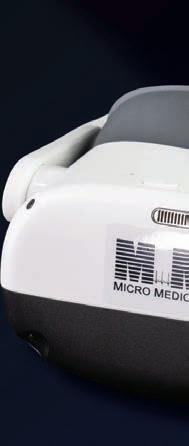










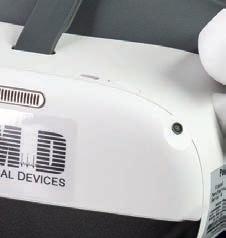




Features include:






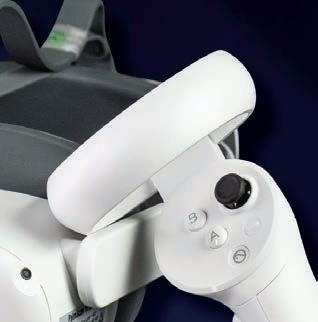
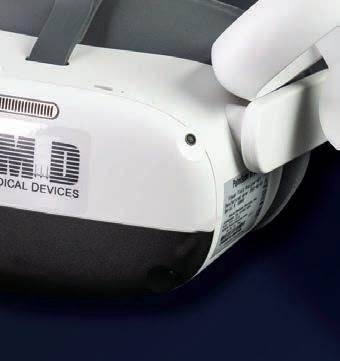
Active eye tracking –enhances reliability.

FDT Testing


Full and Fast Thresholds VF Testing plus Neuro, Kinetic, Ptosis and Estermann tests
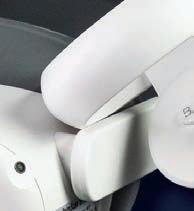


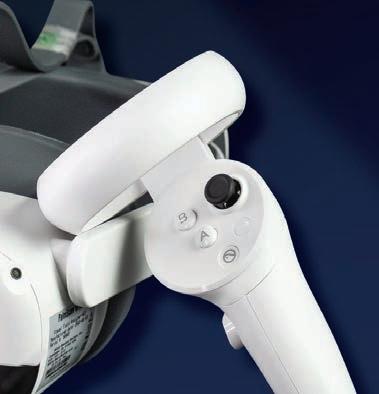




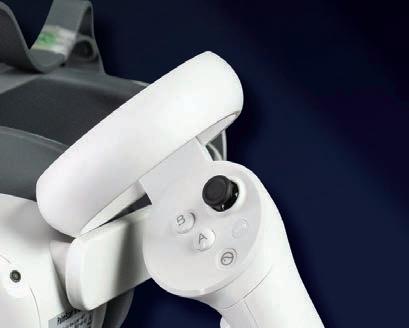















Stereopsis Visual Acuity and Contrast Sensitivity






Colour Testing (Ishihara, D15 and Advanced Colour Tests)
Eye Mobility and Strabismus Ph: 1800804331




sales@bocinstruments.com.au
Email:
Image: Mark Hinds.
MYOPIA

PAEDIATRIC MYOPIA MEETS CUTTING EDGE
biometrics
The latest AL-Scan M biometer from Nidek can be characterised by unprecedented speed, accuracy, and reliability. But for optometrist SUSAN WALTON, it was the ability to offer myopia management with greater confidence that cemented her decision.
In preparation for a myopia epidemic, optometrists across the country are re-evaluating their current practice scope and ensuring they are equipped with the latest technology and treatments to optimise management of this progressive condition.
Mrs Susan Walton OAM, principal optometrist at Specialeyes Newcastle, decided to expand her suite of diagnostic instruments to include the new Nidek AL-Scan M Biometer so she can o er her patients premium, all-inclusive eyecare.
Walton is a behavioural optometrist, and fellow of the Australasian College of Behavioural Optometry and Australasian director of the Opening Eyes program for Special Olympics. With two vision therapists in the practice, the team see a large volume of paediatric patients.
With an estimated 25% of children diagnosed with myopia in Australia, Walton wanted to ensure her practice’s diagnostic and management capabilities catered to the needs of the population.
“I thought: ‘I should be looking more closely at the increasing numbers of younger children becoming myopic coming through the practice’,” Walton says. “The biometer was a means of tracking myopic change in an objective way that I didn’t have within the scope of the practice before.”
Previously, she had relied on a topographer to fit orthokeratology (orthoK) lenses as a means of myopia control, and ensured the children had full scope binocular vision assessment. Now, AL-Scan, distributed by BOC Instruments in Australia, is set to transform myopia management within Walton’s practice, as well as practices across the country, with biometry considered the gold standard in tracking progression.
According to its manufacturer, Nidek, the AL-Scan boasts unprecedented speed and accuracy and can measure axial length with accuracy to within 0.01mm.
Due to its 3D auto tracking and auto shot features, Walton says the AL-Scan does most of the work for the operator.
“With the focusing auto measurement the operator roughly locks on the child’s eye and the machine takes over and does everything itself. It’s super easy,” she says.
One pivotal feature, according to Walton, is its speed. Often working with children, she finds it can be di cult for them to maintain composure for an extended period while having a measurement taken at various pieces of equipment.
Therefore, she says the speed at which the AL-Scan takes the
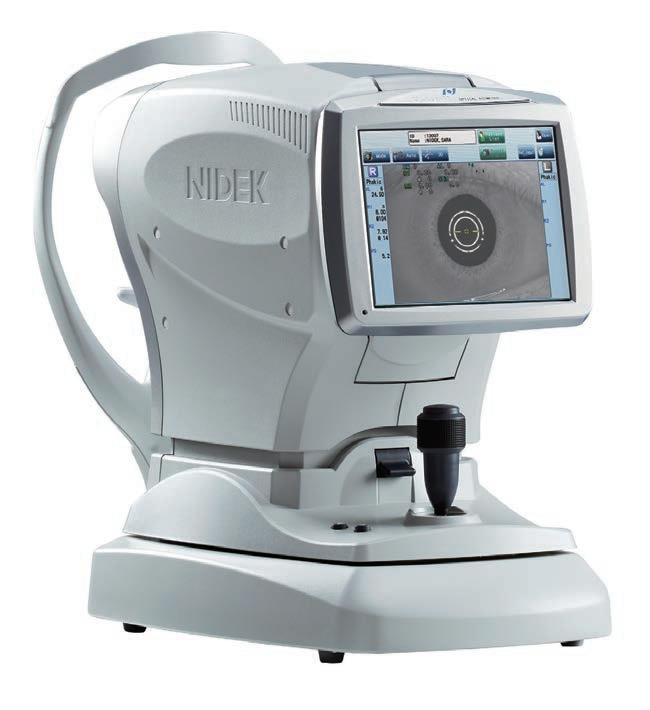
measurement is a game-changer. It is also supported by good reproducibility and repeatability, which is independent of the operator.
Additionally, because the biometer has automatic capabilities, Walton can alleviate some workload o herself.
“Trying to get kids on devices and have them sit still can be really di cult sometimes,” she says.
“This one is so fast and I’m quite pleased to say I can happily allow a technician to take the measures because I feel like there’s almost no room for error – since the machine is so easy to utilise.”
Other features that stood out, which consolidated Walton’s decision to make the purchase, was its high accuracy and excellent software platform that provides information about trends for future measures post-baseline.
“The beautifully arranged report comes out from the device and software platform that’s attached to it, which allows us to both print the information and give to the patient and then store it within the practice,” Walton says.
The biometer can be integrated with optional Myopia Viewer MV-1 software for myopia management or as standalone. If a Nidek autorefractor is connected, the MV-1 can receive the refraction data. Otherwise, refraction data can be manually entered.
The software integration is said to allow for evaluation of the progression of myopia, with comparisons to age-matched populations. Myopia progression is extrapolated based on growth curves.
The accuracy of progression and estimates of the risk of high myopia in
KEY FEATURES
•
- Corneal curvature radius
• 3D auto tracking and auto shot
• Optional Myopia Viewer MV-1 software for myopia management
Source: Nidek/BOC.
38 INSIGHT April 2024
BOC Instruments. Image: BOC Instruments.
Several clinical parameters in 10 seconds
- Axial length
MYOPIA
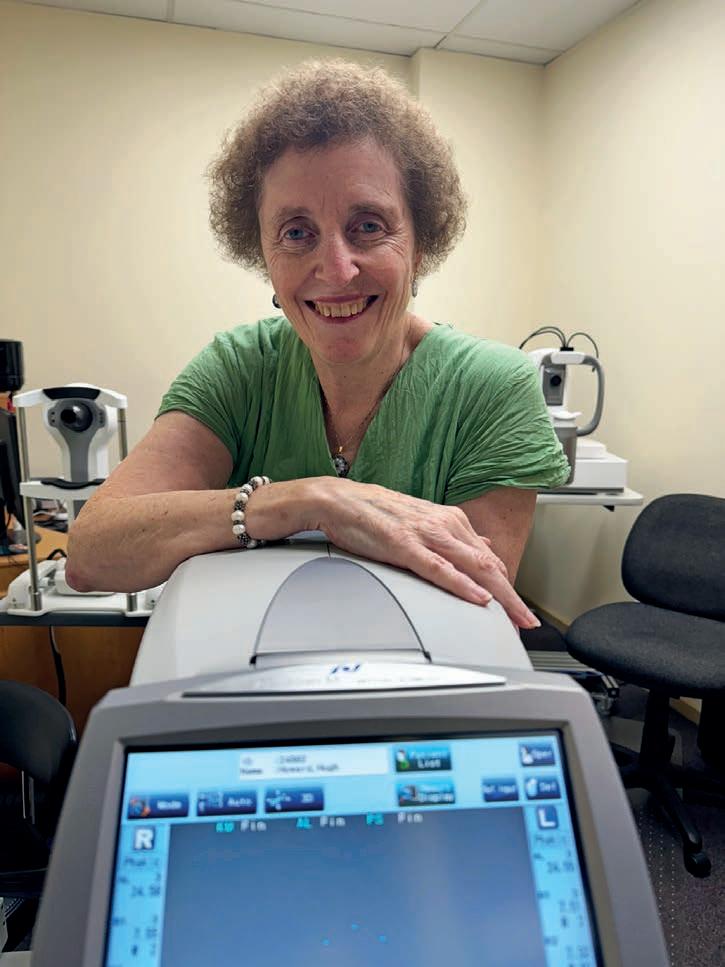
adulthood is supported by robust research. In fact, a multicentre study by Tideman et al., 2018, published in Acta Ophthalmologica showed that the biometer was accurate in predicting trends post-baseline measurement.
So, Walton is eager to implement longer-term myopia measurements in her own patients, in order to optimise management protocols and o er tailored eyecare.
“The system o ers graded scales of what’s expected for normal length for both Caucasian and Asian eyes and then deviation from that which indicates the possibility of myopia,” she says.
Walton is using the AL-Scan as standalone and – as a new addition to her suite of diagnostics – is currently obtaining baseline measures until she can gather enough data for myopia progression among her patients over time.
“My plan is to take measurements three or four times a year for each patient to monitor any progression,” she says.
“If there is a trend of faster elongation of an eye, then I would have to consider if I have o ered that patient the best myopia management protocol, and perhaps consider atropine, since I am not therapeutically endorsed.”
ABOVE AND BEYOND
Beyond the capabilities of the device, Walton says the after-sales service and ongoing support o ered by BOC Instruments has been impressive, and her previous positive experiences with the company influenced her decision to purchase the AL-Scan.
The company’s national sales and service consultant Mr Carl DuToit
FEATURES AS PART OF OPTIONAL SOFTWARE
Myopia Viewer MV-1 software for myopia management
The biometer can be integrated with optional Myopia Viewer MV-1 software for myopia management or as standalone. If a Nidek autorefractor is connected, the MV-1 can receive the refraction data. Otherwise, refraction data can be manually entered.
Adding this optional software aims to expand clinical services for monitoring and managing myopic progression in young patients. Measurements over time can be monitored and compared with the growth curve (trend data). The MV-1 software allows clinicians to evaluate progression compared to an age-matched population and extrapolate progression based on growth curves.
Source: Nidek/BOC.

installed the biometer and trained Walton’s sta . This means four practice sta , in addition to Walton, can operate it.
“I have no hesitation in saying anything I’ve bought from BOC has support – you know they’re always a phone call away,” Walton says.
“Anytime I have any questions regarding my equipment – especially when new - including the autorefractor, mechanised refractor head, slit lamp, OCT, AL-Scan and new virtual reality visual field measuring device, BOC are just wonderful to deal with in terms of support, both technical and then physically coming to organise anything that might need attention.”
She wasn’t initially in the market for a biometer, instead looking to replace her visual field analyser. As an earlier adopter of the OCT, and among the first in the Newcastle area to o er the imaging capability, Walton has always seen the value in investing in a comprehensive equipment portfolio – as it allows her to deliver the best possible care while di erentiating her practice.
“I’ve always felt equipment that has become increasingly available to us allows me to do the most comprehensive exam, ensuring there is no aspect of ocular health being overlooked,” Walton says.
For her patients, greater diagnostic capabilities entails a small add-on to the cost of the consultation. This acts as a feedback loop, which again allows her to invest in the practice. And in the case of myopia management, it allows the practice to better communicate the need for an intervention beyond single vision lenses, reaping clinical and commercial benefits.
“It is important to have the structures in place for our additional measures without being onerous to patients,” Walton says.
“People understand that in delivering that level of care, there’s a cost to the equipment, and people do have some expectation that it’s okay to charge for these specialty services. On the other hand, as a practitioner, it continues to allow you to be able to implement best quality equipment within the practice and remain at the forefront,” she says.
INSIGHT April 2024 39
The optional Myopia Viewer MV-1 software is said to allow for evaluation of the progression of myopia, with comparisons to age-matched populations. Image: BOC Instruments.
Susan Walton wanted to ensure her practice’s diagnostic and management capabilities catered to population needs.
Image: Susan Walton.
Do you have leadership potential?
You’d look good in Specsavers
At Specsavers, we’re focused on growing our people and helping them reach their leadership potential. If you want to own and run your own store one day, you’ll shine at Specsavers. spectrum-anz.com/careers-at-specsavers/

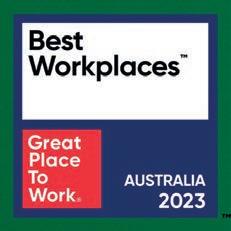
At the completion of this article, the reader should be able to improve the appliction of atropine in myopia management...
Including:
• Understand the link between lifestyle and myopia progression, and how it informs each patient’s treatment
• Be aware of the impact of ethnicity on atropine e cacy
• Consider the treatment implications of clinically-meaningful myopia progression into adulthood.
CONSIDERATIONS FOR LOWDOSE ATROPINE FOR MYOPIA CONTROL IN A NONASIAN POPULATION
The Western Australia Atropine for the Treatment of Myopia study remains the only randomised controlled trial in Australia that has explored the myopia control effects of 0.01% atropine versus a placebo. Lead author DR SAMANTHA LEE joins PROF JAMES LOUGHMAN to discuss how this work influences what we know about atropine and its effectiveness in different ethnicities.
Since the publication of the lowconcentration for myopia progression (LAMP) study,1 it has been generally assumed that 0.05% is the optimal preferred concentration of atropine eye drops for myopia control. 2 However, it is often forgotten that the recommendation to use 0.05% was based on just one study conducted on East Asian children, which may not be generalisable to the Australian or other Western or multicultural context.
For practising optometrists, this means that three important factors should be considered when choosing the concentration of atropine for myopia control: your patient’s ancestry, lifestyle and expectations.
FIRST: ANCESTRY
To date, the Western Australia atropine for the treatment of myopia (WA-ATOM) study 3 remains the only randomised controlled trial in Australia that has explored the myopia control e ects of 0.01% atropine versus a placebo. During the first 18 months of treatment, statistically-significant treatment benefits were observed in children of European descent, with approximately 40% less myopia progression and axial elongation in the 0.01% atropine group (0.44D and 0.22mm) compared to the placebo group (0.73D and 0.35mm). However, 0.01% atropine had essentially no myopia control e ect in children of East Asian or South Asian descent. It should be noted that in the final six months of the study, there was an improvement in the placebo group (attributed to a higher rate of withdrawal of participants with fast myopia progression in the placebo group, which a ected the results). Similarly, the Myopia Outcome Study of Atropine in Children (MOSAIC)4 in Ireland
found greater myopia control e cacy of 0.01% atropine in children of European descent, with no significant e ects observed in those of non-European descent.
The MOSAIC study additionally found greater e ects of 0.01% atropine in eyes with lighter irides, although their analysis may have been confounded by ethnicity. (In the WA-ATOM study, when we restricted analyses to only Europeans, no di erential e ect of eye colour on atropine e cacy was found).
How about in children of European descent? Is 0.01% atropine strong enough? Would children be able to tolerate a higher concentration and yield better myopia control outcomes?
Unfortunately, the WA-ATOM study did not investigate other concentrations. Instead, we may turn to the childhood atropine for myopia progression (CHAMP) study, 5 a multi-centre study in the US and Europe that compared 0.02% and 0.01% atropine to a placebo.
Interestingly, 0.01% atropine showed greater myopia control e cacy than 0.02% atropine. By the end of three years of treatment, the di erence in myopia progression between the placebo and the 0.01% group was 0.24 D in spherical equivalent and 0.13 mm in axial length, compared to a small, albeit statistically significant, di erence of only 0.1 D in spherical equivalent and 0.08 mm in axial length between the placebo and 0.02% groups.
The authors of the CHAMP study attributed the poor 0.02% e cacy to the 23 (or 10% of) participants in that treatment group who discontinued treatment in favour of other myopia control methods (e.g., orthokeratology or optical methods) but remained in the trial analysis. The reasons for the discontinuation

Centre for Ophthalmology & Visual Science (incorporating the Lions Eye Institute), University of Western Australia. Perth, WA
Prof James Loughman
Dip Optom, FAOI, PhD
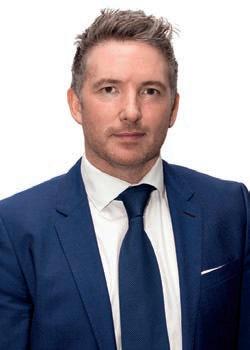
Centre for Eye Research Ireland, School of Physics, Clinical & Optometric Sciences, Technological University Dublin Dublin, Ireland
of treatment in this 10% of participants are unclear. Higher concentrations of atropine eye drops for myopia control in European populations are under way, such as the second phase of MOSAIC.
SECOND: LIFESTYLE
Perhaps the greatest disruption to our lifestyle in recent years was the emergence of COVID-19. Findings from several studies have undisputedly confirmed that COVID-19 restrictions led to an increase in myopia incidence and progression in children. However, its impact on the e cacy of atropine treatment had been di cult to study.
The MOSAIC study4 compared the e cacy of 0.01% atropine between the 141 children whose treatment period coincided with the full COVID-19 restrictions (from mid-March to late-July 2020) and the 63 children who were recruited after restrictions were relaxed. The investigators found 0.01% atropine had limited myopia control benefit in children who were most impacted by COVID-19 restrictions. Those least a ected by COVID-19 restrictions, however, experienced the greatest treatment e ect of any participant subgroup in the trial,
INSIGHT April 2024 41
CPD – MYOPIA
LEARNING OBJECTIVES:
CLINICAL CPD HOURS This activity meets the OBA registration standards for CPD
Images: Samantha Lee & James Loughman.
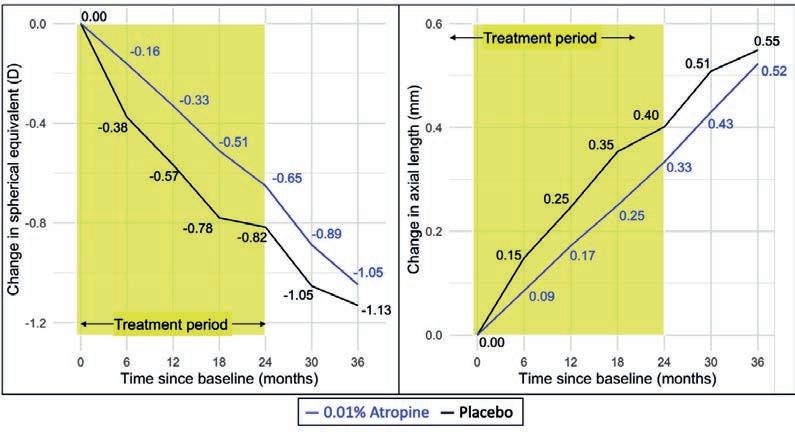
with 40% less refractive progression and 32% less axial elongation in treated compared to untreated children.
Unpublished findings from the WA-ATOM study told a similar story. Instead of lockdowns, WA imposed a lockout, which in turn allowed residents of the state to maintain a COVID-free lifestyle for most part of the pandemic. Nonetheless, there was a one-month period



early in the pandemic when children were rarely seen in schools, playgrounds and beaches, 6 followed by another month where social gatherings were limited and playgrounds were closed.7 In participants using 0.01% atropine eye drops, we similarly found faster axial elongation by 0.056 mm/year, during the COVID lockdown compared to the non-lockdown periods. On the other hand, the


rate of axial elongation in those on the placebo eye drops was similar during lockdown and non-lockdown. These findings collectively suggest that low-concentration atropine treatment outcomes may be influenced through behavioural modification.
THIRD, AND PERHAPS MOST IMPORTANTLY: PATIENT EXPECTATIONS
It may be hard to predict a patient’s tolerance and response to atropine eye drops. As optometrists would notice from other areas of clinical practice, ocular response to di erent treatments can be variable, including intraocular pressure-lowering therapy, topical steroids and the various myopia control methods.
As summarised in Table 1, various trials comparing 0.01% atropine to a placebo have reported highly varied findings, although this is not particularly surprising given the methodological and other di erences between trials.
For example, both the WA-ATOM 3 and the Pediatric Eye Disease Investigator Group (PEDIG) 8 studies have similar trial inclusion criteria for participants, similar age, and half of each trial cohort comprise children of European descent. Yet, the WA-ATOM study found a moderate e ect of 0.01% atropine while



For more information, speak to your Rodenstock Account Manager.
CPD – MYOPIA
BACK TO SCHOOL WITH RODENSTOCK MYCON HEALTHY EYES, HEALTHY FUTURE
available with ColorMatic® 3 & Polarised
are built to correct
controlling its progression in children while ensuring sharp vision.
Figure 1. Myopia progression in the WA-ATOM study during the two-year treatment followed by one-year washout.
Now
Rodenstock MyCon lenses
myopia,
the PEDIG study found no e ect. However, to date, the PEDIG study stands as the only trial to not show a positive e ect of 0.01% atropine.
Weirder still, the US- and Europe-based CHAMP study 5 , published merely one month before the US-based PEDIG study – both in the same journal – found that 0.01% atropine controls both spherical equivalent and axial length, and that it performed better than the 0.02% concentration. Although about 10% of the children who were treated with 0.02% discontinued the eye drops in favour of other privately-sought myopia control, they were still included in the analysis.
While starting a patient at a higher concentration of atropine may improve the chances of a positive response to treatment, it also increases the risk of intolerance and thus poor adherence to treatment.
Conversely, a lower concentration may have limited myopia-control e cacy, resulting in patients losing confidence in the treatment altogether. Thus, it is important to manage the expectations of patients prior to initiating treatment.
Optometrists could choose a starting concentration on the basis of balancing the needs for myopia control versus the risk of intolerance to the chosen concentration. Higher concentrations might be more suitable in higher risk patients, whereas a more conservative approach might be taken in lower risk eyes (e.g. older children, lower myopes, pre-myopes).
Where necessary, the dose should be modified as quickly as possible to optimise both tolerability/adherence and e cacy. Clinical decisions should be based on the individual risk profile of patients in the chair and adapted based on their response to the prescribed regimen.
MYOPIA CONTROL: A LONGTERM COMMITMENT OR POSSIBLY DON’T BOTHER
In addition to discussing the starting concentration, patients should be informed about the long-term relationship they should maintain with their atropine eye drops.
Atropine eye drops, and very likely most, if not all, forms of myopia control treatment, is associated with the infamous ‘rebound’ myopia progression after cessation of treatment. 9,10 Younger age and higher concentrations of atropine are associated with greater rebound e ects, as confirmed by the LAMP study.1 However, for how long should treatment continue?
The ATOM2 study 11 in Singapore, which investigated a two-year treatment regime of atropine with concentrations of 0.5%, 0.1% or 0.01%, found 67%, 59%and 24% of participants, respectively, had a rebound myopia progression by 0.50 D or more in the following 12 months. Importantly, the children with progressing
STUDY AND LOCATION
Atropine for the Treatment of Myopia (ATOM) 2 study, 2012 Singapore
Low-concentration atropine for myopia progression (LAMP) study, 2019 Hong Kong
India ATOM study, 2021 India
Western Australia ATOM study, 2022** Australia
FINDINGS
Myopia progression over 2 years:
-0.49 D in the 0.01% atropine group
-1.20 D in the placebo group (non-parallel comparison)
Myopia progression over 1 year:*
-0.64 D in the 0.01% atropine group -0.81 D in the placebo group
Axial elongation over 1 year: NS +0.35 mm in the 0.01% atropine group
+0.43 mm in the placebo group
Myopia progression over 1 year:*
-0.16 D in the 0.01% atropine group
-0.35 D in the placebo group
Axial elongation over 1 year:*
+0.22 mm in the 0.01% atropine group
+0.28 mm in the placebo group
Myopia progression over 1 year:*
-0.31 D in the 0.01% atropine group
-0.53 D in the placebo group
Axial elongation over 1 year:*
+0.16 mm in the 0.01% atropine group
+0.25 mm in the placebo group
Myopia Outcome Study of Atropine in Children (MOSAIC), 2023 Ireland
Pediatric Eye Disease Investigator Group, 2023 United States
Children Atropine for Myopia Progression (CHAMP) study, 2023 North America & Europe
Myopia progression over 2 years: NS
-0.53 D in the 0.01% atropine group
-0.63 D in the placebo group
Axial elongation over 2 years:*
+0.33 mm in the 0.01% atropine group
+0.40 mm in the placebo group
Myopia progression over 2.5 years: NS
-0.94 D in the 0.01% atropine group
-0.88 D in the placebo group
Axial elongation over 2.5 years: NS
+0.44 mm in the 0.01% atropine group
+0.45 mm in the placebo group
Myopia progression over 3 years: *
-1.04 D in the 0.01% atropine group
-1.28 D in the placebo group
Axial elongation over 3 years: *
+0.68 mm in the 0.01% atropine group
+0.81 mm in the placebo group
NS=not significantly different between groups. *Significantly different between groups. **The WA-ATOM study later found a diminished effect of 0.01% atropine after 18 months attributed to withdrawals of participants in the placebo group due to fast progressing myopia. This withdrawal limited statistical analysis.
myopia post-atropine treatment were on average approximately 1.4 years younger than those with relatively stable myopia (11.1 vs 12.5 years at the time of stopping atropine).
The ATOM 2 investigators then re-started those children with progressive myopia on 0.01% atropine for another two years – totalling five years of trial. When the participants were re-examined 10 years later – 15 years after the beginning of the five-year trial – final refractive errors did not significantly di er between the 0.5%, 0.1% and 0.01% groups.12 This was despite most of the participants in the 0.5% and 0.1% group undergoing treatment for an additional two years with 0.01% atropine (total four years of treatment).
In the first two years of the WA-ATOM study, 3 we found a moderate e ect of 0.01% atropine on myopia control, relative to a placebo. However, in the following year when children
discontinued eye drop use, there was a rebound in myopia progression in the children who had used 0.01% atropine, such that overall myopia progression over the three years were similar between the treatment and placebo groups (Figure 1).13
These findings from the long-term observational study of the ATOM and the WA-ATOM study suggest that low-concentration atropine therapy (and possibly all forms of myopia control) is a long-term – more than a few years – commitment. They demonstrate that treatment should not be terminated based on any arbitrary criterion such as age or clinical trial termination. Instead, treatment decisions on when and how to end treatment should be personalised to every individual patient, otherwise any benefits of treatment would be negated by premature cessation. The MOSAIC trial in Ireland is also currently investigating the impact of sudden versus gradual (tapered)
INSIGHT April 2024 43
Source: Dr Samantha SY Lee.
TABLE 1. Summary of selected randomised controlled trials comparing 0.01% atropine eye drops to a placebo.
0.01% atropine treatment cessation and will report on this at the upcoming Association for Research in Vision and Ophthalmology conference in May 2024.
In routine clinical practice, optometrists are increasingly noticing that myopia can continue to progress into adulthood. The Raine Study found that one in three people in their 20s continue to have myopia progression, and one in seven people who had no myopia at 20-years-old would go on to develop myopia eight years later.14 There is evidence that some myopes may be susceptible to clinically meaningful refractive progression and axial elongation into adulthood.15 This means that there is a long timeframe, from childhood up to the third or even fourth decade of life, during which myopia can worsen. Consequently, it’s possible that myopia control should continue into adulthood.
Modern medicine has provided the luxury of one-time fixes or short-term treatment –cataract surgery, antibiotics treatment for infections, laser refractive surgeries, or simply taking a paracetamol tablet for relieving headaches. Because of this, it’s important to remind patients and parents that myopia control is likely to be a long-term commitment. Without adhering to this long-term commitment, the benefits of any short-term treatment may be negated.
“THERE IS A LONG TIMEFRAME, FROM CHILDHOOD UP TO THE THIRD DECADE OF LIFE, DURING WHICH MYOPIA CAN WORSEN. CONSEQUENTLY, IT’S POSSIBLE THAT MYOPIA CONTROL SHOULD CONTINUE INTO EARLY ADULTHOOD.”
REFERENCES:
1. Yam JC, Zhang XJ, Zhang Y, et al. Three-Year Clinical Trial of Low-Concentration Atropine for Myopia Progression Study: Continued Versus Washout: Phase 3 Report. Ophthalmology. 2021.
2. Khanal S, Phillips JR. Which low-dose atropine for myopia control? Clinical & Experimental Optometry. 2020; 103 (2): 230-232.
3. Lee SS, Lingham G, Blaszkowska M, et al. Low-concentration atropine eyedrops for myopia control in a multi-racial cohort of Australian children: a randomised clinical trial. Clin Exp Ophthalmol. 2022.
4. Loughman J, Kobia-Acquah E, Lingham G, et al. Myopia outcome study of atropine in children: Two-year result of daily 0.01% atropine in a European population. Acta ophthalmologica. 2023.
5. Zadnik K, Schulman E, Flitcroft I, et al. E cacy and Safety of 0.01% and 0.02% Atropine for the Treatment of Pediatric Myopia Progression Over 3 Years: A Randomized Clinical Trial. JAMA Ophthalmol. 2023.
6. McNeill H. A timeline of WA’s COVID-19 response: Was our success luck, good management, or a bit of both? WA Today 2020.
7. Department of Health Western Australia. Phase 3 of COVID-19 roadmap to commence from Saturday, June 6. In: Health Do, ed. Perth2020.
8. Repka MX, Weise KK, Chandler DL, et al. Low-Dose 0.01% Atropine Eye Drops vs Placebo for Myopia Control: A Randomized Clinical Trial. JAMA Ophthalmol. 2023; 141 (8): 756-765.
9. Sánchez‐Tena MÁ, Ballesteros ‐ Sánchez A, Martinez‐ Perez C, Alvarez‐ Peregrina C, De ‐ Hita ‐ Cantalejo C, Sánchez‐ González MC, et al. Assessing the rebound phenomenon in di erent myopia control treatments: A systematic review. Ophthalmic and Physiological Optics. 2024 Jan 9;44(2):270–9.
10. Brennan NA, Toubouti YM, Cheng X, Bullimore MA. E cacy in myopia control. Progress in Retinal and Eye Research. 2021 Jul;83:100923. doi:10.1016/j.preteyeres.2020.100923
11. Chia A, Lu QS, Tan D. Five-Year Clinical Trial on Atropine for the Treatment of Myopia 2: Myopia Control with Atropine 0.01% Eyedrops. Ophthalmology. 2016; 123 (2): 391-399.
12 Li Y, Yip M, Ning Y, et al. Topical Atropine for Childhood Myopia Control: The Atropine Treatment Long-Term Assessment Study. JAMA Ophthalmol. 2023.
13 Lee SS, Nilagiri VK, Lingham G, et al. Myopia progression following 0.01% atropine cessation in Australian children: findings from the WA-ATOM study. Clin Exp Ophthalmol. 2024; [Accepted for publication on 31 Jan 2024 and in press].
14. Lee SS, Lingham G, Sanfilippo PG, et al. Incidence and Progression of Myopia in Early Adulthood. JAMA Ophthalmol. 2022; 140 (2): 162-169.
15. Bullimore MA, Lee SS-Y, Schmid KL, Rozema JJ, Leveziel N, Mallen EA, et al. IMI—onset and progression of myopia in young adults. Investigative Opthalmology & Visual Science. 2023 May 1; 64 (6): 2. doi:10.1167/iovs.64.6.2

NOTE:
to access a link to this article to include in their own CPD log book.


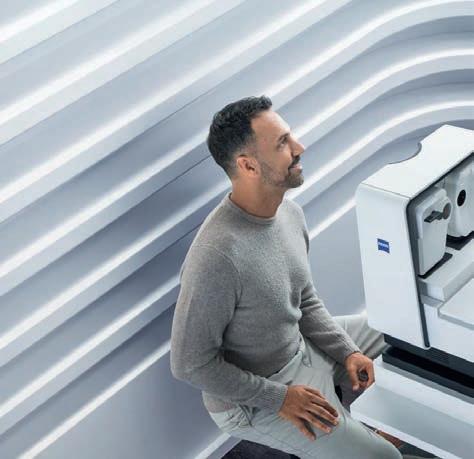




 Insight readers can scan the QR code or visit insightnews.com.au/cpd/
Insight readers can scan the QR code or visit insightnews.com.au/cpd/
CPD – MYOPIA



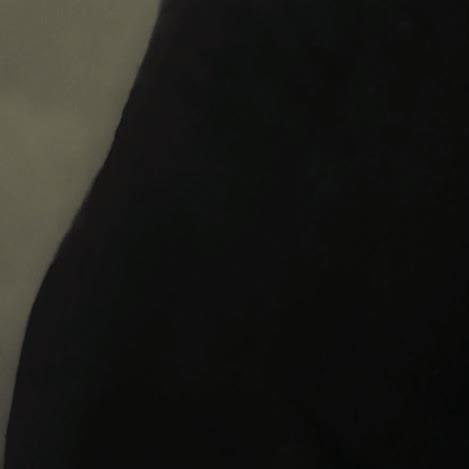

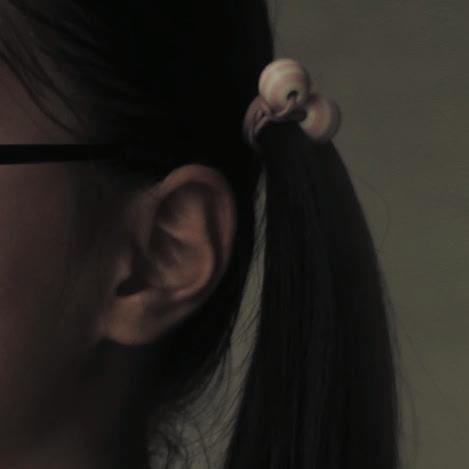



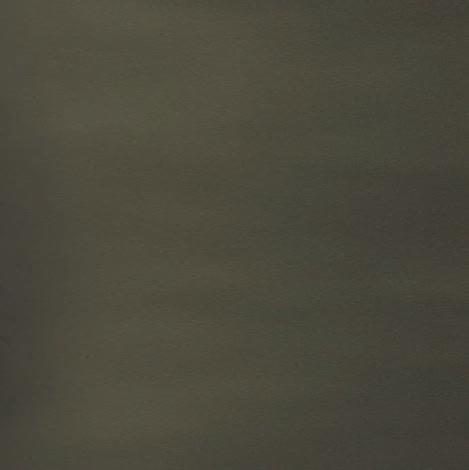



This medicinal product is subject to additional monitoring in Australia. This will allow quick identification of new safety information. Healthcare professionals are asked to report any suspected adverse events at https://www.tga.gov.au/reporting-problems.

Aspen Australia includes Aspen Pharmacare Australia Pty Ltd (ABN 51 096 236 985) and Aspen Pharma Pty Ltd (ABN 88 004 118 594). All sales and marketing requests to: Aspen Pharmacare Pty Ltd, 34-36 Chandos Street, St Leonards NSW 2065. Tel: +61 2 8436 8300 Email: aspen@aspenpharmacare.com.au Web: www.aspenpharma.com.au Trademarks are owned by or licensed to the Aspen group of companies. © 2023 Aspen group of companies or its licensor. All rights reserved. Prepared July 2023. AU-ATR-072023-07585. ASPPH3029.
*P-value not available (ATOM 1&2 studies, placebo was a historical control from ATOM 1).ATOM 2 study data available for 5 years with 1 year washout after 24 months.3 EIKANCE
to slow the progression of myopia in children aged from 4 to 14 years. Atropine treatment may be initiated in children when myopia progresses ≥ –1.0 diopter (D) per year.1
References: 1. Approved EIKANCE Product Information, 14 March 2023. 2. Chua WH et al. Ophthalmology 2006;113:2285–91. 3. Chia A et al. Ophthalmology 2016;123:391–9. SLOW MYOPIA PROGRESSION
PBS Information: This product is not listed on the PBS.
0.01% eye drops (atropine sulfate monohydrate 0.01%) is indicated as a treatment
Scan to review full Product Information and to order samples, or call 1300 659 646.
BY UP TO 60% WITH ATROPINE 0.01% EYE DROPS AT 2 YEARS COMPARED TO PLACEBO *1-3







GROW YOUR CAREER WITH US www.georgeandmatilda.com.au Email opportunities@georgeandmatilda.com.au or scan the QR code further study leadership partnership specialty interests
At the completion of this article, the reader should be able to improve their detection of glaucoma using gonioscopy ...
Including:
• Understand the role of the Primary Angle Closure Glaucoma (PACG) continuum in diagnosis and management of glaucoma
• Understand the consequences of unintended indentation of the cornea with a gonioscope
• B e familiar with the ‘Gonio Game’ technique and how it can increase the possibility of detection of angle closure.
INSIGHTS FROM A GONIOSCOPY WORKSHOP PART 2
In the first instalment of Insight’s CPD gonioscopy primer, the authors offered key insights from educational gonioscopy workshops at the University of Western Australia optometry school in 2023. Now, they bust two lingering myths: that IOP measurement alone can suffice for monitoring glaucoma suspects and that Van Herick angle assessments are dependable alternatives to gonioscopy.
n the Part 1 of our ‘Gonioscopy Primer’ we showed how and why skilled gonioscopy remains indispensable for precise anterior chamber assessment. While technology can assist, it does not supplant the art of gonioscopy.
In this, the second part of our ‘Gonioscopy Primer,’ we explain why dynamic gonioscopy is such an important skill and we address the myths that intraocular pressure (IOP) and Van Herick (VH) angle measurements alone are reliable substitutes for gonioscopy.
Myth: For glaucoma suspects, routine IOP measurements are an adequate substitute for primary angle closure monitoring.
It surprises many eyecare professionals to learn that IOP elevation is often missed on routine clinical testing. But it’s not so surprising once you understand the intermittent nature of angle closure.
In a comprehensive review, Sun and his co-authors beautifully summarised the primary angle closure glaucoma (PACG) continuum as “starting from a pre-clinical stage, which remains clinically undetectable using IOP, visual fields (VF) or optical coherence tomography (OCT). Then progressing to an attack stage, which may be composed of a series of intermittent mild or acute attacks, ultimately giving rise to optic nerve head (ONH) damage and the formation of peripheral anterior synechiae (PAS). With the formation of PAS, the increase in IOP becomes more consistent, eventually leading to chronic- or end-stage PACG”. 1
The majority of patients with angle closure disease i.e. PAC and PACG do not present with acute angle closure crisis – where IOPs can often present above 30 mmHg. Clinically, these patients may be virtually indistinguishable from open angle forms of glaucoma in terms of IOP, ONH appearance, OCT and VF. In this regard, the only distinguishable
di erence between two fundamentally di erent forms of glaucoma is gonioscopy. In other words, there is a risk that PACG is misclassified as primary open angle glaucoma (POAG). Unfortunately, this means a number of PACG patients currently on standard POAG medical or laser therapy will continue to progress and develop chronic PAS formation if one is not thorough in their glaucoma assessment
GROWING EMPHASIS ON MONITORING PACS WITH GONIOSCOPY
Let’s say I have just performed gonioscopy and detected at least two quadrants of iridotrabecular touch (ITC) without other signs and diagnosed PACS (primary angle-closure suspect). So what do I do now – observe or refer for prophylactic laser peripheral iridotomy (LPI) treatment?
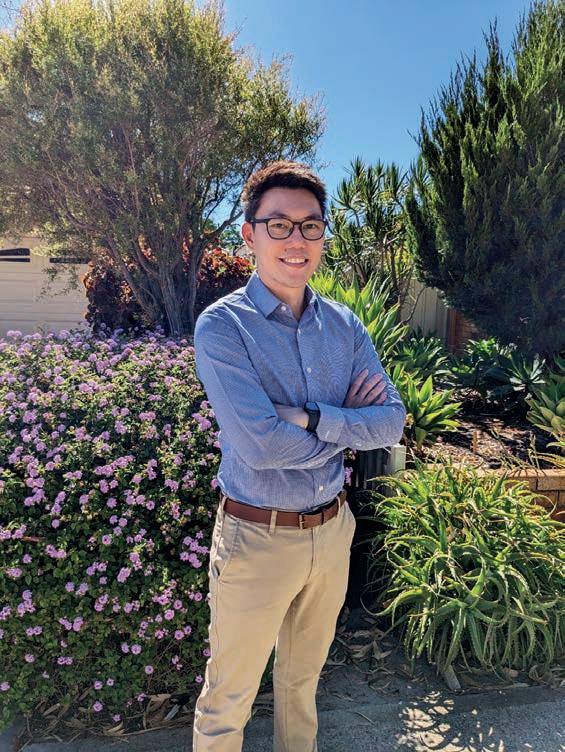
There have been quite a few developments in this space over the past two decades. The Vellore Eye Study conducted in Southern India in the early 2000s showed that up to 22% of PACS progressed to PAC over a five-year period 2 and up to 30% of PAC progressed to PACG, 3 which supports prophylactic treatment.
However, more recently, the Zhongshan Angle Closure Prevention (ZAP) trial 4 involving a large Chinese population showed that only 4% of untreated PACS progress to PAC over a five-year period, rea rming that acute angle closure is less common in at-risk eyes than previously thought and that the rate of developing peripheral anterior synechiae (PAS) and elevated IOP is relatively slow.
In a similar vein, the Singapore Asymptomatic Narrow Angles Laser Iridotomy Study (ANALIS) trial involving a multi-ethnic, but predominantly Chinese population, showed untreated rates of progression closer to 10% 5 over a five-year period.


Consequently, there has been a shift away from prophylactic LPI to increased monitoring of PACS.* For practitioners, this means that there will be an increased emphasis on regular monitoring of PACS using gonioscopy.
CLINICAL RECOMMENDATIONS
In our clinic, we recommend monitoring asymptomatic PACS six monthly, provided that the patient is not on medications that are likely to provoke an angle closure attack. We also consider the individual’s location (e.g. rural) and occupations (like fly-in/fly-out workers) which may a ect access to care. Another indication for prophylactic LPI is if they need frequent dilation (as with diabetes).
In the presence of PAC or PACG, referral to an ophthalmologist is recommended for LPI or lens extraction.
LASER PERIPHERAL IRIDOTOMY
When referring patients o for treatment, it’s important to set the right expectations. The standard of care includes LPI which mitigates future angle closure attacks but, as seen from the ZAP or ANALIS, it only reduces the risk of progression. 4 This means up to 50% of your
INSIGHT April 2024 47
CPD I
LEARNING OBJECTIVES:
CLINICAL CPD HOURS This activity meets the OBA registration standards for CPD
UWA
Images:
TABLE 1. Summary of the various gonioscopy grading systems. Where SL = Schwalbe’s line, ATM = anterior trabecular meshwork, PTM = posterior trabecular meshwork, SS = scleral spur and CB = ciliary body. NB. The Spaeth classification also grades iris shape and PTM pigmentation (not shown in table). Source: UWA.
ANATOMICALSHAFFER (DEGREE)SCHEIE S PAETH RISK OF CLOSURE
SL 0 ( 0° )
ATM 1 ( ≤10° )
PTM 2 ( 10-20° )
SS 3 ( 20-35° )
CB 4 ( 35-45° ) WIDE OPEN
patients still progress further along the primary angle closure disease spectrum despite treatment. It is also important to note that the aim of LPI or lens extraction is not to lower IOP but rather to modify the angle in a way that prevents further attacks. Indeed, up to 59% of patients maintain some form of ITC after LPI treatment. 6
PERIPHERAL ANTERIOR SYNECHIAE
In the presence of extensive PAS, standard glaucoma medical therapy or surgery may be used to reduce the IOP. To the eyecare practitioner, this means continued regular
gonioscopy after LPI to look for future – or further – PAS development. In addition, continued monitoring of the patency of the LPI which, in our experience, is best viewed using fundus retroillumination, preferably under dilation with the upper lids lifted. Under high magnification, it’s also possible to view aqueous movement through the iridotomy.
DYNAMIC GONIOSCOPY: A SKILL YOU ALREADY POSSESS
Currently, the best way to look for PAS is the use of dynamic gonioscopy. Also known as ‘corneal indentation gonioscopy’, this is an
important skill for the optometrist to have, depending on the demographic they serve, as well their comfort level with the technique.
In order to perform corneal indentation, you need to have a contact diameter smaller than the horizontal visible iris diameter (HVID) (typically ≤9 mm) to allow for central corneal displacement without moving the globe posteriorly (Figure 1).
In our experience, one of the most common mistakes made by novice gonioscopists is the assumption that all anatomical structures from Schwalbe’s line (SL) to the ciliary body (CB) band should be visible.
This may be akin to how we assume a patient should be able to read 6/6 on the vision chart. This assumption is counterintuitive – unlike visual acuity, one is not able to ‘improve’ the grade of the angle. What often happens is the unintended indentation of the cornea by the practitioner, revealing structures that are appositionally closed under normal conditions. The danger in doing so is that patients with narrow angles may be incorrectly classified as having ‘open angles.
THE ’GONIO GAME’
One of the ways to prevent unintentional indentation is to encourage novices to first get a stable view of the angle (with or without
YOUR ONE-STOP OPHTH
Australia’s largest provider of private ophthalmology services
We o er comprehensive eye care that covers all subspecialties – along with urgent and emergency care.
We also have state-of-the-art technology and facilities, as well as a dedicated research unit.
Refer with confidence. Visit visioneyeinstitute.com.au or scan the QR code.
30392|WELLMARK PTY LTD|12-23
CPD
A CLOSED
3 B PROBABLE
2 B POSSIBLE
4
1 C IMPOSSIBLE
D IMPOSSIBLE
E ( >1mm CB )

indentation) and, once a comfortable view is obtained, to slowly ease the pressure o the cornea and carefully observe as structures recede away from view.
Colloquially known as the ‘Gonio Game’ by author Dr Jeremiah Lim, the assumption behind this technique is 1) if you can manipulate the angle ‘open’ through indentation, then the opposite must be true; and 2) if an angle is truly anatomically wide open (CB visible), no matter how much you ease o the eye, this will not artificially result in the ‘closing’ of the angle.
The aim of the ‘Gonio Game’ is to 'make' the angle as narrow as possible, recording one’s narrowest assessment of the angle. This flips the assumption that ‘angles should be open’ on its head, incentivising clinicians to increase their sensitivity towards the detection of angle closure.
WHEN TO INDENT
There are numerous scenarios where dynamic gonioscopy is indicated, such as acute angle closure first aid. However, this article will focus on three specific indications for the technique (summarised in Table 1): di erentiating appositional from synechial closure and plateau iris.
APPOSITIONAL vs SYNECHIAL CLOSURE
Appositional closure occurs when angles are anatomically narrow or are occludable in the absence of pathology. In practice, what this means is during gonioscopy, only the Schwalbe’s line (SL) and anterior trabecular meshwork (ATM) are visible. But upon indentation, deeper structures such as the posterior trabecular meshwork (PTM), scleral spur (SS) or ciliary body (CB) are revealed.
As one might recall from Part 1 of this article, the appearance of two or more appositionally closed quadrants would lead to a diagnosis of PACS. In the event that indentation does not reveal more structures, then one can assume the presence of PAS, hence changing the


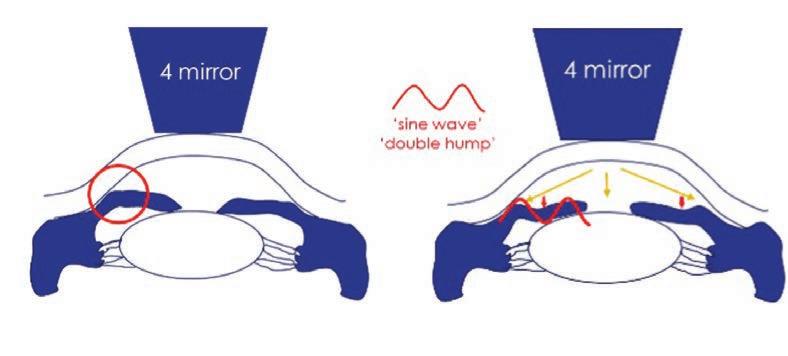
INSIGHT April 2024 49
Figure 2B. Determining the presence of peripheral anterior synechia. Left: standard view (no indentation); right: dynamic view (indentation).
Figure 2C. Determining the presence of a plateau iris. Left: standard view (no indentation); right: dynamic view (indentation).
Figures 2A-2C. Summary of three common situations where dynamic gonioscopy is useful in the assessment of the anterior chamber angle.
Figure 2A. Differentiating appositional from synechial closure. Left: standard view (no indentation); right: dynamic view (indentation).
Figure 1. Schematic diagram illustrating how the design of the gonioprism is essential for corneal indentation. A lens narrower than the cornea diameter allows for increased aqueous displacement into the iridocorneal angle, forcing the angle open (yellow arrows). Large diameter lenses displace aqueous evenly, bowing the structures within the globe posteriorly without preferentially opening the angle. Images: UWA.
diagnosis from PACS to PAC even in the absence of elevated IOP.
Unlike posterior synechia, which appear around the pupil margin and may occasionally be broken with dilating drops such as atropine, PAS does not break with indentation. Often laser or surgical treatments are required to prevent further progression. Occasionally a form of surgery known as goniosynechialysis,7 where the surgeon inserts a spatula or microforceps into the anterior chamber in order to break the PAS, is performed.
PLATEAU IRIS
Dynamic gonioscopy may also be useful in troubleshooting narrow angles arising from the anterior insertion of the iris root as seen in plateau iris. In this case, the angle is narrow because of the anatomical crowding of the angle by the iris. Another tell-tale sign of the presence of plateau iris is when a patent LPI fails to relieve the block mechanism.
Using indentation gonioscopy, instead of revealing more structures, the increased pressure within the AC is unable to open the angle due to the forward position of the iris root. The increased force moves more centrally, causing a temporary ‘dip’ in the region between the iris root and the pupil margin, resulting in a ‘double hump’ or sine-wave sign. The practitioner can choose to intermittently indent to appreciate the sine wave movement of the iris using this technique.
Myth: Van Herick angle measurements are adequate substitutes for gonioscopy or at the very least, provide indication on the need to perform gonioscopy.
Sensitivity of VH technique alone is insu cient for detecting angle closure. One barrier to gonioscopy that we encountered through our workshops is frequent over-estimation of the VH angle. Similar to unintended indentation on gonioscopy, one can overestimate the width of the VH angle by accidentally moving the light away from the limbus and closer to the central cornea. In a similar vein to the ‘Gonio Game’ introduced above, practitioners should aim to ‘make’ the VH angle as small as possible, on the same premise that a truly wide angle cannot close. Interestingly, a study performed at the Wilmer Eye Institute, showed that even with specialised VH training, up to 40% of angle closures are still missed. 8
Given the degree of skill involved in performing a good VH assessment and the poor sensitivity and specificity of the technique, we recommend performing gonioscopy in all glaucoma suspects, regardless of their VH status or IOP. As one might recall from Part 1 of the primer, IOP elevation is not the only indicator of PAC. As the VH classification does not detect PAS,
it is incapable of detecting progression to PAC hence not used in primary angle closure disease classification.
Another point to note is that gonioscopy is also a key tool used to identify secondary causes of glaucoma such as pseudoexfoliation or pigment dispersion. In the absence of secondary causes, gonioscopy serves as an equally important tool to diagnose POAG or PACG by exclusion.
GONIOSCOPY INDICATIONS, SETUP, AND GRADING
We hope that the knowledge shared in this article has provided the motivation for clinicians to pick up their gonio lenses more often. In our experience, gonioscopy has minimal impact on chair time once practitioners progress from the novice into the adept stages. This last section serves as a quick refresher on the technique.
INDICATIONS
Gonioscopy should be performed on all glaucoma suspects, and routinely on those with a VH angle of ≤0.25, asymmetrical anterior chamber (AC) depths or clinical
the angle is whereas the Scheie grades how narrow the angle is. In the Australian context, the Sha er system appears to be the preferred grading scale used by specialists. To avoid ambiguity, clinicians should state the grading system used. Our preference is to name the most posterior anatomical layer seen in each quadrant.
CONCLUSION
While imaging devices, VH angle measurements and IOP assessments are, of course, still valuable tools in optometric practice, as we have shown they cannot replace the art and science of gonioscopy.
Mastering gonioscopy remains essential for precise anterior chamber assessment and the early detection of glaucoma. Optometrists should prioritise learning and practicsing this skill; it plays a pivotal role in comprehensive eyecare today and will continue to play a pivotal role in the future.
*In both studies, it was shown that prophylactic Laser Peripheral Iridotomy (LPI) halved the risk of progression from PACS to PAC.
“THERE HAS BEEN A SHIFT AWAY FROM PROPHYLACTIC LPI TO INCREASED MONITORING OF PACS. FOR PRACTITIONERS, THIS MEANS THAT THERE WILL BE AN INCREASED EMPHASIS ON REGULAR MONITORING OF PACS USING GONIOSCOPY.”
signs suggestive of previous angle closure (e.g. glaucomflecken or pigment in the AC).
Although the absence of symptoms does not rule out angle closure, practitioners should look out for patients who complain of intermittent blur, red eyes, headaches, haloes around light—all of which may occur especially at night when pupils are larger.
SETUP
When setting up for gonioscopy, it’s important to have the room lights dimmed to prevent unnecessary pupil constriction which pulls the iris away from the angle, giving the false impression that the angle is physiologically open. This includes avoiding shining light into the pupil when viewing through the central mirror. Upon mounting the gonio lens, it is useful to allow for a 10 second rest period to increase your likelihood of detecting a pupil block. Another useful modification to the technique is the use of a shorter beam height (1 mm) to ensure that light does not spill into the central mirror when viewing the angle.
GRADING
When it comes to recording gonioscopy findings, several grading systems are available (Table 1). It’s worth noting that the two most commonly-used grading scales, the Sha er and the Scheie, are opposite to each other. The Sha er grades how ‘wide’
REFERENCES:
1. Sun X, Dai Y, Chen Y, Yu D-Y, Cringle SJ, Chen J, et al. Primary angle closure glaucoma: What we know and what we don’t know. Progress in Retinal and Eye Research. 2017; 57: 26-45.
2. Thomas R, George R, Parikh R, Muliyil J, Jacob A. Five year risk of progression of primary angle closure suspects to primary angle closure: a population based study. The British journal of ophthalmology. 2003; 87 (4): 450.
3. Thomas R, Parikh R, Muliyil J, Kumar RS. Five ‐year risk of progression of primary angle closure to primary angle closure glaucoma: a population ‐ based study. Acta ophthalmologica Scandinavica. 2003; 81 (5): 480-5.
4. He M, Jiang Y, Huang S, Chang DS, Munoz B, Aung T, et al. Laser peripheral iridotomy for the prevention of angle closure: a single-centre, randomised controlled trial. Lancet. 2019; 393 (10181): 1609-18.
5. Baskaran M, Kumar RS, Friedman DS, Lu QS, Wong HT, Chew PTK, et al. The Singapore Asymptomatic Narrow Angles Laser Iridotomy Study: Five-Year Results of a Randomized Controlled Trial. Ophthalmology. 2022; 129 (2): 147-58.
6. He M, Friedman DS, Ge J, Huang W, Jin C, Cai X, et al. Laser peripheral iridotomy in eyes with narrow drainage angles: ultrasound biomicroscopy outcomes. The Liwan Eye Study. Ophthalmology. 2007;114 (8): 1513-9.
7. Campbell DG, Vela A. Modern goniosynechialysis for the treatment of synechial angle-closure glaucoma. Ophthalmology. 1984; 91 (9): 1052-60.
8. Johnson TV, Ramulu PY, Quigley HA, Singman EL. Low Sensitivity of the Van Herick Method for Detecting Gonioscopic Angle Closure Independent of Observer Expertise. Am J Ophthalmol. 2018; 195: 63-71.

NOTE: Insight readers can scan the QR code or visit insightnews.com.au/cpd/ to access a link to this article to include in their own CPD log book.
50 INSIGHT April 2024 CPD


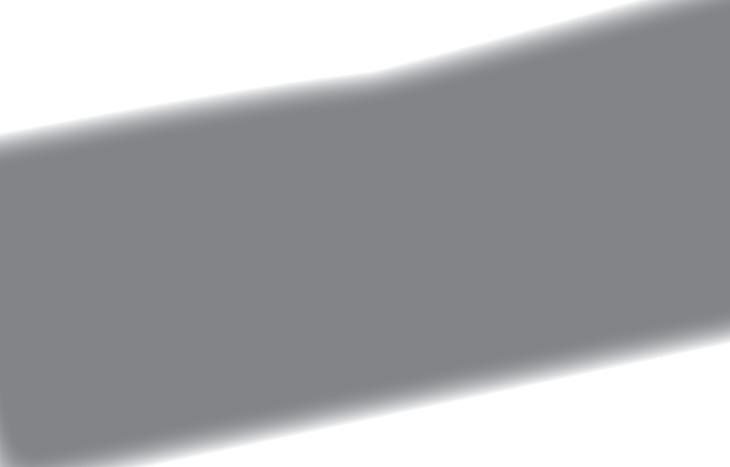
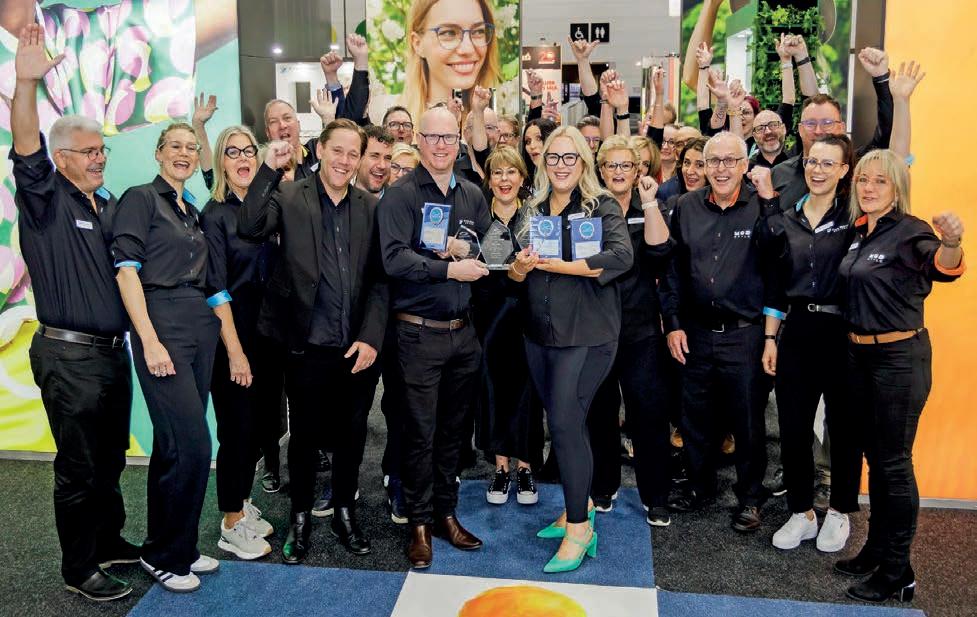

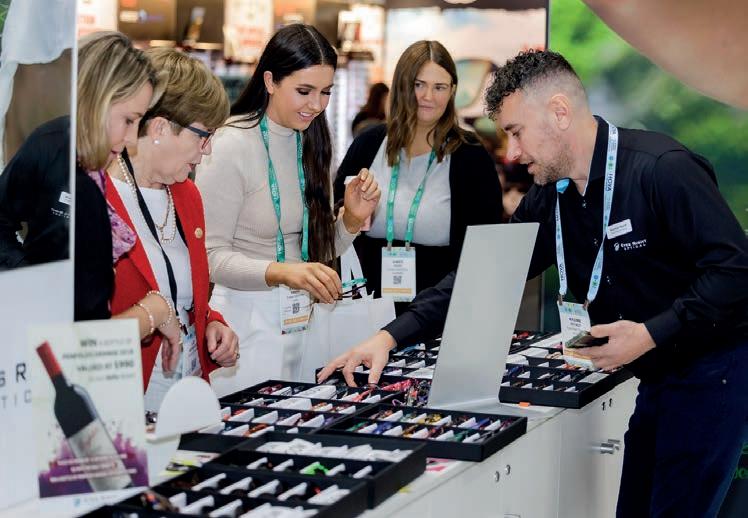




THE HEARTBEAT of Eyes Right Optical
At Eyes Right Optical, innovation, family business values and industry excellence entwine to create an exciting workplace for employees. SEAN RAFTERY and PAUL HARRISON are among those behind the scenes bringing some of the most fashion-forward, best-selling eyewear to independent optical practices nationwide.
When Mr Sean Raftery, warehouse manager at Eyes Right Optical’s headquarters in Melbourne’s southeast, ran into a customer during an interstate trip and was greeted with nothing but praise, it was a reminder of everything he loves about working for one of Australia’s largest eyewear suppliers to the independent market.
“They said, ‘We love dealing with Eyes Right Optical; you guys are great. You’re always so helpful’,” Raftery says. “Receiving that spontaneous positive feedback was great. The fact that the practices do openly thank you for the work that the team put in – that’s extremely rewarding.”
Raftery is among 33 employees who turn up to work each day at Eyes Right Optical and leave fulfilled knowing they have played an important role in supporting the vital independent optometry market in Australia. The company is the Australian distributor of iconic international brands such as Face a Face, ProDesign Denmark and more recently William Morris and Charles Stone, providing independents with a point-ofdi erence in the market.
This ethos and culture is something managing director Mr Mark Wymond – who operates the company alongside his sister and national brands manager Ms Lisa Wymond – is proud to continue, after taking the reins in 2018 from their parents Gaye and David Wymond (who established the company in 1992).
“We stand for supporting independent practices to the best of our ability through providing exceptional quality product and customer service that not only makes the practices’ shelves look fantastic, but also makes them look brilliant to their patients,” he says.
Raftery has been the warehouse manager at Eyes Right Optical for two and a half years, overseeing stock control and management while supporting the customer service team. A large aspect of his role is customer facing where he assists with phone orders from practices and other product enquiries.
With more than 30 years in warehousing and logistics, he transferred a
host of essential skills to Eyes Right Optical as it has expanded over the years. Although eyewear was a new field for him, the principles of stock management remain the same. While his motivation for a shift to the optical industry was to experience something new, it was the Eyes Right Optical culture that consolidated his decision.
“The working dynamic can be great in family-run businesses like Eyes Right Optical, even though it’s considered a medium to large business, it was very clear when I met with Mark that their family values are very strong,” Raftery says.
“Workplace culture is probably the number one thing for me. Because a stock item is a stock item; it really doesn’t matter what industry it is. But if I hear laughter, then I think it’s a really good place to work. And it is.”
His involvement in the technical side of product management and customer service alleviates the workload on the customer service department. He finds this rewarding as he is not entirely removed from the customer service aspect of the business.
“I love that interaction with the practices and the ability to service their requirements quickly. It’s always refreshing when you get feedback that they’re so happy you’ve got the stock and you can get it out to them today,” Raftery says. “And a lot of the time the practice receives the frame the next day."
“I find it’s what I enjoy most about the role – you aren’t completely removed from the customer – and the sta and practices are fantastic.”
Raftery is inspired by the leadership of Mark and Lisa. Since taking over the company, he says they have taken it to new heights while maintaining the essence that has made Eyes Right Optical – and the brands it supplies – such a staple among many independents across the country.
And as a family-run business, Raftery enjoys working in a dynamic environment that’s responsive to industry trends. It sets standards and means they can stay ahead of the curve.
52 INSIGHT April 2024
BUSINESS










“It’s refreshing to be part of a company that is dynamic and is not going to simply repeat what they’ve done for the last 15 years,” Raftery says. “Mark obviously plans very strategically and whenever there’s something new, it’s undoubtedly a success.”
ELEVATING TEAM EXPERTISE
To achieve exceptional customer service, one of Mark’s biggest investments is recruitment. Here, he ensures everyone has niche, specialist knowledge that’s relevant to their department. With this, he can strike a balance between maintaining family business values, while celebrating expertise.
“WE DO EVERYTHING WE CAN FOR THE CUSTOMER, TO MAKE SURE THEY ARE GETTING AS MUCH OUT OF OUR COLLECTIONS AS THEY NEED. WE ALSO HAVE FANTASTIC BRANDS WORLDWIDE, REPUTABLE COLLECTIONS, WHICH ARE GREAT PRODUCTS TO SELL.”
The business has doubled in the last 10 years, which has provided opportunity to expand and o er more specialised in-house services. Today, the company has various departments comprising of IT, customer service, sales, marketing, purchasing, finance and warehousing. Every aspect of the Eyes Right Optical business has someone that is an expert in their field running the day-to-day operations.
“Everybody’s an expert in their respective departments and brings the company to life through their passion and dedication,” he says. “We have trained professionals in those areas, not just somebody that wears six di erent hats,” he says.
Mark says Eyes Right Optical is quick to respond to and implement industry trends in the Australian market, largely due to having the chosen absence of a strict leadership hierarchy.
“We’re a family business and – as much as we are a larger organisation – we run as if it’s a small nimble organisation; there’s no large, restrictive management structure to go through and get approval if we have a great idea,” he says. “If someone has a great idea, we can basically have a quick team meeting about it and get it going that afternoon. We are a

very dynamic company in that way.”
Mark says the eyewear that the company imports from Europe are considered avant-garde and cutting edge. Eyes Right Optical purchases from design-driven and innovative companies and procures the distribution for Australia and New Zealand.
“We treat the brands as our own where we always try and do the right thing and set up the sales and distribution network to ensure the greatest amount of penetration into our market,” Mark says.

“The relationships with all of our suppliers and manufacturers are long-term and exceptional, because they know what we bring to the table, and I know that we outperform per capita against the other countries in the world.”
CUSTOMERCENTRIC
Working alongside Raftery is Mr Paul Harrison, head of sales at Eyes Right Optical. He arrive d at the company from Bollé Brands in 2020 and brought 12 years of optical industry experience with him.
The company’s willingness to go above and beyond for customers, and to reinforce that with great product, makes his role much easier. After all, relationships and trust are the foundation of a strong sales relationship.
“We do everything we can for the customer, to make sure they are getting as much out of our collections as they need. We also have fantastic brands – worldwide, reputable collections, which are great products to sell,” Harrison says.
Echoing Raftery’s sentiments, he says the culture at Eyes Right Optical is people-oriented and defined by family business values that resonate through the entire company. It’s a lively workplace, without restrictive processes or policies, so things get done.
For Harrison, it’s exciting to be part of an innovative, driven company that he says knows how to stay ahead of the curve. For example, Eyes Right Optical recently launched Project Green – a sustainable eyewear collection – in response greater demand for environmentally conscious eyewear. And on a macro-scale, he says Eyes Right Optical knows how to form and maintain healthy long-term partnerships with brands and manufacturers.
One of his career highlights was Eyes Right Optical recently earning ‘Supplier Partner of the Year’ with independent optometry network Eyecare Plus, which represents 149 practices.
He says that “servicing of the business at all levels” contributed to this recognition and each employee played an important role.
"An excellent, hard working and passionate team combined with innovative business solutions, a friendly culture and willingness to go the extra mile for their customers is what makes Eyes Right Optical so successful."
INSIGHT April 2024 53
ABOVE, LEFT TO RIGHT: The Eyes Right Optical, Modstyle and Sunglass Collective teams at O=MEGA23; sales representative Maxime Peyrot shows off the company's global eyewear brands to customers; Sean Raftery, warehouse manager; Paul Harrison, sales leader; Mark and Lisa Wymond, owners. Images: Eyes Right Optical.




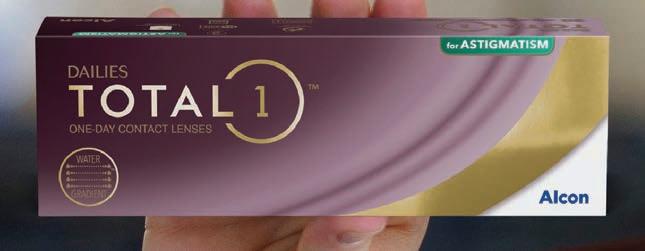
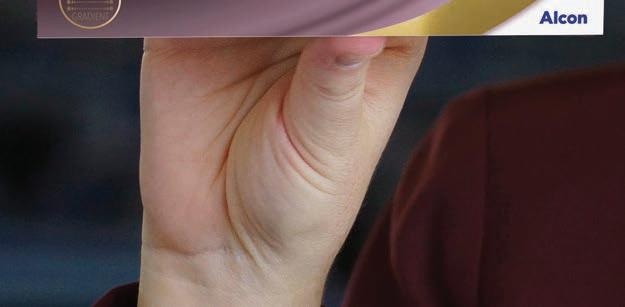





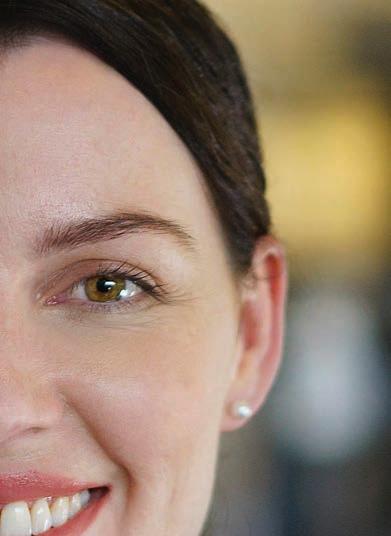







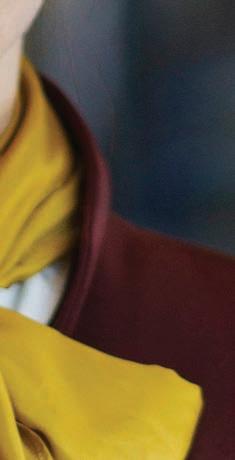













NOW AVAILABLE FOR ASTIGMATISM

BRIDGING EMPLOYEE AND COMPANY VALUES
A company is only as good as the people it keeps, which is why Tokai Optical Australia has made several key appointments to build a culture that places its customers – Australian independents – at its core.
Ms Mikaela Bartlam, support specialist at Tokai Optical Australia, recalls a recent interaction with an independent practice asking for a lens recommendation for vertical nystagmus – a condition she had never heard of nor encountered before.
But her uncertainty did not stop her from providing a solution; in fact, it spurred her into action.
“If you’ve got a weird, head scratching problem, then I am someone who is keen to jump in and find out information myself, so that the problem can be resolved. It’s something our customers really appreciate,” she says, adding that it’s her curiosity, genuine interest, and commitment to a tailored service that allows her to excel in her role.
The team hand-selected to manage Tokai Optical’s Australian operations, like Bartlam, are an embodiment of the company’s values and have laid its sturdy foundations in the optics segment.
Bartlam, alongside managing director Mr Justin Chiang, established the local subsidiary of the Japanese-headquartered company here in 2019. With her lengthy optical career, she is enhancing the company’s reputation beyond product alone, seeing Tokai become a lens partner of choice to an expanding number of independents across the country.
Since establishing its roots and towards the tail-end of COVID, Tokai has sought to elevate its service by broadening its customer service capabilities and supplementing the small team with an accountant, lens fitting department, and account manager.
Currently, Bartlam is involved with day-to-day communication, customer inquiries, managing new accounts, and advising customers on lens choice and coatings. She is generally the first point-of-contact for enquiries and troubleshooting tips.
As the archetype of unique product o erings, tailored service, and the quality to back this all up, Tokai has benefited from Bartlam’s expertise.
Her career in optics began in 2006, with the time spent alongside highly knowledgeable and passionate individuals proving invaluable in fortifying her industry knowledge. These include optical dispensing and administration positions, mostly in independent optometry practice. In fact, around nine and a half of those years were at LensPro Optometrists.


“WE’VE GOT A GOOD TEAM THAT REALLY CARES ABOUT OUR CUSTOMERS. SO INSTEAD OF JUST FOCUSING ON THE FIGURES, WE HAVE THE OPPORTUNITY TO BUILD STRONG RELATIONSHIPS WITH CUSTOMERS BASED ON THE SERVICE AND QUALITY OF THE PRODUCT.”
INSIGHT April 2024 55
JUSTIN CHIANG TOKAI OPTICAL AUSTRALIA
Justin Chiang, managing director, and Mikaela Bartlam, support specialist (back row: third and fourth from left) with the Tokai Optical team in Japan.
BUSINESS
Images: Tokai Optical.


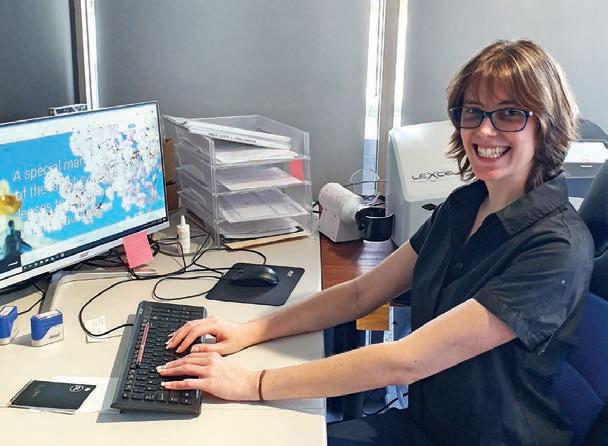
During this time, she had experience with the Tokai brand, as LensPro sourced Tokai lenses from Japan, and the flexibility in selecting frames and lenses for customers. “I always felt like I could sell what I believed was going to be the best for somebody rather than just the product,” she says.
In small, intimate, and personalised retail environments, Bartlam was accustomed to a customer-centric ethos. She understood that the needs of each customer di ered to the next, and to provide a premium service, she learned to assess, analyse, and identify the most suitable choice.
She also understood what customers do or do not respond well to and general trends. This environment fostered her keen interest in the optical industry and equipped her with the essential skills to thrive in her role as support specialist at Tokai Optical Australia.
Above all, what made the transition to Tokai enjoyable – and an obvious decision – was the company’s dedication to customer service adhering to the values that many independents have built their businesses on.
“I’ve had that in-store experience: I know what it’s like to sell to the public and I know what people are interested in,” she says.
“Having that face-to-face experience in store, you can find cues in people’s eyes and then you can hear in their tone of voice. It’s put in good stead for this role.”
By the time she had started at Tokai, Bartlam was well versed in the company’s technological o erings, having sold many of the company’s lenses which further streamlined her transition to Tokai.
“I had always been impressed by the technology as I’d been selling Tokai lenses for about six years,” she says. “Tokai’s customer service is just fantastic; they bend over backwards for you.”
A COMPANY DOING ITS TEAM PROUD
Bartlam says customer service is not the company’s only selling point; it is also carried by its product quality. Tokai does not need to sell a product in a grandiose way, but rather, seeks to use facts and data to get its message across. In essence, it has built a reputation of top-tier and unique products – especially with its progressive lenses – and reliability in service and quality.
The lenses are entirely produced in Japan from lens design, material and casting through to coating formulas, backed by a robust research and development department.
“We’ve expanded based more on reputation rather than marketing. Once the word gets out, people know and they come back because we can do the job,” Bartlam says.
She adds that what maintains Tokai’s reputation and keeps the company at the forefront of lens manufacturing is its ability to find a solution to and support customers’ needs.
“I think, personally, it’s important to have somebody at the end of the phone, who will help you through whatever we can find a solution whatever needs to be done and nobody is going to be left hanging; we’re not just going to say no to something,” she says.
For Chiang – who just recently became an advisory board member of Optical Dispensers Australia – it fits with Tokai’s philosophy of quality and customer service. He says employees can maintain their dignity knowing the company can provide the customer a good quality product.
“We’ve got a good team that really cares about our customers. So, instead of just focusing on the figures, we have the opportunity to build strong relationships with customers based on the service and quality of the products,” he says.
“This makes you feel like your work is meaningful and more than just a job.”
Chiang describes Bartlam as an exceptional individual who embodies the values of Tokai and has demonstrably contributed to the company’s growth.
“Her genuine care, proactive approach, prompt service, positive attitude, and insatiable curiosity are some of the keys helps building the business. I see her more a partner for the business than an employee,” he says.
As a company with relatively new operations in Australia, Chiang describes Tokai as dynamic and responsive to market trends and considers the opinion of its entire team.
“We can do things we want to do here, because we’re so new, the whole team has an opinion, and we can try a new approach to the market. And we really focus on the customer service,” Chiang says.
Despite the company’s growth, Tokai remains committed to its trailblazing environmentalism and premium customer experience.
Bartlam says it’s fulfilling to work for a company that has been committed to environmental sustainability before it was trendy.
“Tokai has committed to zero emissions since 2005. All water waste is recycled, and all the material from lens waste is turned into carbon and then it is used as fuel. The whole company is very focused on reducing waste and just helping the community,” she says.
Chiang adds: “In our factory, we commit to zero emissions, and we commit to recycle, reuse, reduce, refuse. So, basically everything; even the grease from food preparation in our sta cafeteria is recycled and turned into biodiesel."
“We also set waste targets. Apart from things we can recycle and reuse, we set a target per employee per day for wastage.”
Although Chiang recognises the company is still young and there is much to learn in this space, he says the team are committed to balancing business needs with environmental responsibility.
For Bartlam, working for a sustainable company is a source of pride.
“That’s always been something that I’ve felt passionate about. It’s so nice to know your company’s doing you proud,” she says.
“I love my job and I’m very, very lucky to have found a company who has values that align with mine. It’s great and gets better every year.”
56 INSIGHT April 2024
Tokai Optical’s headquarters in Japan.
BUSINESS
Mikaela Bartlam, alongside Justin Chiang, established Tokai’s Australian operations and has driven the company forward with her dedication to customer service.













9 modalities provide additional retinal visualisation*



Get Optos off your wish list and into your practice Do future

2500 studies demonstrate clinical value and practice efficiency*

Patients choose to pay for Optos imaging ≥ 80% of the time*





©2024Optos. All rights reserved. Optos®, optos® and optomap® are registered trademarks of Optos plc.
you a favour


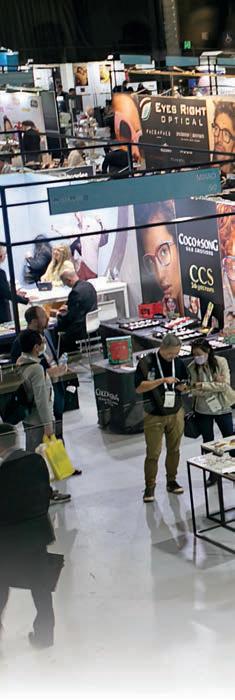
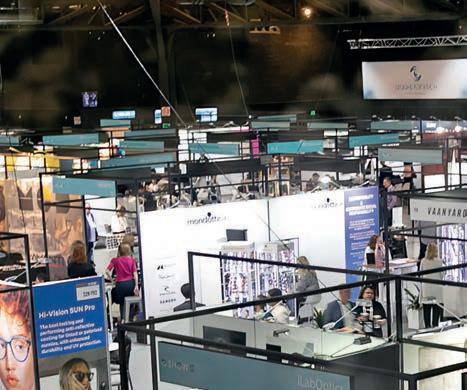

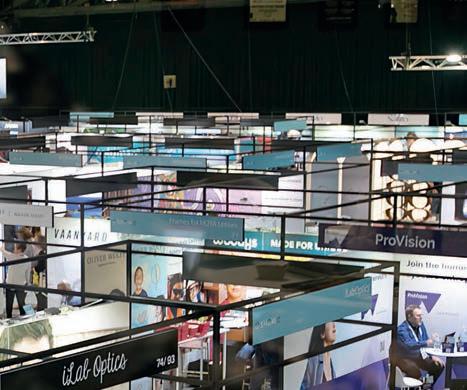
O-SHOW24
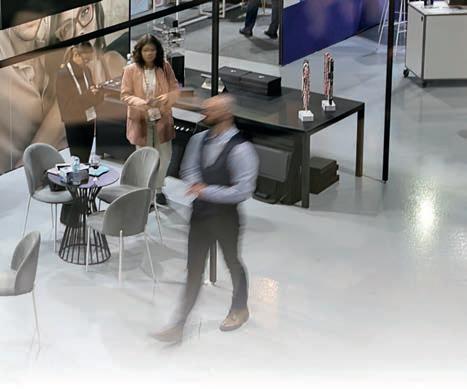
UNLOCKING PRACTICE POTENTIAL
Independent optometrists across the country are marking their calendars for O-SHOW24 in May. As one of the few optical events where product takes centre stage, attendees are leveraging the trade fair to elevate their practices to new heights.
Nestled within the walls of a newly renovated heritage house, Windsor Optometry in Sydney stands as a testament to tradition and excellence in eyecare. Principal optometrist Mrs Deanne Bradford, the visionary behind the clinic, takes pride in not just preserving its rich history but also in continuously enhancing its boutique o erings. With a commitment to providing top-notch services, Windsor Optometry is equipped with state-of-the-art technology and a dedicated team o ering a comprehensive range of clinical services – from advanced retinal imaging to therapeutic interventions.
“We complement our comprehensive clinical care with beautiful frames that we have sourced for our dispensing area,” she says.
The curated eyewear range is what truly sets Windsor Optometry apart. Bradford understands the significance of displaying diverse options that resonate with the clinic’s boutique ethos. To achieve this, she frequently attends industry events such as O=MEGA and O-SHOW – both run by the Optical Distributors and Manufacturers Association (ODMA) on alternating years – where she discovers the latest trends and connects with leading suppliers.
O-SHOW24, returning to Horden Pavillion in Sydney’s Moore Park from 17 to 18 May 2024, will build on the success of its predecessor shows, but this year is upping the convenience factor by being held on the two days immediately before Optometry NSW/ACT’s (ONSW/ACT) annual Super Sunday conference on 19 May.
A diverse range of exhibitors will be present at O-SHOW24, including suppliers and manufacturers from the lens, frames, children’s eyewear, sunglasses, equipment, accessories, and services sectors, with many companies marking the arrival of new technology at the event. This includes new product releases from the recent SILMO Paris (29 September to 2 October 2023) and MIDO Italy (Milan 3-5 February 2024).
For Bradford, O-SHOW24 is a unique opportunity to reshape her product o ering for the next 12 months, while condensing numerous conversations, demonstrations and negotiations across two days at a single location.
She’s keen to endorse the exhibitors and has found previous trade fairs valuable in building her boutique frame repertoire. Events like this are also crucial to sustaining the future of independent optometry practices, which have the freedom to do business with whoever they please, but sometimes lack the e ciencies of vertically integrated corporate chains.
“We like to support all the companies at the event, and we’ve taken on new ranges as a result of being there and browsing,” Bradford says. “It’s a great opportunity to retire old ranges and take new ones on.”
Mr Richard Banks, of Richard Banks Optometrists in Woollahra, NSW, echoes this sentiment and emphasises the importance of O-SHOW in accessing equipment under one roof.
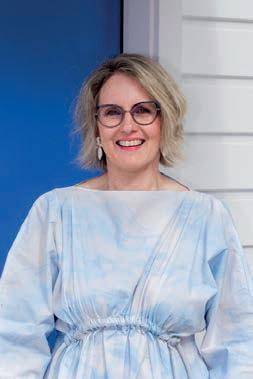

“IT GIVES US AN OPPORTUNITY TO BOND AS A TEAM AND GET OUT OF THE OFFICE. IT’S A GREAT WAY TO FORM CONNECTIONS WITH OTHER PEOPLE IN THE OPTOMETRY WORLD WHICH IS ALWAYS NICE TO DO.”
DEANNE BRADFORD WINDSOR OPTOMETRY
INSIGHT April 2024 59
O-SHOW24 allows independents to network, forge partnerships, and stay abreast of industry developments. Image: ODMA
EVENTS
Image: Deanne Bradford.
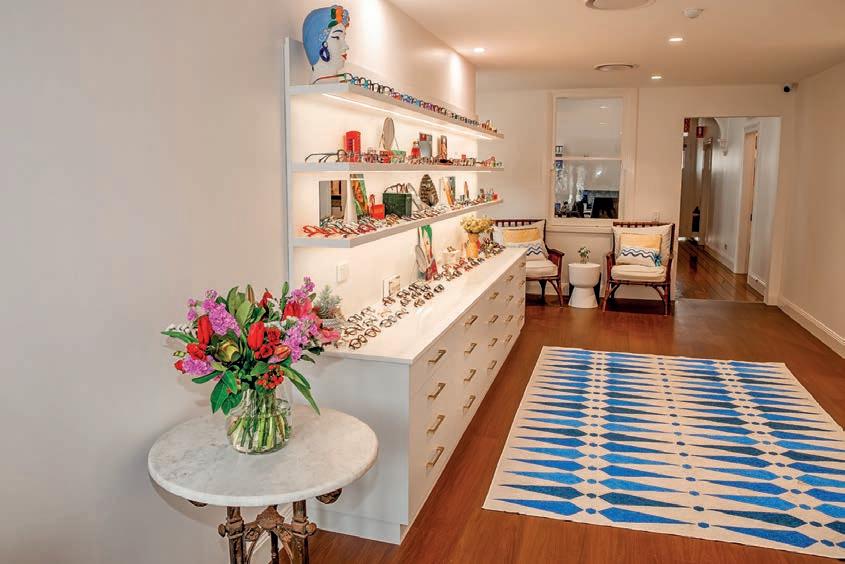
NEW ODMA AWARDS
The awards program, open to all ODMA members, will focus on frames and celebrate fashion, fun and creativity. Entries will be on display at O-SHOW24, with the winners announced onsite. Judging will be via ‘people’s choice’, with receipt of votes taken electronically from practice staff members wishing to participate.
Award Categories:
1. Most outstanding frame RRP under $300 AUD and launched since September 23
2. Most outstanding frame RRP $300 AUD or over and launched since September 23
Criteria suggestions for voters:
• On-trend
• Colour
• Materials
• Shape
• Value
• Ease of fitting
• Popularity
“Without this trade event, you wouldn’t have a chance to see most of the equipment manufacturers in one place,” he says.
Banks says he will be canvassing the latest ophthalmic equipment o erings to see if he can elevate the diagnostic suite in his practice. With no particular piece in my mind, the trade floor at O-SHOW24 will provide him with su cient opportunity to casually browse, and conduct product demonstrations.
He says O-SHOW provides a point-of-di erence in the event space as it serves as one of the very few opportunities to see an extensive showcase of products with an event market that is typically clinically focused.
The night of Saturday 18 May will feature a networking event, so attendees can kickstart the ONSW/ACT Super Sunday Conference the following day.
The networking event is designed for attendees to enjoy down time with practice team members, and to become acquainted with suppliers who are trusted partners in their business. Furthermore, they can meet peers to share ideas and solutions to industry challenges.
For independent optometrists like Bradford and Banks, O-SHOW24 will serve as a vital platform for networking, forging partnerships with suppliers, and staying abreast of industry developments.
FROM TRADE TO CLINICAL
As O-SHOW24 approaches, attendees such as Bradford and Banks are gearing up for a professionally enriching weekend. This is because ODMA has listened to feedback and coincided O-SHOW24 with ONSW/ACT Super Sunday conference on 19 May – a day of intensive workshops and professional development opportunities – that’s of particular relevance to NSW-based optometrists, as well as some inter-staters.
Super Sunday 2024 will o er 10 CPD hours (including 7.5T and 2i) at Doltone House, Darling Island. The program will feature an expert line-up of Australian and international speakers, with a focus on ocular pathology.
As someone who has travelled interstate to the O=MEGA clinical conference held in alternative years in Melbourne, Bradford urges other interstate travellers going to O-SHOW24 to take advantage of Super Sunday as well. She’s making sure she uses the boutique trade fair and conference as a one-stop shop.
Banks adds: “Last time, O-SHOW and Super Sunday were on subsequent weekends. And because they weren’t on the same weekend, some people had to choose between which ones they wanted to attend. This year, we don’t have to do that.”
To complement its product showcase, O-SHOW24 is also set to feature workshopping and professional development opportunities for the entire practice. This will provide unique, non-clinical learning opportunities for the retail and marketing aspect of practices.

Banks and Bradford are bringing their team of optical dispensers along with them which they say is a great opportunity to not only strengthen relationships with suppliers but to bond with the team. To them, the trade fair is not just about expanding their product suite; it’s about nurturing their teams and fostering a culture of excellence.
“It gives us an opportunity to bond as a team and get out of the o ce. It’s a great way to form connections with other people in the optometry world – which is always nice to do,” Bradford says.
With this in mind, O-SHOW24 presents the ideal opportunity for independents to elevate their practices. Beyond acquiring new frames or equipment, it’s about investing in the growth and vitality of independent optometry – the crux of ODMA’s ethos.
“O-SHOW is excellent because it appeals to some of the smaller boutique suppliers with frames,” Banks adds. “That means it’s good from the perspective that independent practice can have a look at di erent brands and equipment that would be hard to see otherwise.”
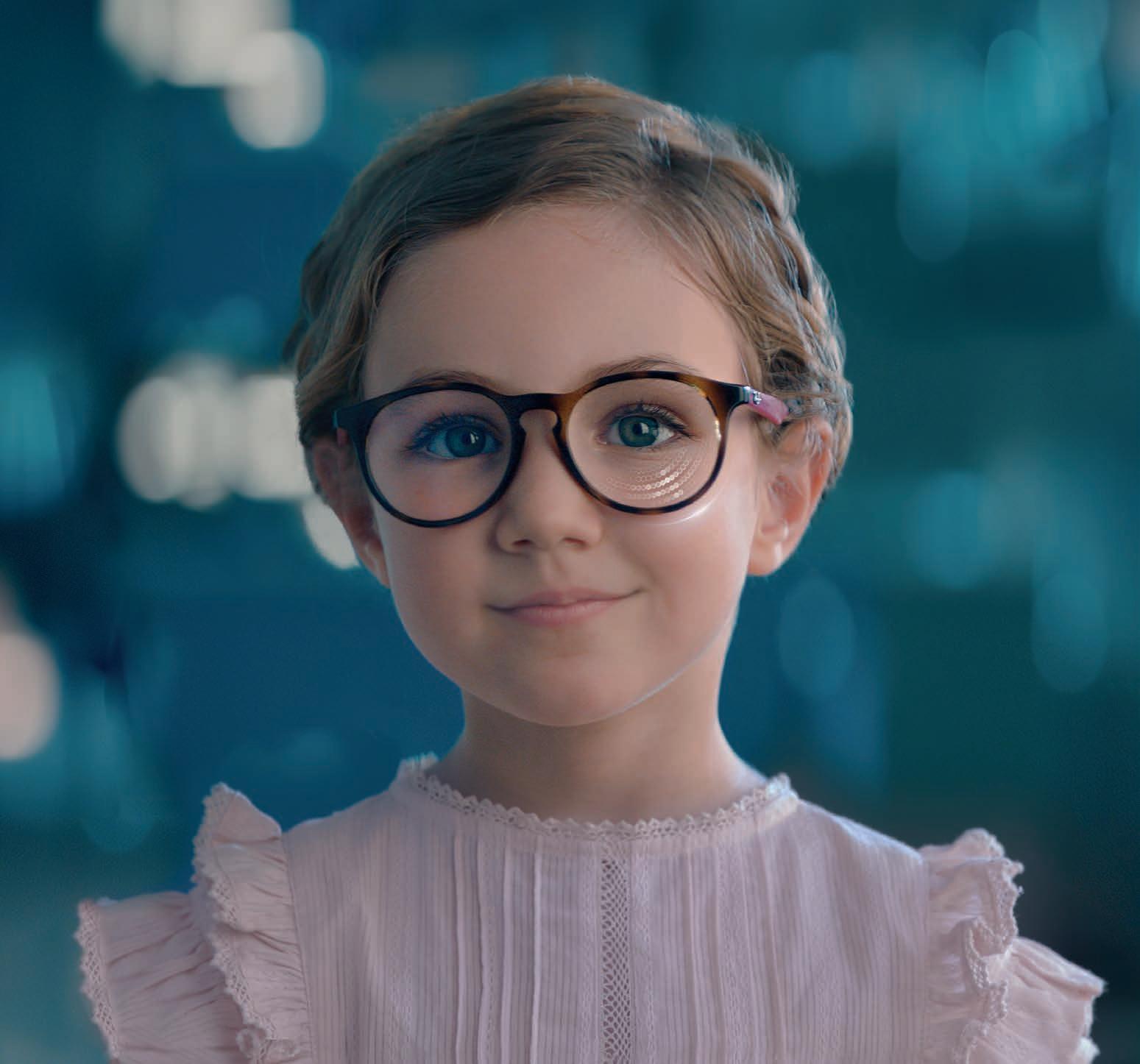
60 INSIGHT April 2024 EVENTS
Windsor Optometry in Sydney carefully curates its boutique frame offering. Image: Deanne Bradford.
Practice owners attend O-SHOW seeking out the latest equipment offerings and eyewear trends. Image: ODMA.

progression. Essilor® Stellest™ lenses slow down myopia progression by 67% on average*, compared to single vision lenses, when worn 12 hours a day.
Visit
*Compared to single vision lenses, when worn by children at least 12 hours per day every day. Bao, J., Huang, Y., Li, X., Yang, A., Zhou, F., Wu, J., Wang, C., Li, Y., Lim, E.W., Spiegel, D.P., Drobe, B., Chen, H., 2022. Spectacle Lenses With Aspherical Lenslets for Myopia Control vs Single-Vision Spectacle Lenses: A Randomized Clinical Trial. JAMA Ophthalmol. 140(5), 472–478. https://doi.org/10.1001/jamaophthalmol.2022.0401
our booth at Equipment 3 & Stands 24-26 Slow down myopia

BOLLÉ SAFETY A LEADER IN PRESCRIPTION SAFETY EYEWEAR
Bollé Safety, a leading manufacturer of safety eyewear, says it understands how important it is to meet customers’ prescription eyewear needs. That's why it o ers a range of prescription safety eyewear options for an ideal fit in most environments. Providing protection, style and comfort, Bollé Safety says it uses the most advanced lens technology, ensuring customers will be safe on the job.

PROJECT GREEN STEPPING TOWARD A MORE ECOCONSCIOUS FASHION INDUSTRY
The AS/NZS 1337.6.2012 approved frame range, on display at O-SHOW24, can be ordered to suit wearers’ specific prescriptions and work environments, with most frames available in four lens options: single, bifocal, progressive and extended near vision.
“You can also choose from a range of lens options, such as polarised for outdoors, blue light protection for o ce work and photochromic for varying light levels. The Bollé Safety Eyewear range also o ers our exclusive PLATINUM, anti-fog and anti-scratch coating,” the company says.
“The range of frames includes both metal and polycarbonate, with di erent degrees of curve and in a variety of colours, lens-shapes and sizes to suit the task at hand, as well as the wearer’s face shape and colouring. Also available in the range are risk specific frames that provide protection against environments with extreme dust, gas, or chemical hazards."

CYLITE TO REVEAL LATEST ADDITIONS TO HPOCT SOFTWARE
Cylite is an Australian company that manufactures the world’s first Hyperparallel OCT (HP-OCT). The company says its HP-OCT is a revolutionary technology that creates, for the first time, true volumetric images of the anterior and posterior segments.
After a successful launch at the end of 2023, Cylite is seeking to continue its momentum at O-SHOW24.
“Visitors to the Cylite booth will be able to see the newest version of the Focus software, featuring a more extensive corneal topography o ering, including sagittal height and elevation maps covering both cornea and sclera – ideal for scleral lens fitting,” the company says.
Additionally, visitors will learn about the addition of axial length progression graphs as well as the agreement with Professor James Wol sohn’s group – Wol sohn Research – to integrate its recently launched PreMO myopia management application into the Cylite Focus software.
Booth: 27
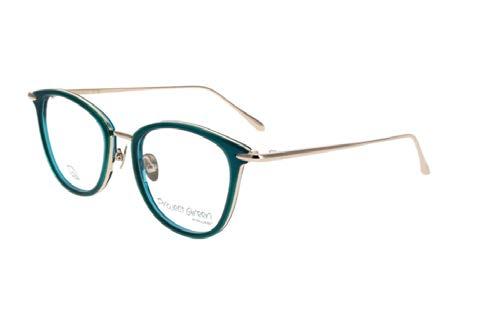
Eyes Right Optical is introducing the latest release from eco-conscious brand Project Green, including the new model ‘Gum’ inspired by the beauty of the gum tree. Crafted with care, these frames are said to boast richly coloured acetate resembling nature’s vibrant hues, paired with durable single-piece stainless steel temples subtly embossed with the brand’s logo.
Aligned with Project Green’s sustainability commitment, for every frame sold, a tree is planted through the ONE TREE PLANTED Foundation, aiding in environmental preservation.
“By choosing Project Green, wearers not only enhance their style but also support a greener future. With biodegradable acetates from Mazzucchelli and sustainable materials used throughout production, each pair embodies a step toward a more eco-conscious fashion industry,” Eyes Right Optical says.
“Join Project Green and Eyes Right Optical in their mission to positively impact the planet – one stylish frame at a time. Experience the beauty and purpose of Project Green’s latest release, where fashion meets sustainability, and every purchase makes a meaningful di erence.”
Booth: F35 & F36
WHY MORE INDEPENDENTS ARE TURNING TO TOKAI OPTICAL
Tokai Optical is hoping to turn heads at O-SHOW24, with a range of innovative lenses designed to optimise vision and personal style.
Some highlights include:

• NeuroSelect progressive lens: o ering patients a new level of visual comfort. Using neuroscience technology, NeuroSelect quantifies human sensation to deliver “a truly comfortable and a ective visual experience”.
• High Resolution single vision lens: “See the world in stunning detail” with Tokai’s latest single vision technology. These lenses provide a wider field of view, free from distortion, thanks to the design that mimics how light travels through the fovea centralis, the eye’s central point of sharpest vision.
• Unleash your style: People can express themselves with Tokai’s extensive range of lens colours. There are 14 shades to choose from for polarised lenses, or explore the fashionable tint options that not only reduce glare but also allow the wearer to make a bold statement.
• World’s thinnest lens material: Tokai says its 1.76 index lens material is the thinnest available in the world. This innovation ensures glasses are lightweight, comfortable, and aesthetically pleasing.
Booth: 3, 4
62 INSIGHT April 2024
Disclaimer: Exhibitors featured in this section are partners of Insight magazine. This was created independently, and does not represent the exhaustive list of O-SHOW24 exhibitors.
Image: Bollé Safety.
Image: Cylite.
Image: Eyes Right Optical.
Image: Tokai Optical.
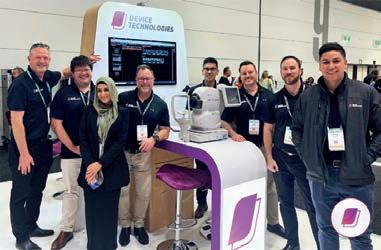
DEVICE TECHNOLOGIES: THE LATEST FROM TOPCON, PLUS MORE
As a leader in the medical technology field for more than 30 years, Device Technologies provides high calibre of medical supplies across Australia, New Zealand, and Asia. In 2024, its ophthalmic technologies team is bringing innovation from Topcon, Haag-Streit, Reichert, Heine, Frey and PlenOptika. With myopia management an expanding area of focus in eyecare, Device Technologies provides two solutions in Myah from Topcon and Lenstar Myopia from Haag-Streit.
“The Myah o ers additional functionality in dry eye diagnosis for flexibility and space saving, reducing the need for multiple devices. Also space saving are the Maestro 2 OCT and photo, the second-generation Maestro OCT from Topcon,” the company says.
“We are pleased to also bring European quality from Heine and Frey, as well as handheld devices from Reichert and PlenOptika. Join us at our booth to meet with our team and view our solutions.”
Booth: Equipment 2


MOREL LISA ‘A DYNAMIC FUSION OF THREE ACETATES’
New MOREL series ‘Lisa’ is described as a dynamic fusion of three acetates, each boasting impeccable finishes, and forming a visually striking collage that amplifies charm threefold.
Supplied by Morel Australasia, the “meticulous craftsmanship by MOREL” is evident in the front work with its intricate multiple bevels, enhancing the frame’s individual personality, the company says. A powerful presence of acetate not only balances the composition of the frame but also works to create a seamless aesthetic link between the diverse colours.
“Crafted entirely from acetate, the Lisa series guarantees both quality and durability. MOREL’s innovative hinge design, engineered for comfort, eliminates the need for screws or soldering, ensuring e ortless wear. The bold design approach not only elevates the MOREL’s aesthetic appeal but also underscores its practicality and reliability, making it a standout choice for those seeking both style and substance in their eyewear.”
Booth: F33 & F34

www.marchoneyewear.com.au AU: 1800 251 025 • NZ: 0800 141 444 CS.Aus@marchon.com
Image: Device Technologies. Image: Morel Australiasia.

HOYA IS HELPING TO TRANSFORM THE PATIENT EXPERIENCE
HOYA’s stand at O-SHOW24 will showcase live the collection of new state-of-the-art systems and apps designed to transform practices and provide a streamlined personalised experience for patients.
The first of these is HOYA Digital Fitting (HDF), a patented portable, smart centration software that takes accurate and precise fitting measurements. The app delivers a comfortable and technologically advanced experience for the patient, without the need for a jig or other attachments.

Hoya Consultation Centre 360 (HCC360) will also be on display. It’s a tool designed to streamline the patient journey as practice sta walk them through the frame and lens selection. It provides for a more personalised experience using lifestyle surveys, product demonstrations and tailored recommendations.
Meanwhile, Hoya Ordering Centre (HOC) is a next generation ordering platform. Being a web-based application, it requires no local set up. Catalogues are updated automatically, and include an Advanced Lens Order Consultation Tool, plus a Favourites menu to give users quick access to preferred lens designs.
Finally, Hoya visuReal (pictured) has undergone a transformation with AI integration. The AI-powered algorithm has been meticulously trained to significantly reduce manual adjustments, resulting in a simpler, more e cient and more accurate, as well as a less user-dependent process.
Booth: 14, 15, 16
WEARING AVANTI WITH PRIDE
Modstyle “is spreading love and celebrating diversity” with the latest release from AVANTI eyewear, introducing the vibrant and exciting ‘PRIDE’ sunglass that is a new variation to the beloved AVANTI ‘Heart’ collection.
According to the company, the piece is crafted using a sophisticated lamination technique and layers of colourful acetate to create a stunning rainbow e ect, symbolising unity and inclusivity.

“With every ‘PRIDE’ sunglass sold, Modstyle pledges to donate $AU5 to the Elton John AIDS Foundation, contributing to the fight against HIV/AIDS and supporting vital research and programs. By wearing your AVANTIs with pride, not only do you exude style and confidence, but you also make a meaningful di erence in the world,” Modstyle says.
“Join the movement, celebrate love, and stand in solidarity with the LGBTQ+ community by embracing the ‘PRIDE’ sunglass from AVANTI. Together, let’s make a statement and support a fantastic cause while looking absolutely gorgeous.”
Booth: F31 & F32
DISCOVER HOW OPTOS MONACO CAN BENEFIT YOUR PRACTICE
Monaco is an exciting new way for eyecare professionals to enhance their clinical exams, according to its manufacturer Optos. The system is the only ultra-widefield retinal imaging device with integrated spectral domain OCT. It produces a 200° single-capture optomap image in less than ½ second and provides cross-sectional 40° OCT views of retinal structures.

According to the company, Monaco enables a rapid multi-modality capture featuring colour, autofluorescence and OCT scans, for both eyes, in as little as 90 seconds. It can quickly capture a six-image, multimodal overview of both eyes. Visualising multiple image modalities at the same time enables the practitioner to detect pathology in the various views, improving clinic flow and e ciency.
Optos states that optomap has been shown to enhance pathology detection and disease management, and to improve clinic flow. The integrated OCT further contributes to this capability. With optomap, OCT scans are precisely registered to corresponding optomap images facilitating detailed examinations, follow up scanning, and visit to visit comparisons.
Booth: 11,12,13
THE ARRIVAL OF ZEISS VISUCORE 500
ZEISS is presenting ZEISS VISUCORE 500 – a high-precision system combining objective and subjective refraction. It is designed to quickly deliver precise data regardless of the size of the refraction room or the level of staff experience.
According to the company, the demands for a digital, holistic experience when visiting an eyecare professional have grown. ZEISS VISUCORE 500 reflects this, offering a state-of-the-art instrument that automatically guides the operator through the process.

“ZEISS VISUCORE 500 is ideal when space is limited, with a footprint of 0.8 square meters. Built-in mirrors and a lens make it possible to physically create an optical focus in the distance. This small footprint may allow for another refraction lane to expand your exam capabilities, or to use valuable space more efficiently,” the company says.
“ZEISS VISUCORE 500 can be integrated into the ZEISS ecosystem for a seamless workflow. It is controlled using an iPad via the ZEISS VISUCONSULT 500 where the refraction values are transferred to the available centration unit and ultimately become an automated part of the order via ZEISS VISUSTORE.”
Booth: 49, 50, 51, 52
OPTIMED’S EXCLUSIVE TRADE FLOOR OFFERS
Ophthalmic industry supplier OptiMed is exhibiting the latest in equipment innovation from leading manufacturers at OSHOW24. The company’s team of product specialists will be showcasing the newest product highlights from established global suppliers and brands. New products will also be unveiled for the first time and exclusive o ers for those who wish to purchase at the event. OptiMed will also be incentivising customers wishing to trade in their old OCT and visual field perimeters to the latest in Optopol Technology. Pre-booked time slots are essential and can be requested via sales@optimed.com.au to schedule a viewing.
Booth: Equipment 3

64 INSIGHT April 2024
Image: OptiMed.
Image: HOYA.
Image: Modstyle.
Image: ZEISS.
Image: Optos.
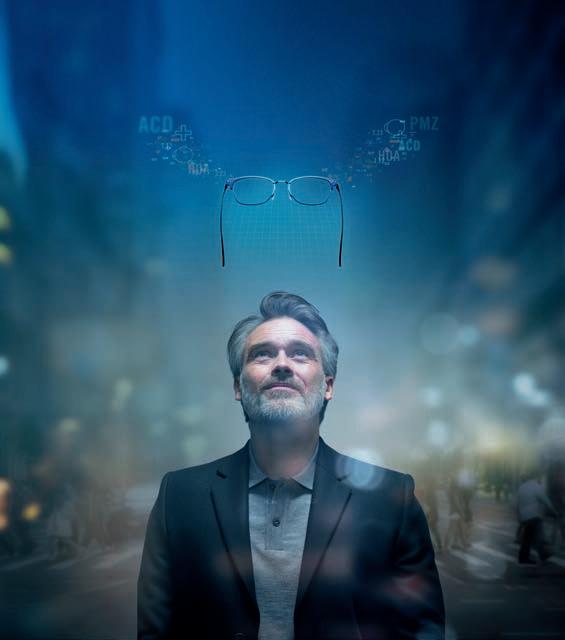
A HIVE OF ACTIVITY ON THE SAFILO BOOTH
Safilo is anticipating an engaging O-SHOW24, with visitors to the booth able to experience the latest from leading brands and new initiatives.
RODENSTOCK ASSISTS PRACTICES TO DELIVER INDIVIDUALISED EYECARE
With individualised healthcare considered a growing global trend, ophthalmic lens company Rodnestock says many practitioners are incorporating this into better patient experiences and outcomes that is, in turn, delivering healthy financial practices.
“Visit the Rodenstock stand at O-SHOW24 and discover how Rodenstock can assist your practice deliver individualised healthcare through patient journey, premium products, latest instruments and programs."
Booth: Lens 4




Attendees can explore Safilo’s best-sellers from major brands including Carrera, Boss, Kate Spade, Carolina Herrera, Eyewear by David Beckham, Isabel Marant, Polaroid and more. They can also find out more about the launch of a new luxury fashion brand from the Italian fashion house, Etro, and the next exciting stage of the Carrera and Pat Cummins campaign (pictured).
Plus, Safilo will detail new brand and product additions to the Full Circle program, run in partnership with CR Labs, which delivers “a simplified omni-channel experience and unmatched value for your practice”. The booth will also showcase new brand support materials and customised visual merchandising opportunities to help practices make an impact with customers.
Booth: 53-56
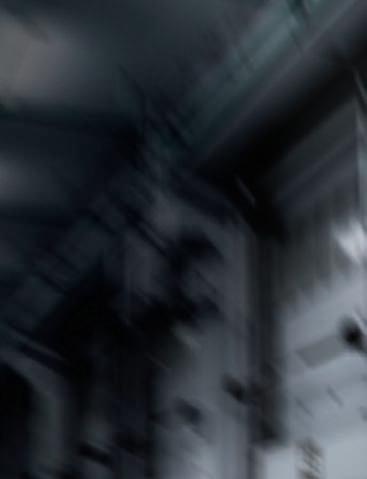
















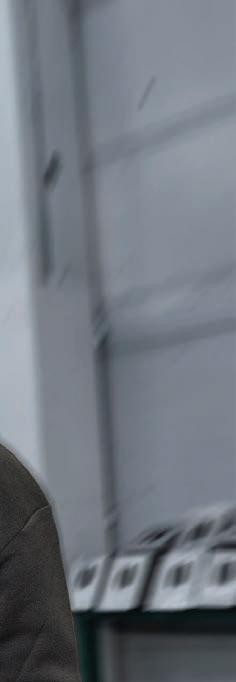



























AVAILABLE
EXCLUSIVE
ANTI-SCRATCH
KOVERRXKLASSEERXHARPERRXTRYONRX KOVERRXKLASSEERXHARPERRXTRYONRX
WITH :
ANTI-FOG &
COATING
Goto: rodenstock.com/bigvisionforall Fol ow: #BIGVISIONFORALL
Image: Rodenstock.
Image: Safilo.

EYECARE PLUS OFFERS INDEPENDENTS FLEXIBILITY
Owned by its members, independent optometry network Eyecare Plus o ers three membership options: branded and co-branded which include an exclusive territory, as well as unbranded.
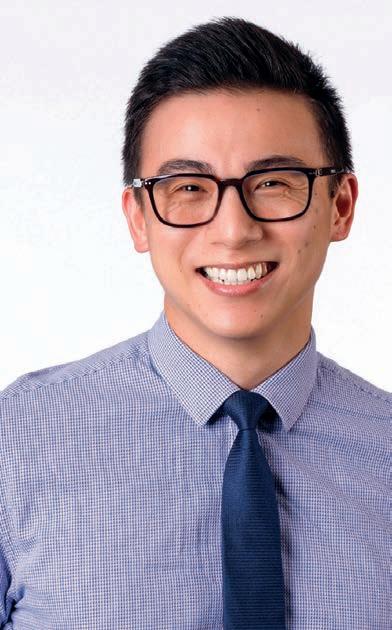
“All three have access to our extensive digital marketing, media planning, benchmarking, buying group benefits, business advice, optometrist events, sta training and many other services like helping with a practice purchase or sale,” the organisation says.
Booth: 1
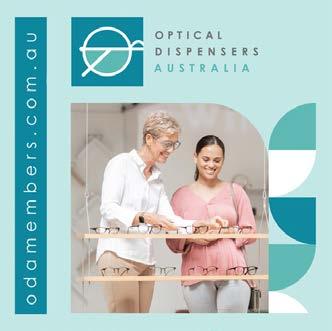
WHAT IT MEANS TO BE AN ODA MEMBER
O-SHOW24 attendees can learn more about Optical Dispensers Australia (ODA)’s membership options and upcoming events.
The organisation is Australia’s peak support body for the optical dispensing profession. Established in 2022, the ODA community is made up of real everyday people who work as or alongside optical dispensers.
“Our members all have di erent levels of experience but have one very important thing in common, a desire to be the best they can be in a profession that requires a variety of skills,” ODA says.
“Joining ODA o ers optical industry professionals exclusive benefits and resources aimed at enhancing their careers, skills, and professionalism. Membership includes access to Australia’s leading CPD program for optical dispensers, among other perks such as networking opportunities and career advancement support, making ODA an essential partner for optical dispensers and a liated employees seeking success in their field."
Booth: 18
BOLLÉ’S SUNGLASSES FOR WATER SPORTS ENTHUSIASTS
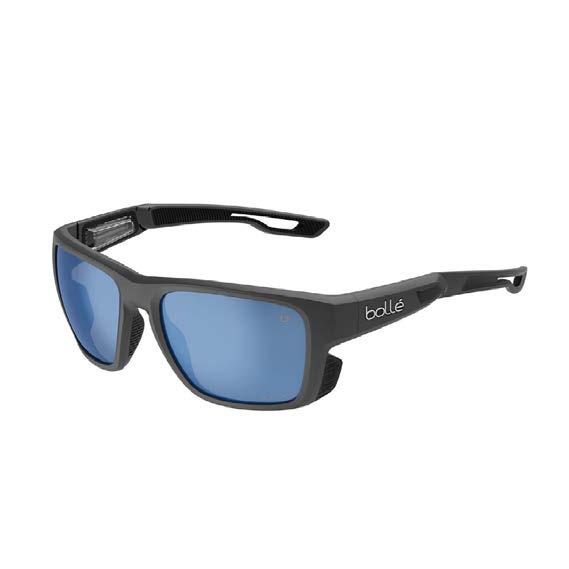
A feature of the Sunglass Collective stand will be the Bollé AIRDRIFT. These sunglasses are designed for water sports enthusiasts, featuring a flat rectangular frame for a stylish lifestyle appeal.
Constructed from lightweight and floatable materials with Air Float technology, these sunglasses can float horizontally. The base 8 model, incorporating Fin Shield technology, o ers a wide field of view and excellent coverage, including on the sides.
“Enhanced with snap hinges and Thermogrip rubber on temple tips and nose pads, they provide exceptional comfort and stability. As part of the React for Good campaign, the AIRDRIFT is composed of 45% bio-based material. Available with Volt+, Bollé’s advanced high contrast and polarised lens, these sunglasses o er top-tier performance for outdoor activities,” the company says.
Booth: F7, F12

MARCHON PRESENTS THE LATEST IN MULTIPLE COLLECTIONS
Eyewear company Marchon is encouraging attendees to visit its exhibit at O-SHOW24 as it showcases the latest collections from Nike, Paul Smith, Ferragamo and Calvin Klein.
“Representing versatility, sporty-chic, and timelessness, these collections o er the perfect frame to upgrade any look. Stop by our booth to discover Marchon’s cutting-edge trends and innovation. See you out there,” the company says.
Both: 80, 81 and 83
66 INSIGHT April 2024
Image: Sunglass Collective.
Image: ODA.
Image: Eyecare Plus.
Image: Marchon.
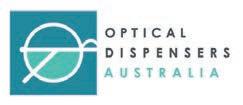
FROM RECEPTIONIST TO DISPENSER PRACTICE OWNER
DISPENSER DETAILS
Name: Allyson Caffell
Position: Owner & optical dispenser
Location: Northam Optical, Western Australia
Years in industry: 26
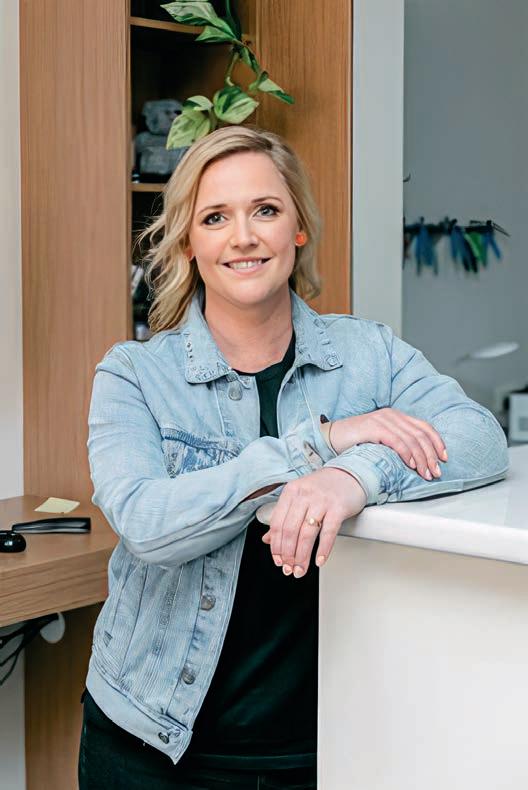
to work every day is not a chore. Although I fell into optometry, I would not change my career for the world. I love interacting with clients, working alongside my peers and working for myself. I feel lucky to be doing what I do.
5. What are the key opportunities and challenges facing the future of optical dispensing in Australia?
year, as they have a dispensing stream that I’ll be attending. ODA conducted a masterclass in Western Australia that I found extremely motivating. After a few years, you can become complacent, so I love attending all of these to not only to stay motivated but in touch with new technology and improvements.
7. Why did you become an ODA member, and what value do you see in the organisation?
my hometown, Northam, and they were looking for a
challenge of meeting budgets, managing sta and the contact I had with so many likeminded people. I then an independent optometry practice supported me to study for my Cert IV in Optical Dispensing. By 2012 I had completed the course with distinction and, armed with 15 years’ experience, I opened my own practice,
2. What are your main career highlights?
I’ve just celebrated 10 years in business. There have been many highlights, including attending Silmo, O=MEGA, O-SHOW and TLC Tasmania. I have also made many lifelong friends but my main highlight would be opening my own store. I couldn’t have achieved it without the support of my husband Clint, daughters, Kate, Amitty and Piper, and parents, Jan and Alan. I also have a brilliant team: Marz, Graham, Leanne and Michelle – our cohesion has made Northam Optical what it is today. Plus, I will be joining ODA’s aid trip to Fiji this year, volunteering with a group of optical dispensers in remote villages to access better eyecare and vision.
3. What are your strengths as an optical dispenser and what excites you?
I love when a person comes to me with a problem they couldn’t have resolved anywhere else. Whether it is a change of lens design, or working with my optometrist to find a solution, I pride myself on thinking outside of the square and troubleshooting with an open mind. Dispensing unique lenses to suit specific requirements gives me a real buzz.
4. If you could provide advice to yourself at the beginning of your career, what would you say? Enjoy what you do. When you enjoy your career, going


As an independent practice, competing with multinational companies is my biggest challenge. They have such a big presence and huge buying power over independents. The way I have combatted this is by dealing with independent companies, such as Opticare, Mondottica and Eyes Right Optical. These companies face the same issues I do and the support I receive back speaks volumes. I would recommend joining Optipro, who negotiate discounts for members on frames and lenses.
6. How do you ensure your skills and knowledge stay up to date in a fast-moving industry?
Staying up-to-date in the optical world is a must. I was out of optometry for less than a year and felt I had been away for 10. I love to attend optical conferences where possible, including, Silmo, O=MEGA, O-SHOW, TLC Tasmania and WAVE. I’m excited for WAVE this
I’m proud to be an ODA member. An organisation like this for optical dispensers has been a long time coming. Optometrists must attain a certain amount of CPD to maintain their qualification but dispensers don’t even need a qualification anymore. Having ODA is going to boost the careers and skillsets of optical dispensers. Now ACOD is o ering Cert IV in Optical Dispensing across most capital cities, the public will be the ones who benefit from more knowledgeable, higher skilled professionals.
8. What would you say to others thinking of joining ODA?
New or not to the industry, everyone can gain something from joining. Whether it’s networking, continual development, or industry changes, this is where to find it all. Have a look around the website, you will be amazed what they o er.

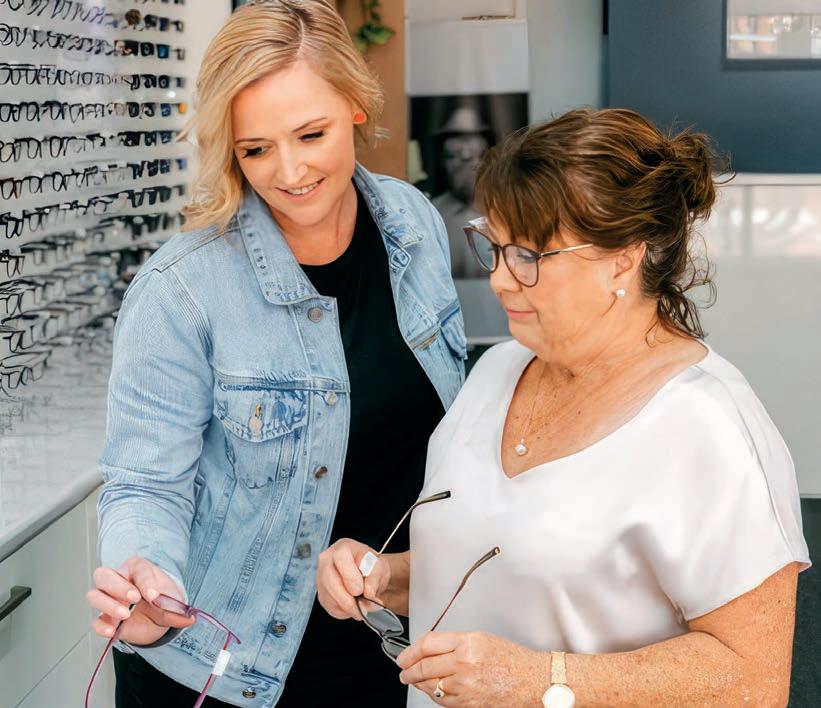

INSIGHT April 2024 67
Allyson Caffell prides herself on troubleshooting with an open mind when patients come to her with an unresolved issue. Images: Allyson Caffell.
Founded in 2022, OPTICAL DISPENSERS AUSTRALIA’S mission is to transform the optical dispensing industry by creating a community where optical dispensers and their associates can feel supported and inspired through education, events, networking, and employment advice, plus more. Visit: www.odamembers.com.au
A GUIDE TO 2024 EYEWEAR TRENDS
BEFORE BECOMING AN OPTICAL DISPENSER, BONNIE EASON COMPLETED A FASHION DEGREE, GIVING HER A UNIQUE PERSPECTIVE. SHE OFFERS HER 2024 PREDICATIONS IN EYEWEAR TRENDS.

"DESPITE THE SHIFT AWAY FROM BRIGHT, CHUNKY COLOURS, THERE IS ONE COLOUR I THINK WILL DOMINATE THE NEXT 12 MONTHS AND BEYOND, WHICH IS GREEN."
With the 2024 Pantone Colour of the Year for 2024 announced as Peach Fuzz (PANTONE 13-1023), I expect to see an influx of this colour, if not already, in our surroundings particularly in fashion and interior design. This colour, described as a “velvety peach tone”, was chosen for its warmth and “gentle lightness and airy presence that lifts us into the future”. For its impact on eyewear, I predict we will start to see a return of translucent frames in a big way. These frames began their rise to popularity in 2016 with the Pantone Colour of the Year being Rose Quartz and since then have become a staple colour in eyewear such as black and tortoise shell. However, demand has softened in the past few years. In contrast to 2016 where we saw plenty of pink hues in these crystal frames, I predict we will get warmer undertones such as champagne, peach, apricot and beige.
Where chunky frames with a bold, solid colour have dominated eyewear trends during the past couple of years, we are now starting to see a reduction in this with new trends steering towards pattern, gradient tones or textured shape.
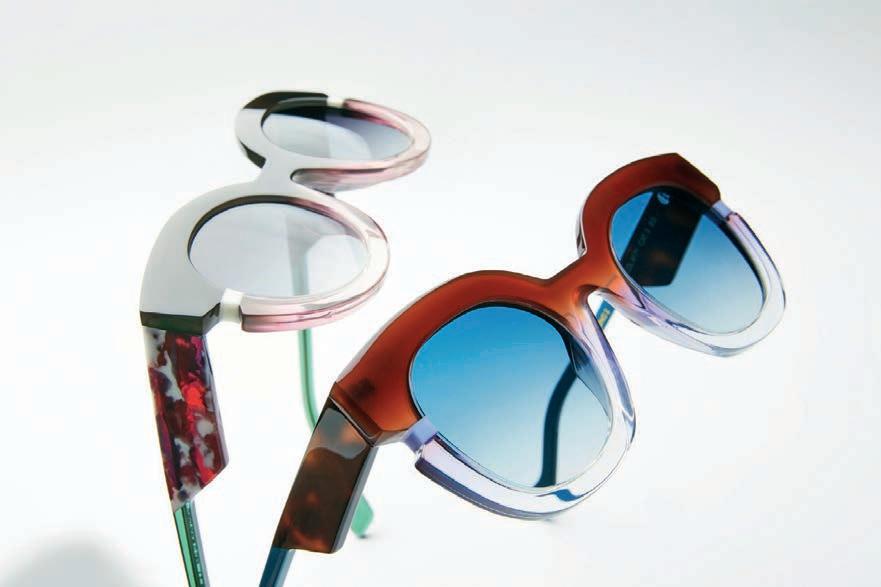
For someone wanting an exciting, standout frame be sure not to look past unique patterns. Not only do I see these being a forecasted trend for the rest of the year, but they also make a great display piece on the shelf that draws in the customer. With checkered prints being a big thing in interior styling now, I wouldn’t be surprised to see some of these patterns make their way into eyewear too. While some frames such as the l.a. Eyeworks RYE in 904, which is a blue and white checkered print, will incorporate the pattern throughout the whole frame, one can also expect frames with patterned accents for those not wanting something so flamboyant.
Another emerging trend seems to be gradient or “ombre” frames. These frames typically have a darker or bolder colour at the top which fade to a lighter colour down the bottom, but may also just be merging two di erent colour tones halfway down the frame. One thing to be mindful of when choosing this for a customer is that if it is a lighter colour at the bottom, that it does not clash with their skin tone. I am expecting this style to carry on for a while as it can adapt to each season whether it be two brighter colours merging in the warmer months or a more muted tone with an ombre e ect for winter.

There isn’t a certain shape I think will be a particular standout, however I believe we will rapidly start to see less heavy, chunky frames, with the focus shifting to more detail carved into the silhouette instead. This style will incorporate di erent techniques added to predominantly acetate frames with either sanding/polishing methods or multi layered materials adding an extra dimensional e ect. These frames will most likely be seen in your higher end brands adding another tier of quality and point-of-di erence. Even though I think we will see a mix of shapes throughout this year, I believe we may begin to see oversized frames return more towards the end of the year.
Despite the shift away from bright, chunky colours, there is one colour I think will dominate the next 12 months and beyond, which is green. I think the seasons will depict exactly which hue, with winter giving us deep emerald green, dark turquoise or bluey greens whereas spring/summer we will see more vibrant tones of green.
TOP: An emerging trend may be gradient frames that typically have a darker colour at the top before fading into a lighter colour. Images: Bonnie Eason.
ABOVE: With checkered prints popular in interior styling now, models like l.a. Eyeworks RYE may translate to the eyewear market.
The fashion industry is always subject to change, however. With many spectacle wearers opting to purchase new frames annually or bi-annually, we are less likely to see fast fads and more inclined to see longer lasting movements. Keeping a collection of classic styles as well as fashion forward pieces is my biggest recommendation to ensure you are keeping all your clientele happy.
ABOUT THE AUTHOR: Bonnie Eason is a qualified optical dispenser and practice manager at Evolve Optometry in Ulladulla NSW. She was also founding advisory board member for Optical Dispensers Australia (2022-2024).
68 INSIGHT April 2024
OPTICAL DISPENSING
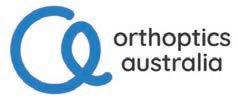
VISION AUSTRALIA AND LIONS OUTBACK VISION TEAM UP IN BROOME
VISION AUSTRALIA’S VIRGINIA MCDONALD DETAILS HER COLLABORATION WITH LIONS OUTBACK VISION TO ESTABLISH BROOME’S FIRST LOWVISION SERVICES, AND HOW THE ROLE OF ORTHOPTISTS IS CENTRAL TO ITS SUCCESS.

In Broome, a coastal town in northwest Australia, Vision Australia and Lions Outback Vision have partnered to significantly improve eyecare for residents – including blindness and low vision rehabilitation – for the first time. This collaboration has led to the establishment of low-vision services in the Kimberley Eye Hub, a new multidisciplinary eyecare centre that o ers advanced ophthalmology and optometry services closer to home, eliminating the need for long travels to Perth and remote regions for similar services.
"THE ROLE OF ORTHOPTISTS IS CENTRAL TO THIS PARTNERSHIP’S SUCCESS, BRIDGING BOTH WORLDS WITH A COMMON LANGUAGE."
THE PARTNERSHIP
Led by Associate Professor Dr Angus Turner, the Lions Outback Vision team and I, the Kimberley Eye Hub represents a significant advancement in making eyecare accessible in Broome and introduces crucial blindness and low vision rehabilitation services to the community for the first time. The integration of our missions was seamless, and I was thrilled to lead this project for Vision Australia.
Collaborating with Dr Turner and Lions Outback Vision felt natural, as our services complement each other well, working ‘hand in glove’. The role of orthoptists is central to this partnership’s success, bridging both worlds with a common language. This collaboration has culminated in the establishment of Broome’s first low-vision clinic within the hub, providing comprehensive services tailored to meet the community’s needs directly.
RENEE RICH: LEADING CHANGE
Orthoptist Ms Renee Rich graduated in 2021 from the University of Technology Sydney (UTS), and relocated from regional NSW in 2023. Rich leads the operational low vision services onsite, specialising in personalised vision rehabilitation, she aims to enhance life quality for individuals with blindness and low vision. Working under the guidance of Vision Australia and Lions Outback Vision, Rich has broadened her expertise beyond the traditional role of a specialist low vision orthoptist, embracing a wider spectrum of eyecare and vision rehabilitation skills.
Rich’s role is pivotal, as she applies her ophthalmic skills as an orthoptist to support Lions Outback eye clinic sessions and facilitate early rapport and trust with patients. This initial connection is crucial,
as it addresses the range of emotions patients face regarding eye disease and vision loss. Her work is foundational in o ering hope and in educating patients about the possibilities presented through the new vision rehabilitation services at the hub. Rich’s professional journey has quickly seen her develop a comprehensive set of specialist low-vision skills. This is further enhanced by her proactive engagement in generalist vision rehabilitation areas to cater to the unique needs of her patients in Broome and other very remote communities. She leverages a broad spectrum of low- and high-tech assistive technologies to improve access to information, from enhancing in-built accessibility features on phones and computers, to recommending advanced digital magnifiers including training. In addition to technology, she teaches essential daily living skills. Rich also provides mobility guidance, referrals for emotional support, services for children and young people, Braille training, social support, and employment services.
Rich collaborates extensively with allied health professionals such as occupational therapists, mobility specialists, technology experts, and braille instructors, using joint face-to-face sessions and telehealth to to overcome distance barriers in remote areas. This ensures patients in Broome receive comprehensive care despite isolation challenges. Additionally, the hub o ers a ‘Vision Store’ providing essential equipment for managing vision loss. This resource ensures that individuals have easy access to tools and technologies that empower them in their day-to-day activities, further supporting their journey towards independence. More equipment and resources are available at shop. visionaustralia.org.
MAKING A DIFFERENCE
One of Rich’s patients, Jaru, who has retinal dystrophy, highlights the positive impact of the clinic. Through personalised care and support, he is working towards his goals, such as becoming a tourist guide assistant and taking a boat mechanic course at TAFE, despite his vision challenges. The low vision clinic’s approach – which involves working closely with optometrists and community occupational therapists – helps patients like Jaru gain independence
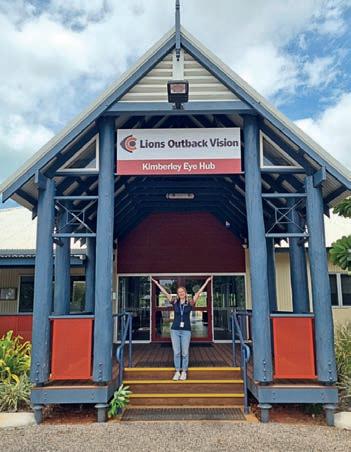
Orthoptist Renee Rich welcoming new clients to Vision Australia's new low vision services at the Kimberly Hub in Broome.
Images: Virginia McDonald.
and confidence to live their lives the way they choose.
IMPACT ON THE COMMUNITY
The collaboration between Vision Australia and Lions Outback Vision in establishing the Kimberley Eye Hub has made significant strides in providing accessible eyecare and vision loss rehabilitation in Broome and remote areas of Western Australia. It’s not just about treating eye conditions, but also empowering individuals with sight loss to achieve their personal and professional goals.
In summary, the partnership is a practical response to the need for accessible eyecare and vision rehabilitation in remote areas, demonstrating the tangible benefits of bringing specialised services to communities for lifelong outcomes.
ABOUT THE AUTHOR: Virginia McDonald is Vision 2020 Australia’s clinical development leader and orthoptist with 30 years experience. She is passionate about leading excellence, education and innovation in blindness and low vision services, especially in regional remote communities.
ORTHOPTICS AUSTRALIA is the national peak body representing orthoptists in Australia. OA’s Vision is to support orthoptists to provide excellence and equity in eye health care. Visit: orthoptics.org.au
INSIGHT April 2024 69
VIRGINIA MCDONALD
ADVERTISING STANDARDS: QUESTIONS TO ASK YOURSELF
A UK EYECARE PRACTICE FOUND ITSELF IN TROUBLE FOR BREACHING ADVERTISING STANDARDS WITH AN ARTICLE ON ITS WEBSITE PROMOTING COLOUR TESTING CHILDREN FOR DYSLEXIA. WOULD THE SAME RESULT APPLY IN AUSTRALIA?
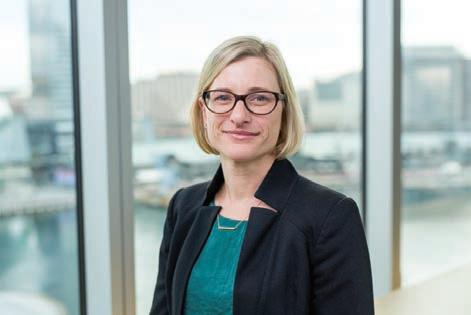
"PRACTITIONERS CAN ONLY USE THE TERM ‘SPECIALIST’ IF THEY HOLD REGISTRATION IN AN APPROVED RECOGNISED SPECIALTY."
he complaint (mentioned above) involved an article promoting a testing service to detect dyslexia, which was said to contain misleading claims about the causes of dyslexia, and about the eye test’s ability to detect dyslexia in children.
The article, titled ‘Dyslexia Colour Testing from the Experts’, claimed “some believe dyslexia is caused by visual stress” and that “dyslexia visual stress is a condition contributing to reading di culties”. It encouraged readers to call the practice to book a “full and comprehensive dyslexia test” conducted by “dyslexia colour test specialists”.
The practice denied the article was misleading as it acknowledged dyslexia had its core in disruption of language processing. The practice also sought to rely on saying that the article had largely been written by the manufacturers of the colour testing equipment who had verified its accuracy.
HEALTHCARE ADVERTISING IN AUSTRALIA
As outlined in a previous article, Australian law restricts what can be included in advertisements for regulated health services. Healthcare advertising may be covered by the Health Practitioner Regulation National Law, Australian Consumer Law and Therapeutic Goods Advertising Code 2021.
In Australia, similar questions would be asked about website materials including:
1. Who controlled or approved the advertising content?

treatment. That includes website articles, such as the one in this case.
3. Are claims misleading or deceptive?
Your advertising should be clear and set realistic expectations of risks, benefits and outcomes. Avoid any claims that are inflated or likely to mislead or deceive the public.
Disclaimers such as suggesting a service “may” assist with or treat a particular condition will not overcome a breach if the overall e ect is misleading. In this case, the regulator concluded readers were likely to understand that visual stress caused or contributed to dyslexia, the test being o ered could formally diagnose dyslexia, and that “dyslexia glasses” could treat or reduce the impact.
All practice staff and healthcare companies are responsible for advertising they commission, control or approve to be published.
Practitioners, practice managers and sta , and healthcare companies are responsible for any advertising they commission, control or approve to be published. They may be prosecuted if advertising breaches the law. As in this case, you are responsible for your advertising even if you use an agency or other third party. Make sure you know how to check any advertising created on your behalf. Ahpra’s 'Advertising hub' includes a suite of resources and guidance to help with this process and ensure you understand your obligations.
2. Is it information or advertising?
Under Australian law, information brochures or materials are considered advertising if they promote a health service provider or aim to encourage people to choose a particular practitioner or
4. Are claims based on acceptable evidence?
You must be able to substantiate claims about a condition or the potential benefits of a treatment with acceptable evidence. As in this case, if you say that “some believe”, or “there is evidence to suggest”, you need to back this up with good quality evidence.
Ahpra’s 'Acceptable evidence in health advertising' page includes detail on how to assess whether evidence will be considered acceptable.
5. Does the material encourage indiscriminate use of services?
It is appropriate to encourage good healthcare, including regular check-ups. However, healthcare advertising must not encourage patients to seek treatments that may not be clinically necessary.
Materials that are seen to promote tests with questionable benefits may breach the prohibition on encouraging indiscriminate use of services.
6. Does it claim specialist expertise? Be careful how you discuss practitioners’ expertise. Practitioners can only use the term ‘specialist’ if they hold registration in an approved recognised specialty. It is appropriate to highlight their expertise, but explain what that is based on, for example years of experience, particular practice focus, or postgraduate training.
WHEN ADVERTISING IS IN BREACH
Ahpra encourages voluntary compliance with advertising restrictions and expects healthcare practices to ensure their advertising is compliant before publishing it.
If Ahpra considers advertising breaches the law, it will advise the practitioner or practice of their concerns and require them to amend the advertising within a certain timeframe.
If breaches are not corrected, companies may be fined up to $120,000 and individuals up to $60,000 for each breach. This applies across Australia, except in Western Australia where, at the time of writing (amendments to the penalties are currently before parliament), the penalties remain $5,000 for individuals and $10,000 for companies.
70 INSIGHT April 2024 MANAGEMENT
ABOUT THE AUTHOR: Ruanne Brell is a senior legal advisor in the Advocacy, Education and Research team at Avant with more than 20 years’ experience in health and medical law.
Image: fizkes/Shutterstock.
Image: Avant
CURING NOT TREATING AN EYE HEALTH CRISIS
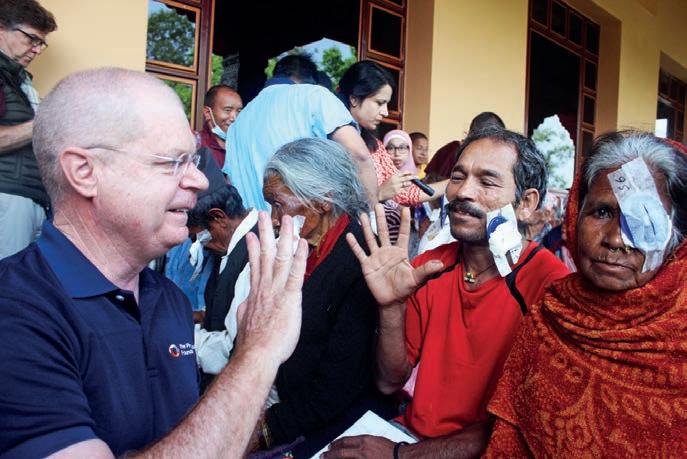 BY IAN WISHART
BY IAN WISHART
Working in eye health can feel a bit like running for a bus that you can’t catch. Often the problem is accelerating faster than the pace of our sector.
This is true for avoidable blindness and vision loss. By 2050, there is expected to be 1.7 billion people living with some form of avoidable vision loss. And 90% of these people live in low-to-middle income countries.
Although Australia is a developed country, we aren’t excluded from this problem. Aboriginal and Torres Strait Islander people are still three times more likely to be blind or vision impaired than other Australians.
In response to this growing global crisis, The Fred Hollows Foundation has unveiled a bold new five-year strategy.
It’s our collective call to action for the next five years, which describes the eye health situation we face, what we need to do to tackle it, and how we can get the job done.
The foundation’s 2024-2028 strategy represents a major shift in the way we will carry out our sight-restoring work.
During the past 31 years, our organisation has played a critical role in accelerating the availability of good eye health. It has addressed significant blindness and vision loss by restoring sight to more than three million people in 25 countries.
However, if we wish to address the growing burden of disease and multiply our impact over the next five years, then we must do things di erently.
Treating cataract, refractive error and
eliminating trachoma is important and will continue to be a part of our work.
But the central premise of this strategy is that creating sustainable systems in the countries where we work will deliver greater impact than concentrating only on immediate service delivery.
So how do we achieve sustainable health systems?
Broadly, the approach will include strengthening our advocacy and influence, leading greater collective action and focusing on the major barriers to eye health, such as critical health workforce shortages and eye health data.
Underpinning this new strategy are three high-level goals.
The first goal is to strengthen Integrated People Centred Eye Care (IPEC) to protect and restore sight to those most in need. To achieve this, The foundation will work with partners to apply IPEC best practice leading to increases in coverage and service.
It will champion IPEC’s call for integration across health and into other sectors, including education and industry, which will enable greater progress on prevention, screening, and treatment.
This will see us securing political commitment and lobbying governments to integrate eye health into broader health plans.
The second is to Advance Transformative Solutions that address key eye heath challenges. Removing key barriers, finding e ciencies, increasing quality and eliminating challenges can create transformative change in eye health systems.
For example, enriching the quality of eye health data can drive e ciency, productivity,
and better insights. If you can’t accurately measure the problem, you can’t address it.
The third goal aims to tackle the challenge of scale by elevating eye health as a social, economic and development issue to unlock political will and resourcing.
The foundation will make the case in health and other sectors that eye health is a social, economic, and development issue.
For too long, eye health has been thought of as a less critical development issue. We are looking to change the perspective on this in a significant way. The consequences of not meeting the needs of people with vision impairment are devastating.
Children with vision impairment can experience delayed motor, language, emotional, social, and cognitive development. This means they are often left behind at school, limiting their educational opportunities, and future job prospects.
Adults with vision impairment can have lower quality of life, lower rates of workforce participation and productivity, and higher rates of depression and anxiety. Older people are more at risk of falls.
O ering immediate service delivery to address the rapid acceleration of avoidable blindness can only go so far.
We need our work to empower local workforces, strengthen local health systems and provide sustainable solutions to development issues. It’s about addressing the problem, not just the symptom.
Only then will we have a fighting chance at ending the global eye health crisis.
NOTE: The Fred Hollows Foundation's 2024-2028 strategy can be read in full at www.hollows.org/au/reports/ five-year-strategy-2024-2028
Name: Ian Wishart
Qualifications: BSc, DipEd, Executive MBA, GAICD, AsiaLink Leadership Program graduate.
Affiliations: The Fred Hollows Foundation
Position: CEO
Location: Melbourne
Years in industry: 35 years (in not-for-profit sector)
CREATING SUSTAINABLE SYSTEMS IN THE COUNTRIES WHERE WE WORK WILL DELIVER GREATER IMPACT THAN CONCENTRATING ONLY ON IMMEDIATE SERVICE DELIVERY.
INSIGHT April 2024 71
SOAPBOX
Ian Wishart (left) says for too long eye health has been thought of as a less critical development issue. Image: Fred Hollows Foundation.
CALENDAR EVENTS
To list an event in our calendar email: myles.hume@primecreative.com.au

APRIL 2024
AUSTRALIAN VISION CONVENTION (AVC)
Gold Coast, Australia
6 – 7 April optometryqldnt.org.au
SILMO SINGAPORE
Singapore
24 – 26 April silmosingapore.com/
MAY 2024
SQUINT CLUB MEETING 2024
Melbourne, Australia
3 – 4 May ranzco.edu/events
ARVO 2024
Washington, US
5 – 9 May arvo.org
OSHOW24
Sydney, Australia
17 – 18 May o-show.com.au
SUPER SUNDAY 2024
Sydney, Australia
19 May (immediately after OSHOW24) vision@oaansw.com.au
JUNE 2024
AUSTRALIAN SOCIETY OF OPHTHALMOLOGISTS EXPO 2024
Sydney, Australia
1 – 2 June asoeye.org
THE ART OF OCULAR IMAGING (AOI) CONFERENCE 2024
Sydney, Australia
8 – 9 June artofocularimaging.com.au
GENEYE 2024
Melbourne, Australia
19 – 21 June geneye.org.au
JULY 2024
NORTH QUEENSLAND VISION CONFERENCE 2024
Cairns, Australia
6 – 7 July optometryqldnt.org.au/nqv
AUSCRS 2024
Hamilton Island, Australia
24 – 27 July auscrs.org.au

AUGUST 2024
OPHTHALMOLOGY UPDATES!
Sydney, Australia
24 – 24 August ophthalmologyupdates.com
SEPTEMBER 2024
SPECSAVERS CLINICAL CONFERENCE (SCC) 2024
Gold Coast, Australia
14 – 15 September specsaversclinicalconference.com.au
NOVEMBER 2024
RANZCO CONGRESS 2024
Adelaide, Australia
1 – 4 November ranzco2024.com
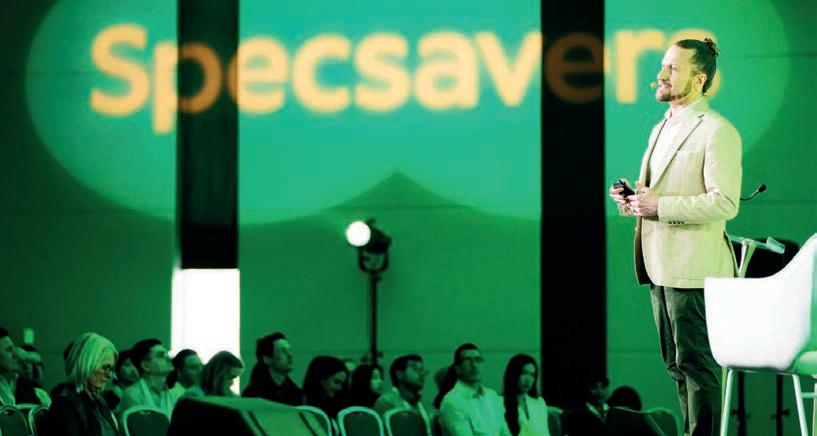
72 INSIGHT April 2024
GENEYE founder Dr Jacqueline Beltz meditating at a previous meeting. The event is returning to the Royal Victorian Eye and Ear Hospital in June 2024.
Dr Neil Miller, a global neuro-ophthalmology expert, presenting at the 2023 RANZCO Congress. The meeting heads to Adelaide in November 2024. Image: Prime Creative. Media.
Specsavers ANZ clinical services director Dr Ben Ashby at SCC 2023. The conference is being held on the Gold Coast in September 2024. Image: Specsavers.
CHANGING LIVES THROUGH BETTER SIGHT AND HEARING
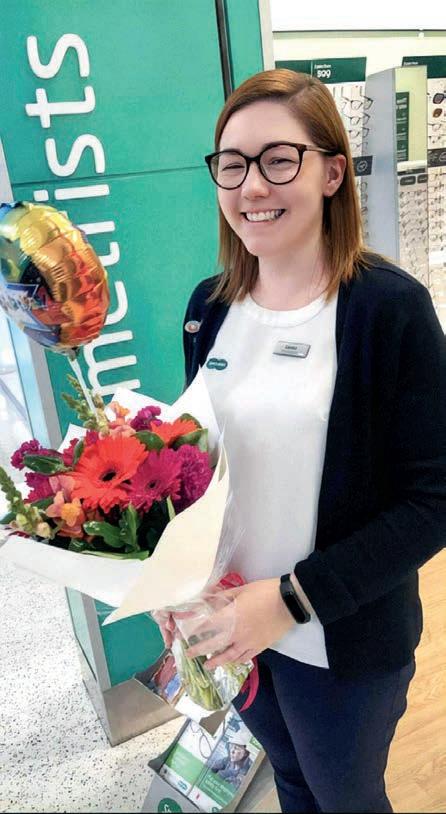
SPECSAVERS STORIES: GENNA MORRISON
WHY DID YOU PURSUE A DISPENSING CAREER?
My journey at Specsavers began as an optical assistant, and I was immediately captivated by the crucial role dispensing opticians play within the practice. I was fortunate to work alongside four exceptional registered dispensing opticians who nurtured my curiosity from the outset and provided unwavering support throughout my time as an optical assistant and dispensing optician student. My fascination stemmed from witnessing the profound impact they had on patients’ lives by empowering them with better vision, meticulously pairing each individual with eyewear and lenses tailored to their visual needs and lifestyles. Moreover, I was inspired by the dispensing opticians’ remarkable problem-solving abilities, whether it was salvaging seemingly irreparable spectacles or coming up with innovative solutions for frame fit or lens options.
HOW DID YOU COME TO WORK AT SPECSAVERS?
I am academically trained in fine arts, however finding a job in the field proved di cult, and I spent several years working general retail jobs after completing my Bachelor of Fine Arts in 2009. Being a naturally inquisitive person who is always looking to learn more and expand my skillset, I found life in retail mundane. The healthcare aspect of working at Specsavers piqued my interest, paired with my already honed retail skills, I felt this was an area I could grow and challenge myself in – so I jumped at the chance to apply when the opportunity arose.
WHAT WAS YOUR FIRST ROLE WITHIN THE BUSINESS?
An optical assistant. Early on this entailed greeting customers, answering phones, booking eye exams,
In a few short years, Specsavers has achieved market leadership in Australia and New Zealand with more people choosing to have their eyes tested and buy their prescription eyewear from Specsavers than any other optometrist. To learn more about these roles, or to put your hand up for other roles as they emerge, please contact us today:
Joint Venture Partnership opportunities enquiries: Kimberley Forbes kimberley.forbes@specsavers.com or 0429 566 846
Australia employment enquiries: Marie Stewart – Recruitment Consultant marie.stewart@specsavers.com or 0408 084 134
Locum employment enquiries: Matthew Cooney matthew.cooney@specsavers.com or 0447 276 483
New Zealand employment enquiries: Chris Rickard –Recruitment Consultant chris.rickard@specsavers.com or 0275 795 499
Graduate employment enquiries: apac.graduateteam@specsavers.com
answering queries, preliminary testing, eventually moving into frame styling, frame adjustments and repairs, interpreting spectacle prescriptions and finding the appropriate lenses.
SINCE THEN, WHAT GROWTH OPPORTUNITIES HAVE PRESENTED THEMSELVES?
I have been fortunate to complete many development opportunities, the first of which was my Cert IV in Optical Dispensing in 2014. In 2015, I left Specsavers to work as a dispensing optician at an independent practice for six years. While this was an invaluable opportunity to build my dispensing skills and knowledge, I always felt there was something missing, I needed more for my career development. I was eager to pursue further development opportunities with Specsavers – so in 2021, I returned. In 2022 I completed the Supervisor Program, and early this year I was promoted to store manager. Midway through 2023 I enrolled in the 38th intake of the Pathway Program, which I’m happy to share I completed. In the same week I also took on the role of executive council for the Association of Dispensing Opticians of New Zealand (ADONZ).
WHAT EXCITES YOU MOST ABOUT TURNING UP FOR WORK EACH DAY?
I am most excited about the opportunity to make a tangible di erence in people’s lives by restoring clear vision and empowering individuals with confidence. The blend of healthcare and customer service allows me to tailor solutions to each patient’s unique needs, and I am energised by the collaborative nature of my work and the ever-evolving landscape of optics. My work is not just a job, but a calling.
ALL SPECSAVERS STORES NOW WITH OCT
$20k bonus to refer a friend to join Specsavers in regional QLD! Specsavers are expanding our Optometry team in QLD’s far north. Home to rainforests, beaches, markets and a vast array of great cafes, bars and restaurants along with access to the Great Barrier Reef, there is something to suit everyone. If you think Specsavers is a great place to work and you know someone who believes in providing best value eye care, exceeding customer’s expectations and who would like to be part of our mission to change lives through better sight then you could earn up to $20k by simply providing a name and number of an interested optometrist to the Specsavers Recruitment Services team.
Optometrist opportunity – Specsavers Dunedin, NZ
Seeking two optometrists to join our extraordinary team at Specsavers Dunedin, they are in fact our store of the year. We o er cutting-edge technology, a friendly environment, and a commitment to professional growth. Embrace the breathtaking beauty of the region and enjoy a perfect work-life balance. Don’t miss this incredible opportunity to go with a friend and be part of Specsavers. Apply now and unlock a rewarding journey.
Optometrist opportunities o ering up to $170k packages in QLD!
Looking for great weather all year round? Specsavers are expanding our Optometry team in QLD’s far north. Home to rainforests, beaches, markets and a vast array of great cafes, bars and restaurants along with access to the Great Barrier Reef there is something to suit everyone. You’ll work with market-leading equipment – including OCT free for all patients, be supported by experienced retail teams and have access to excellent opportunities for career development. Part or full-time considered. Great salary including relocation support, birthday/volunteer leave, Specsavers Perks sta discount program, free glasses and family and friends discount voucher each year.
Graduate Opportunities
The Specsavers Graduate Team has many exciting graduate opportunities throughout Australia and New Zealand. Specsavers is the largest employer of graduate optometrists and we have continued to develop our comprehensive two-year Graduate Program which provides newly qualified optometrists with a dedicated mentor, support network, and structured program to assist you in your development.
Regional Locum Opportunities
Specsavers are seeking experienced optometrists to locum across regional stores in Australia, allowing you to choose your own days and locations. This is an opportunity to combine work and travel. We have a variety of locum work across Australia, starting now and going throughout 2024. Whether you’re locally based and looking to fill up your diary with that regular one day a week or to escape the cold and work in the sun for a few weeks, Specsavers has you covered with all travel and accommodation provided and booked for you.
spectrum-anz.com
Specsavers YOUR CAREER, NO LIMITS Visit
Image: Specsavers
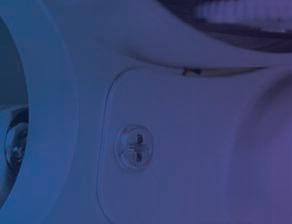








ON THE MOVE



monthly bulletin to keep the Australian ophthalmic sector updated on new appointments and personnel changes, nationally and globally.
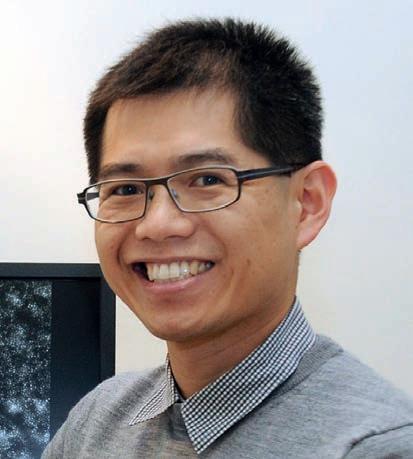


new Editor-in-Chief of Clinical and Experimental

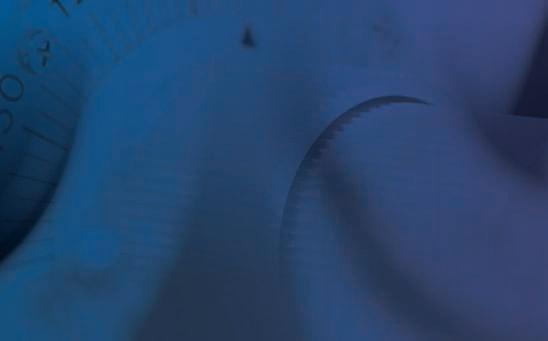

. Trained in vitreoretinal surgery at Moorfields Eye Hospital in London, he returned to LEI in 2010 to establish the Ocular Tissue Engineering Laboratory. For more than 10 years, he has been at the forefront of LEI’s work to understand dry age-related macular degeneration, inherited retinal diseases, natural history of disease progression, genotypephenotype correlations, structure-function associations and multimodality retinal imaging. He also has made major contributions on the application of stem cell technology for rare retinal diseases.


to her public appointment, she practises at Northern Sydney Cataract, Eye Associates, Retina Associates and iVision Clinic. Au is passionate about providing the highest standard of care to all patients and said she was looking forward to teaching the next generation of ophthalmologists.





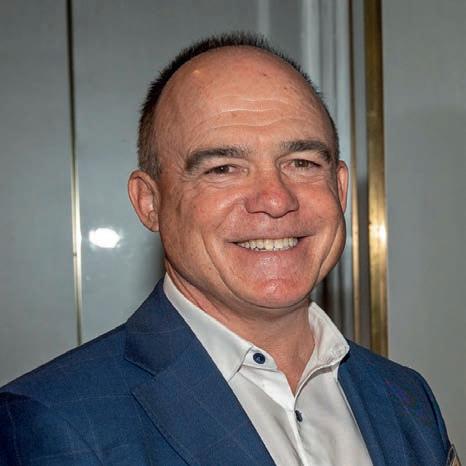
financial services experience with skills in strategy development, governance and corporate advice.
“The Vision 2020 Australia Board now has its full complement of directors, which is representative of our diverse sector and provide the skills, expertise and characteristics to further drive our strategic aims,” the organisation stated.
DO YOU HAVE CAREER NEWS TO SHARE?

EMAIL EDITOR MYLES HUME AT MYLES.HUME@PRIMECREATIVE.COM.AU TO BE FEATURED.

 Optometry Victoria, and currently holds the position of Sight for All Vice Chair.
Optometry Victoria, and currently holds the position of Sight for All Vice Chair.
CAREER People
Image: Ashford Advanced Eye Care.
Image: Vision 2020 Australia.
Image: Lions Eye Institute.
Image: Vision 2020 Australia.
Image: North Sydney Cataract.
74 INSIGHT April 2024
Image: Vision 2020 Australia.








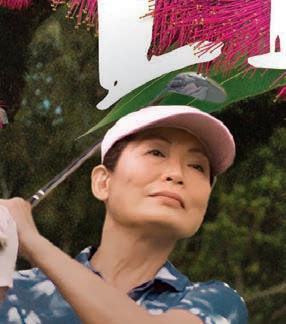


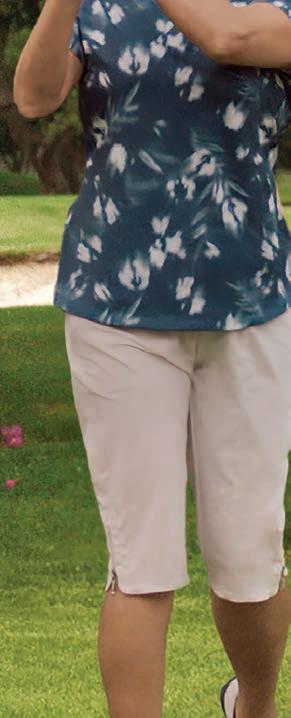




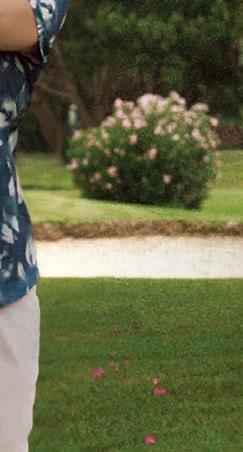












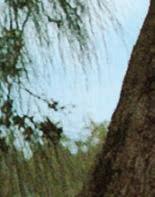


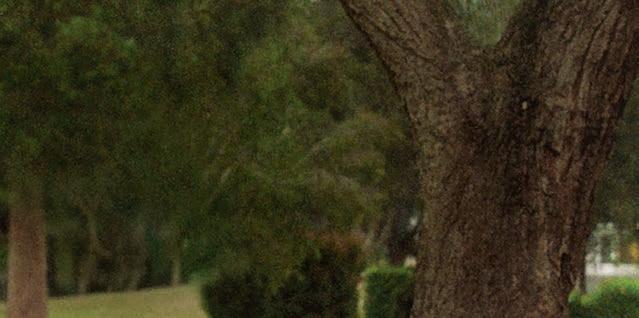





© 2024 Alcon Laboratories Pty Ltd. AUS: 1800 224 153; Auckland NZ: 0800 101 106. ANZ-CLV-2400023 With the #1 most implanted Trifocal and EDOF IOLs in the world, PanOptix® and Vivity®†*1,2 PanOptix •>2.2 million implants worldwide**† Vivity •>1 million implants worldwide† • The first and only extended depth of focus IOL with X-WAVE Technology#3-8 Now available as a part of the Clareon Collection Visit MyAlcon.com.au for more information †Based on worldwide sales of AcrySof and Clareon IOLs. *Based on worldwide IOL unit sales, 2022. **Based on global Clareon PanOptix and AcrySof PanOptix sales 2021-2022. #Based on in vitro examinations of glistenings, surface haze and SSNGs; as compared to Clareon CNA0T0, TECNIS ZCB00, TECNIS OptiBlue, Eternity W-60 and enVista MX60; n=30 per group; p<.001 1. Alcon data on file, REF-22137, 2023. 2. Market Scope 2023 IOL Market Report. 3. Clareon Vivity IOL Directions for Use. 4. Alcon Data on File. US Patent 9968440 B2. 15 May 2018. 5. Alcon Data on File. TDOC-0055576. 09 Apr 2019. 6. Bala C, et al. Multi-country clinical outcomes of a new nondi ractive presbyopia-correcting intraocular lens. J Cataract Refract Surg. 2022;48(2):136-143. 7. Werner L, Thatthamla I, Ong M, et al. Evaluation of clarity characteristics in a new hydrophobic acrylic IOL in comparison to commercially available IOLs. J Cataract Refract Surg. 2019. 8. Alcon Data on File. A01970-REP-211731. 12 Jan 2022. LET ALCO N 'S CLAREON®CO ECTION HELP YOU PANOPTIX | PANOPTIX TORIC | VIVITY | VIVITY TORIC| MONOFOCAL | TORIC
BE PART OF A GLOBAL COMMUNITY DEDICATED TO VISION
Join OPSM and connect with professionals worldwide. Collaborate on a global scale to share insights, experiences, and best practices. Contribute to an international network that is passionate about enhancing vision care globally.
ACCELERATE YOUR CAREER ASPIRATIONS WITH OPSM. Visit opsm.com.au/careers today.



























































































































































































































































































































































































 Insight readers can scan the QR code or visit insightnews.com.au/cpd/
Insight readers can scan the QR code or visit insightnews.com.au/cpd/




























































































































































































 BY IAN WISHART
BY IAN WISHART
































 Optometry Victoria, and currently holds the position of Sight for All Vice Chair.
Optometry Victoria, and currently holds the position of Sight for All Vice Chair.






































